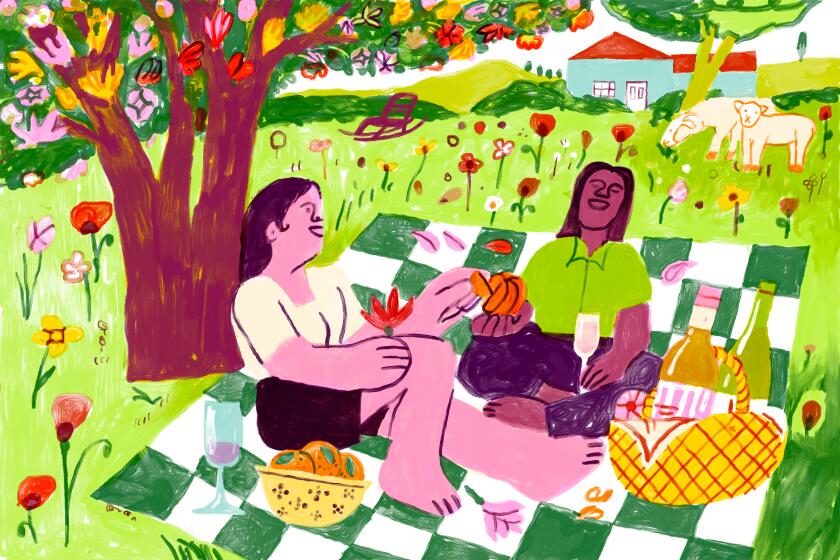Illustration by Luke Lucas / For The Times; photography by Mariah Tauger / Los Angeles Times
These are the 101 best restaurants in L.A. of 2021
- Share via
After nearly two brutal years fighting for its survival, the soul of Los Angeles dining remains resilient.
It can be hard to move past the heartbreaking losses, and questions about the future linger unanswered, but the restaurant terrain is feeling familiar again. Reservations for the hottest openings and the long-running blockbusters require planning a month ahead. Lines for tacos piled with al pastor shaved from the trompo trail down otherwise quiet blocks; the same goes for diners seeking boba and smoked brisket and Korean-style hot dogs.
The equation holds: Southern California’s superior agriculture combined with the city’s miraculous pluralism and creative spirit make the region one of the world’s most exciting places to eat.
Restaurant critic Bill Addison and columnist Jenn Harris rank the 101 best restaurants in Los Angeles.
With apologies to my editors, I don’t really believe in the idea of “bests” when it comes to the 101 project. Yes, this is a guide to excellence. It also is meant to capture, as much as a finite number can, the overall breadth and spirit of dining in L.A. Some well-established names and places appear (consider it a nudge to patronize them if you love them) and so do some fresh entrants: Look for Ammatoli in Long Beach, Flavors From Afar in Little Ethiopia, Sushi Kaneyoshi in Little Tokyo and the roving Los Dorados among them.
The number of stories to tell about L.A.’s food culture is limitless, and to that end three of my favorite writers contributed essays to extend the narrative. Please read Carolina A. Miranda on the designer whose cart may change the way street vendors sell tamales; Donovan X. Ramsey on the evolution of a tasting-menu series, heavy with history, that was featured on Netflix’s “High on the Hog”; and Esther Tseng illuminating an organization that supports restaurant workers who are part of the city’s varied, and often invisible, Indigenous communities.
Jenn Harris joins me in naming some of our very favorite places for imbibing (alcohol and otherwise), and I also highlight several enduring pop-up operators whose indie moxie matches their delicious cooking.
Whether you’re picking up takeout or settling in at a crowded counter, remember to treat those who feed us in these unprecedented times with kindness and patience. And welcome back to the table.
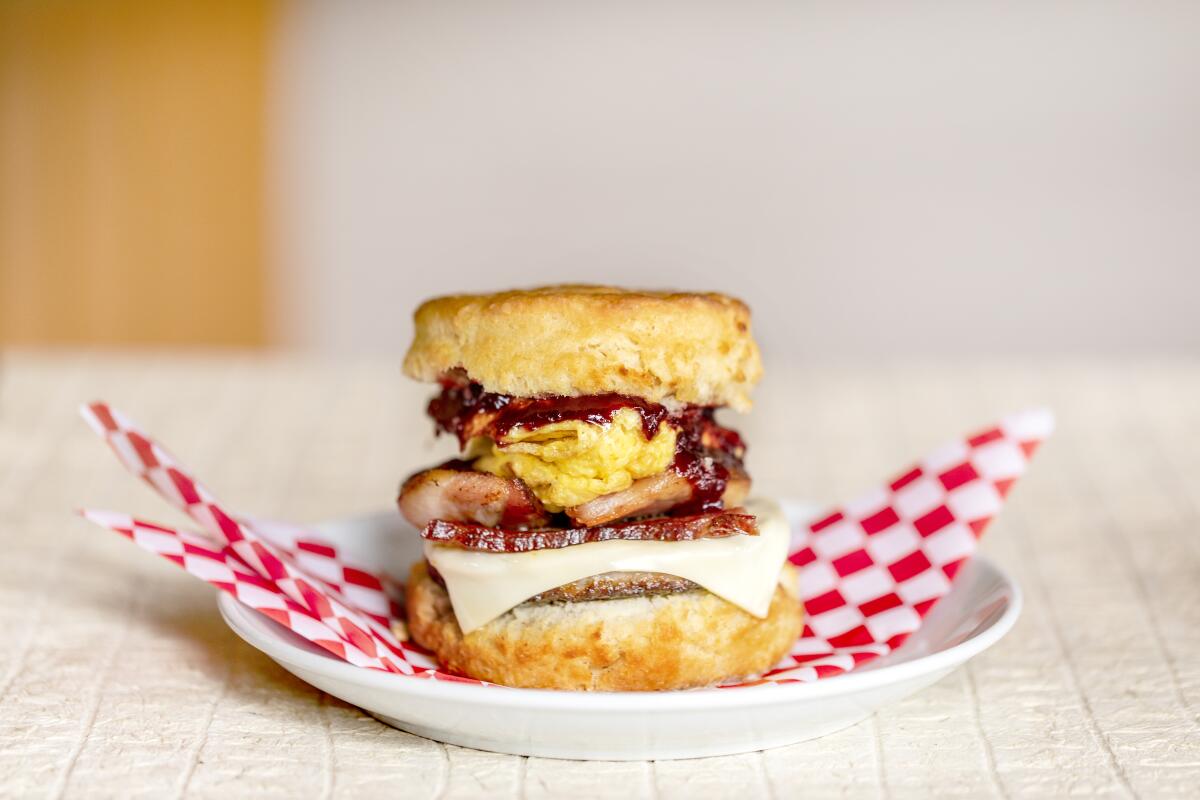
All Day Baby
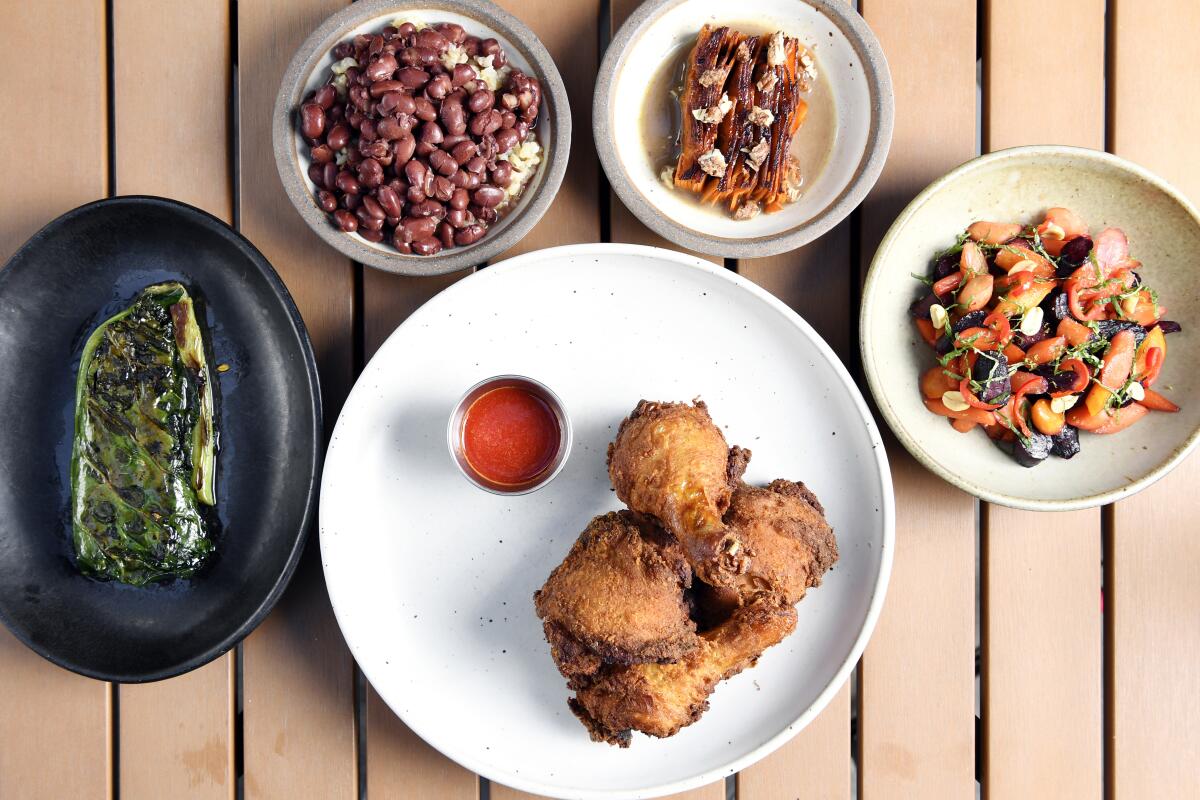
Alta Adams
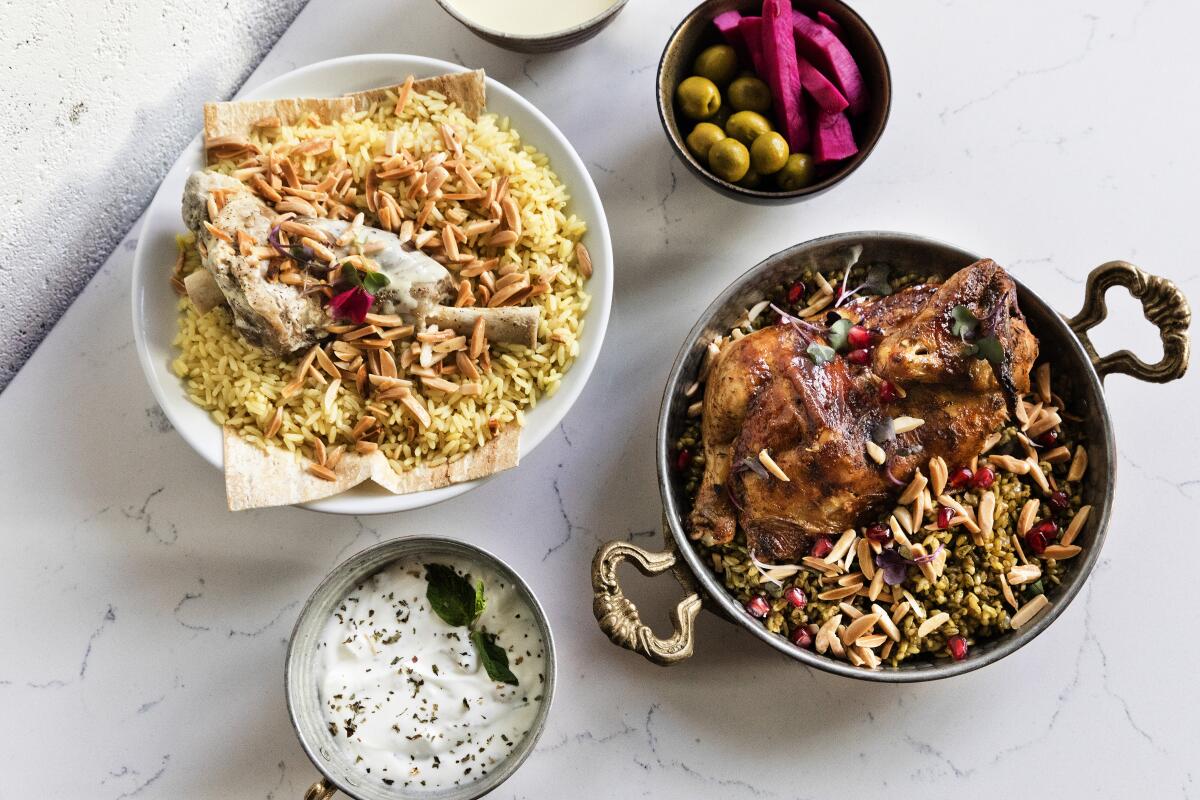
Ammatolí
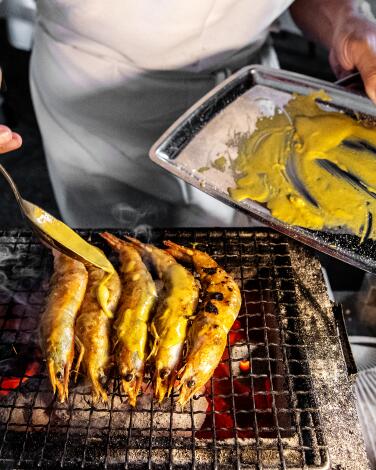
Anajak Thai
Then there are Anajak’s Thai Taco Tuesdays. The menu changes weekly and, beyond the namesake dish, he might crank out kampachi tostadas with Hokkaido ikura, spicy drunken noodles and a halloumi salad flickering with mint. He frequently seeks out collaborations; a recent one with Eagle Rock cheese shop Milkfarm witnessed molten raclette being shaved in outrageous globs over the fried chicken. Half the chefs in town show up to eat at these events. And on weekends Pichetrungsi has been creating provocative, reservations-only omakase meals (using the Japanese form to reconsider Thai flavors) set up in the alley behind the restaurant. The man must be exhausted, but he is an inspiration.
Read more about Anajak Thai:
Anajak Thai is our 2022 Restaurant of the Year
Why we chose Anajak Thai as Restaurant of the Year
Your next great L.A. meal will probably be a tasting men
What makes an L.A. restaurant?
How this L.A. chef made Thai Taco Tuesday a thing
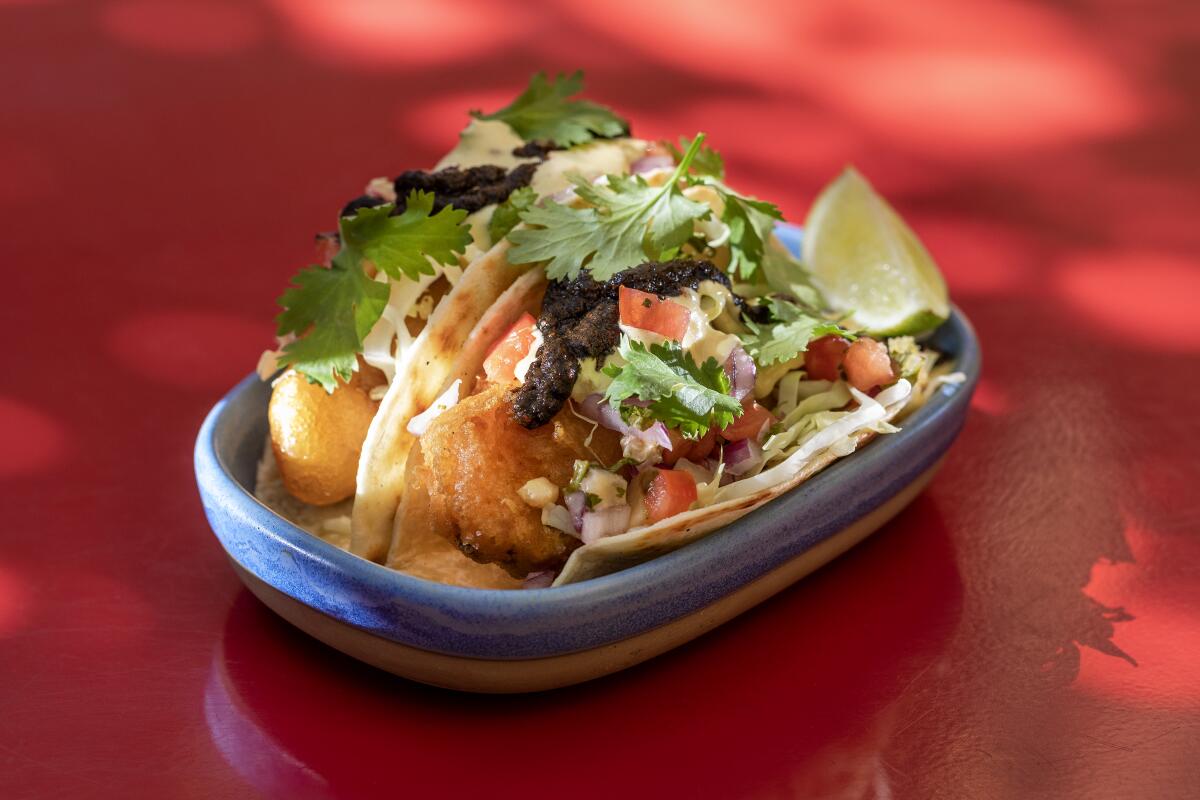
Angry Egret Dinette
He’s returned to his brilliant ways with tacos as well; they’re canvases for fried fish slicked with habanero aioli or cochinita pibil blasted with chile arbol or bone marrow or … it’s hard to keep up, and the online carryout menu usually doesn’t list all the day’s dishes. Best to show up and see what’s available. Heads up that he’s branched out into dinner on Fridays and Saturdays, with table service under strings of lights, and the menu (maybe oysters with uni, maybe a wild take on a pupu platter) is even more unpredictable and compelling.
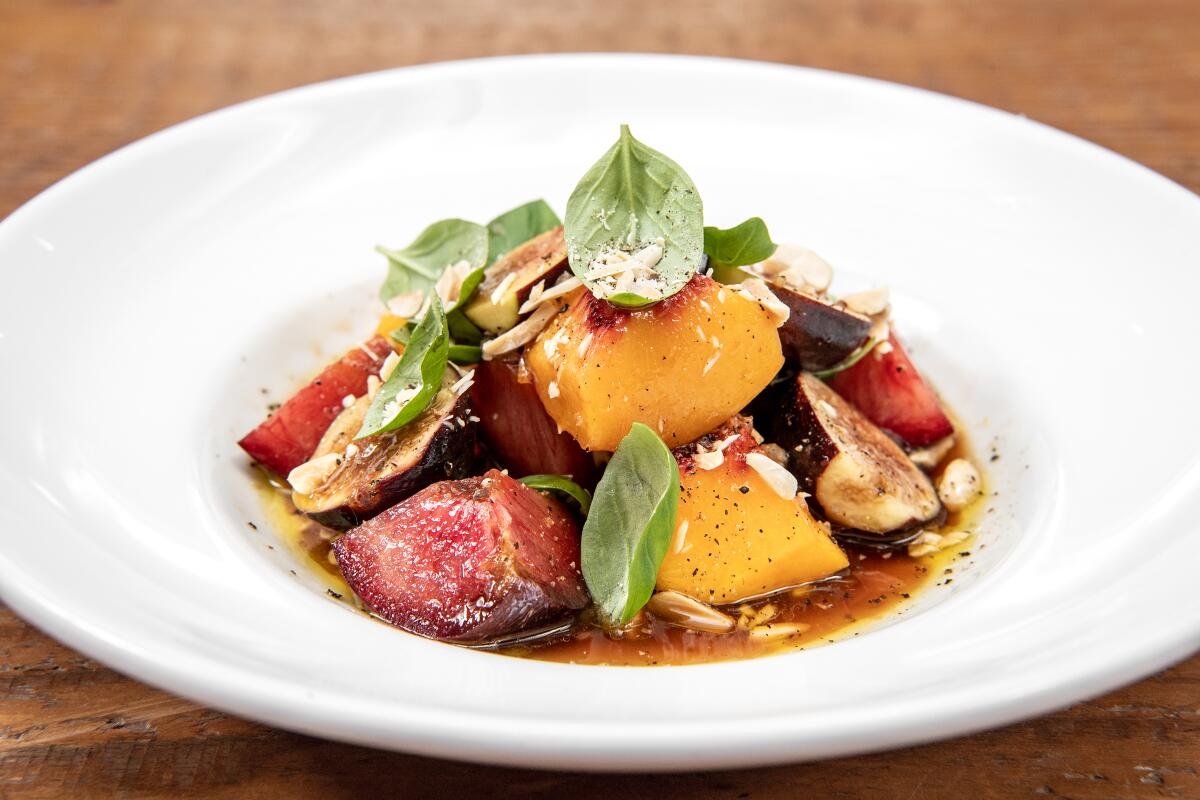
Antico Nuovo
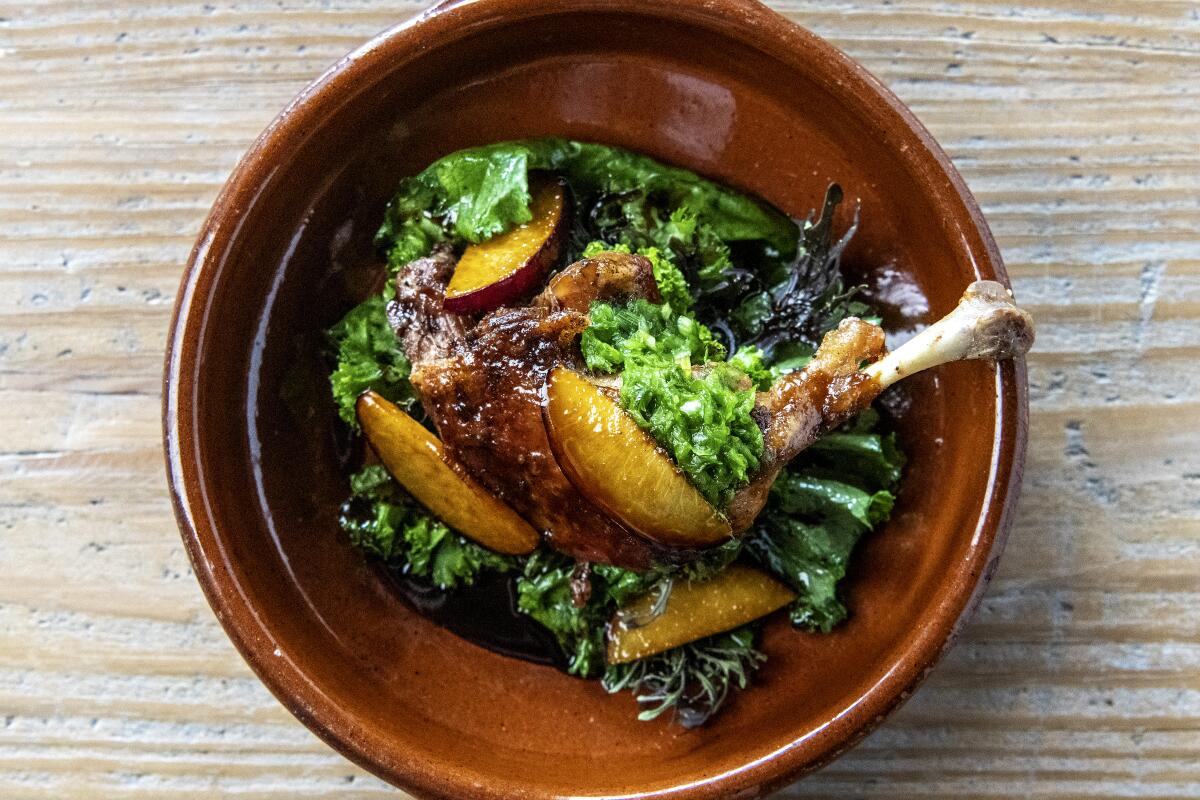
A.O.C.
Both menus follow the communal, small-plates ethos that Goin and Styne led the charge to codify in Los Angeles. The bounty is Californian; the oomph in the flavors draws on cuisines from around the continents-spanning Mediterranean Sea. Harissa slashes through the richness of beef cheeks. Za’atar, sumac and preserved-lemon labneh surround lamb chops like a flashing aura. You can trace the calendar months through the desserts: winter apple galette perfumed with the smoke of a wood oven; airy doughnuts with roasted peaches and berries in the summertime.
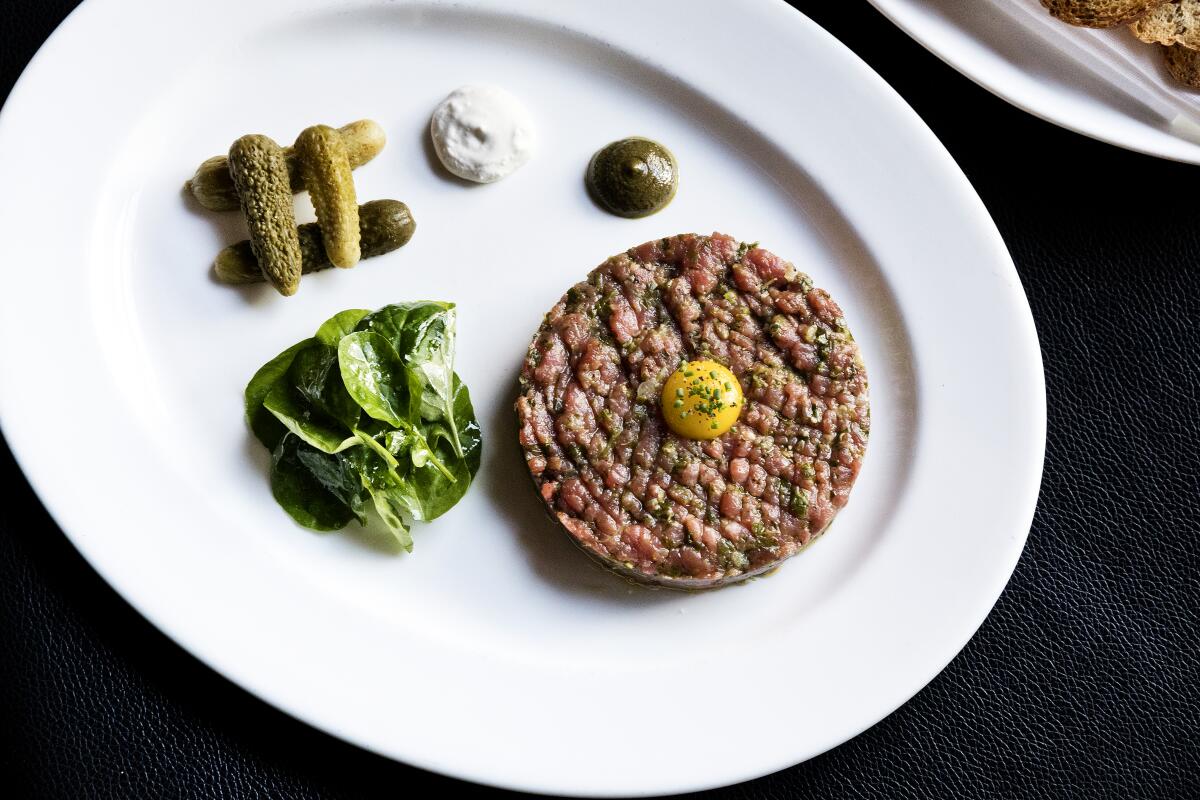
The Arthur J
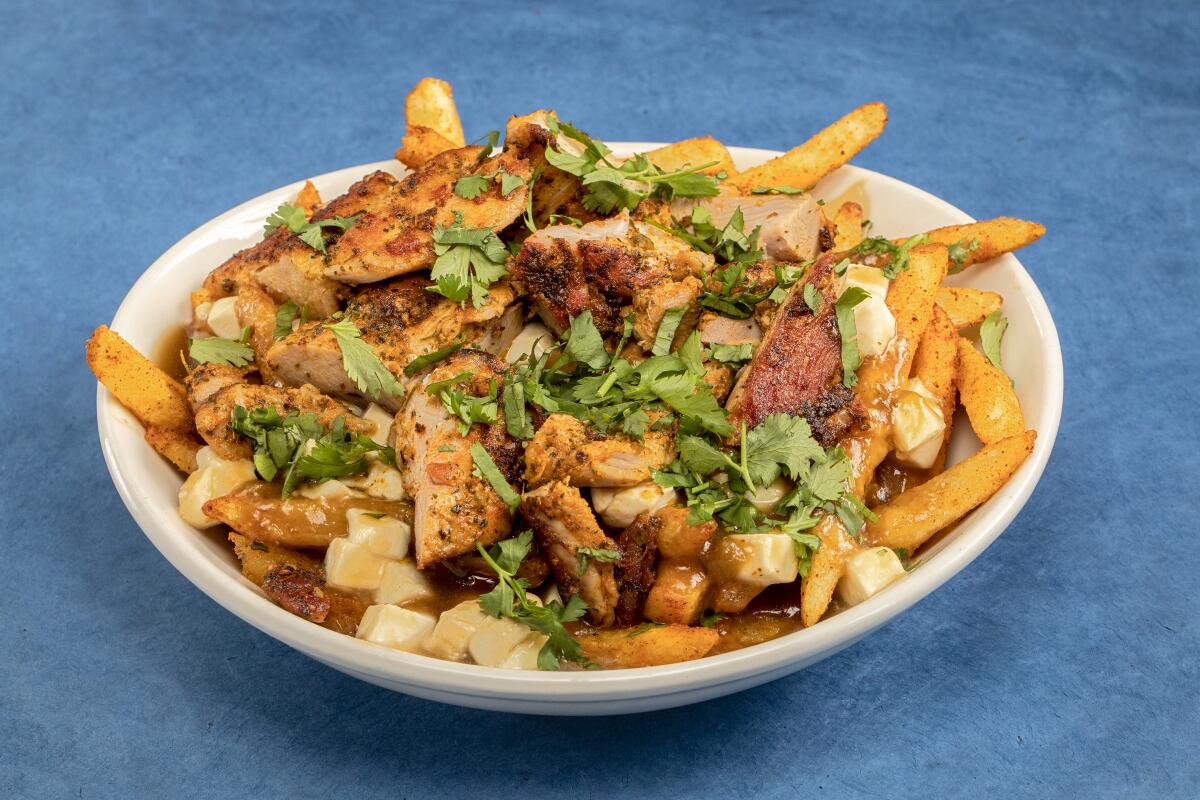
Badmaash
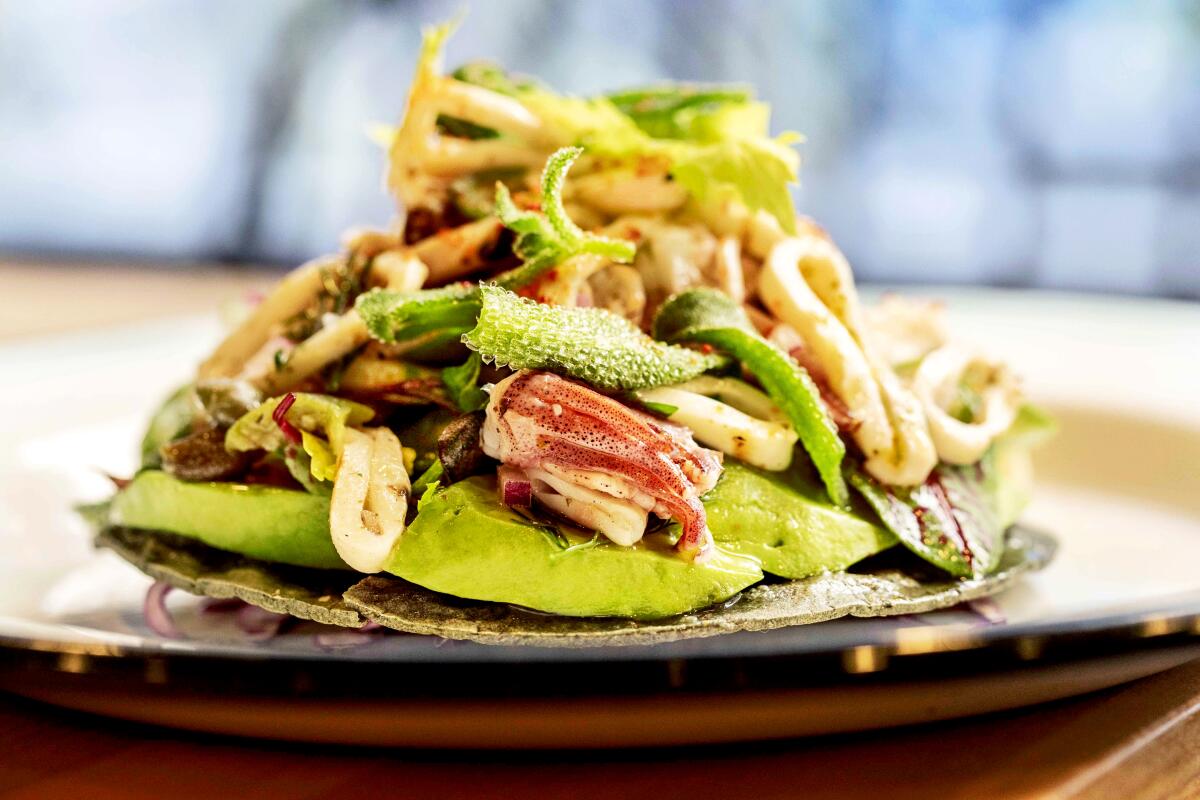
Bar Amá
Also, the menu is rife with vegetables. Salads of tomato and plum, or figs and nectarines sprinkled with feta and salsa seca, signaled the end of summer during a meal in September. Shishito peppers pinged with za’atar and roasted cauliflower flecked with cilantro pesto are mainstays. In the midst of the city’s birria craze, Bar Amá puts forth an herbaceous mushroom variation. Partly these dishes channel aspects of two Centeno restaurants, Amá•cita and Bäco Mercat, that closed during the COVID-19 pandemic. They also express his overall shift toward more plant-based recipes. The evolving Tex-Cal-Mex equation reckons where he came from with finding a fresh way forward. Who among us can’t relate?
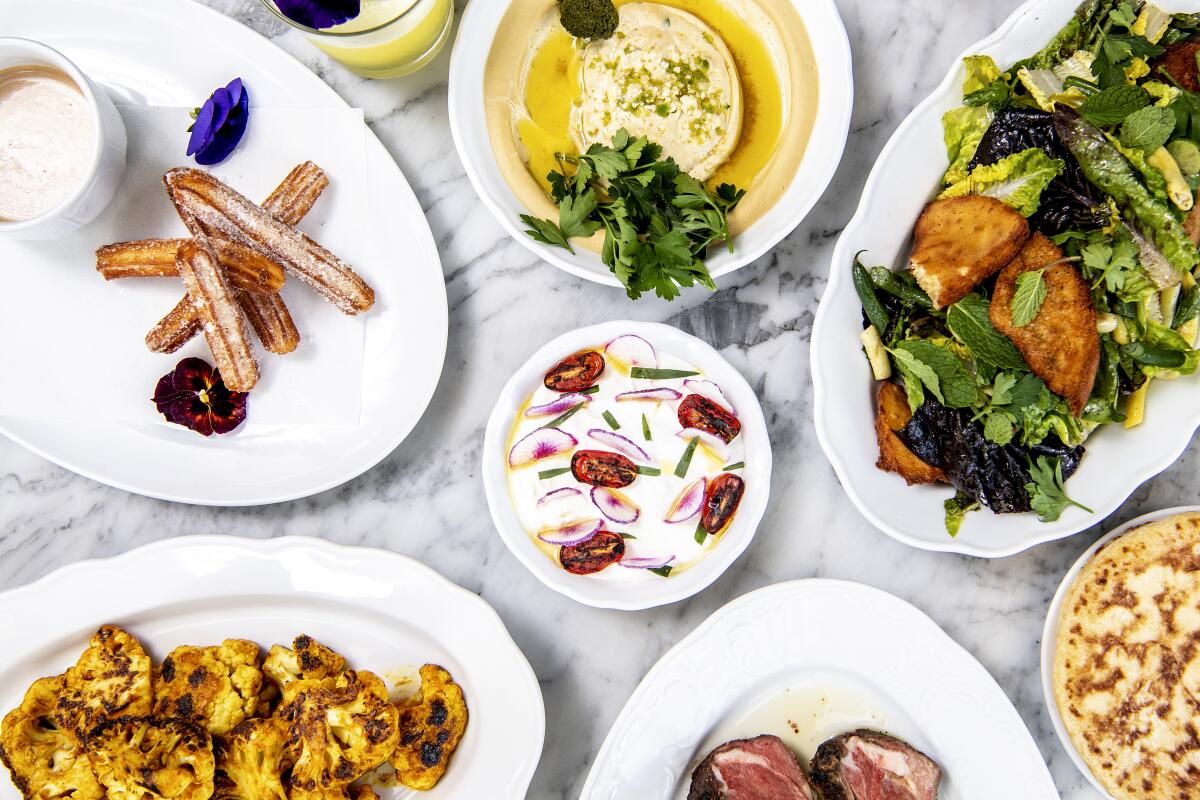
Bavel
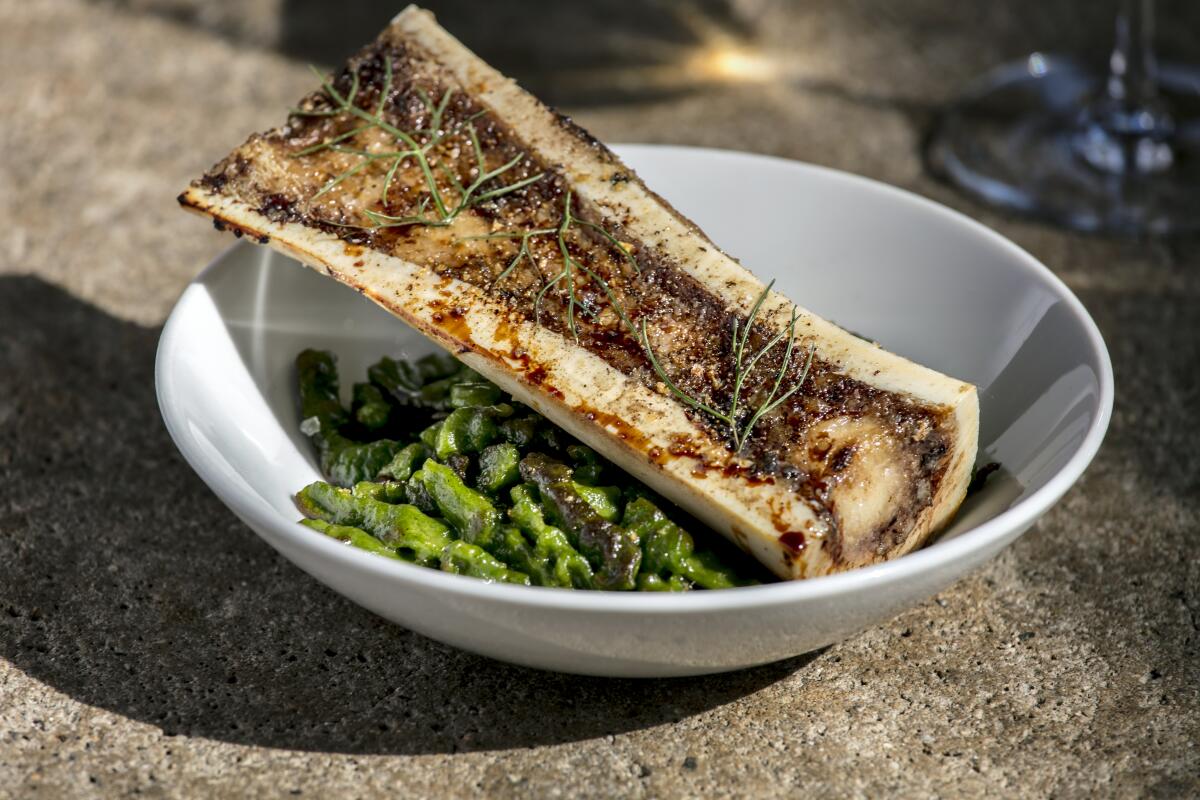
Bestia
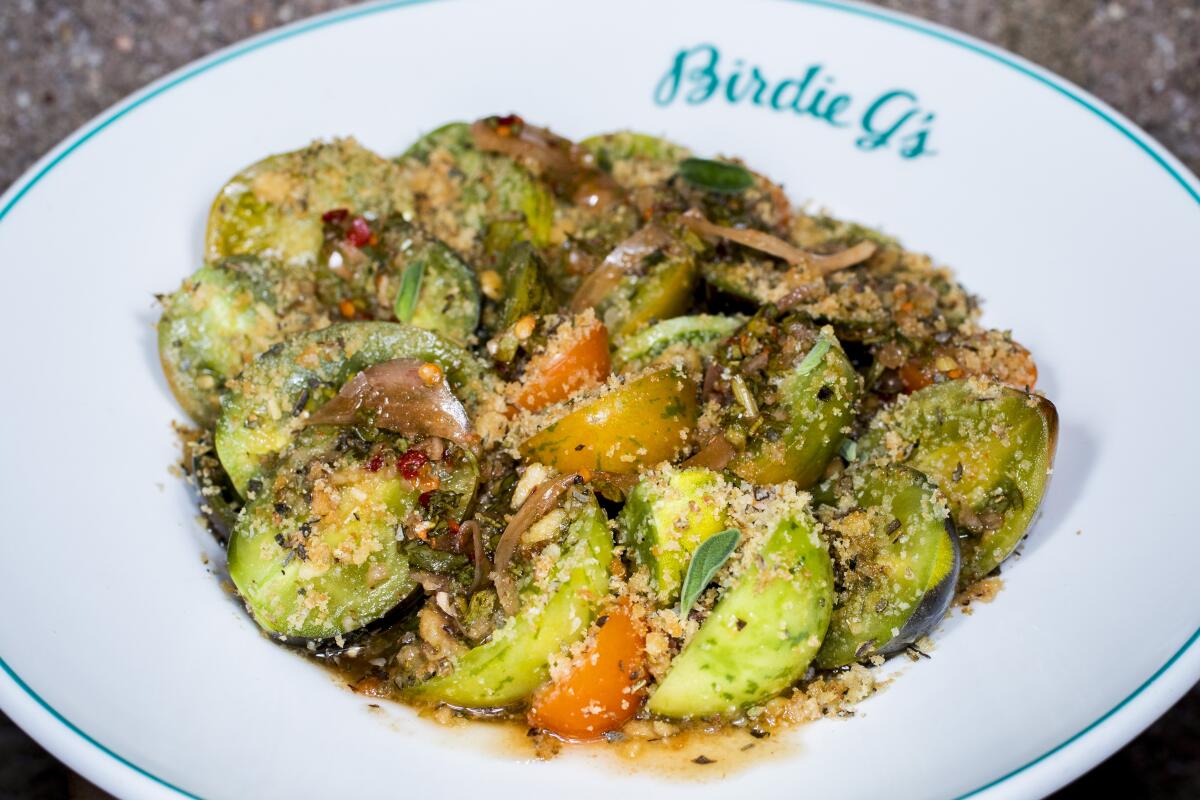
Birdie G’s
Time, and the sobering work of keeping a new restaurant afloat through a pandemic, have brought Fox and his dream project some hard-won clarity. Birdie G’s has quietly become a community treasure. The side-street location in a former train depot turned out to be the ideal place for an inviting patio lined with young palm trees and other greenery. Some artful editing has kept the menu’s heart intact, though its slimmer size now feels manageable for the kitchen and the customers. Always order the relish tray, with its tour of seasonal vegetables and its slyly complex onion dip. Persian-inspired lamb over a scattering of crisp rice is better than ever. Look for inspired ideas like tomato-burrata oreganata and trust sommelier Chloe Miranda to guide you through the ebullient wine list. If you haven’t been to Birdie G’s since its earliest, buzziest days, it’s time to return.
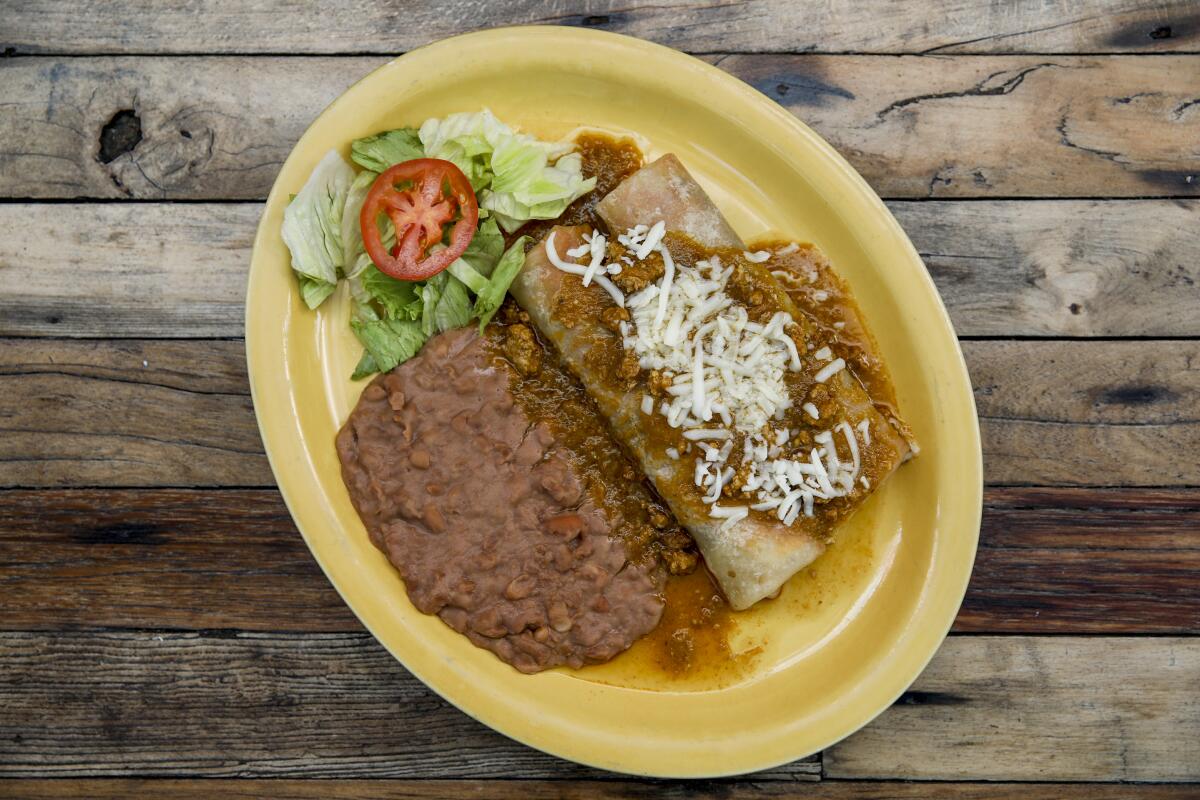
Burritos La Palma
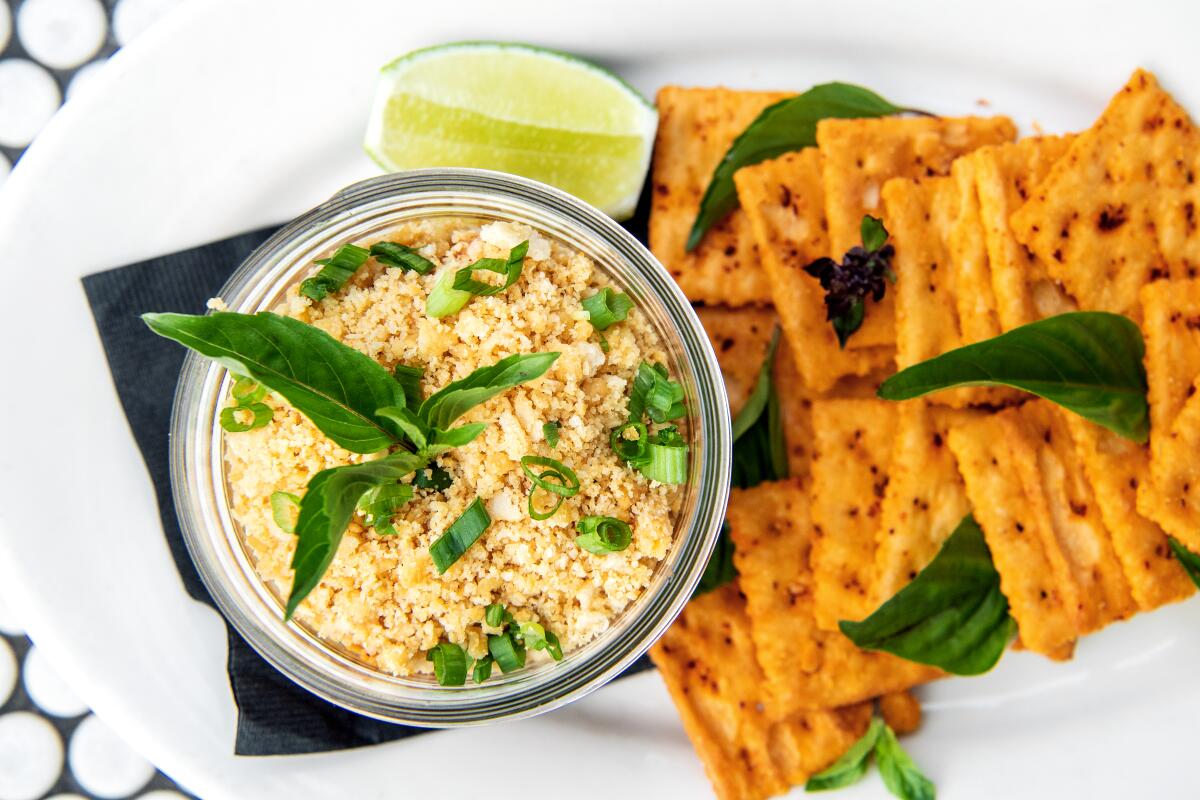
Cassia
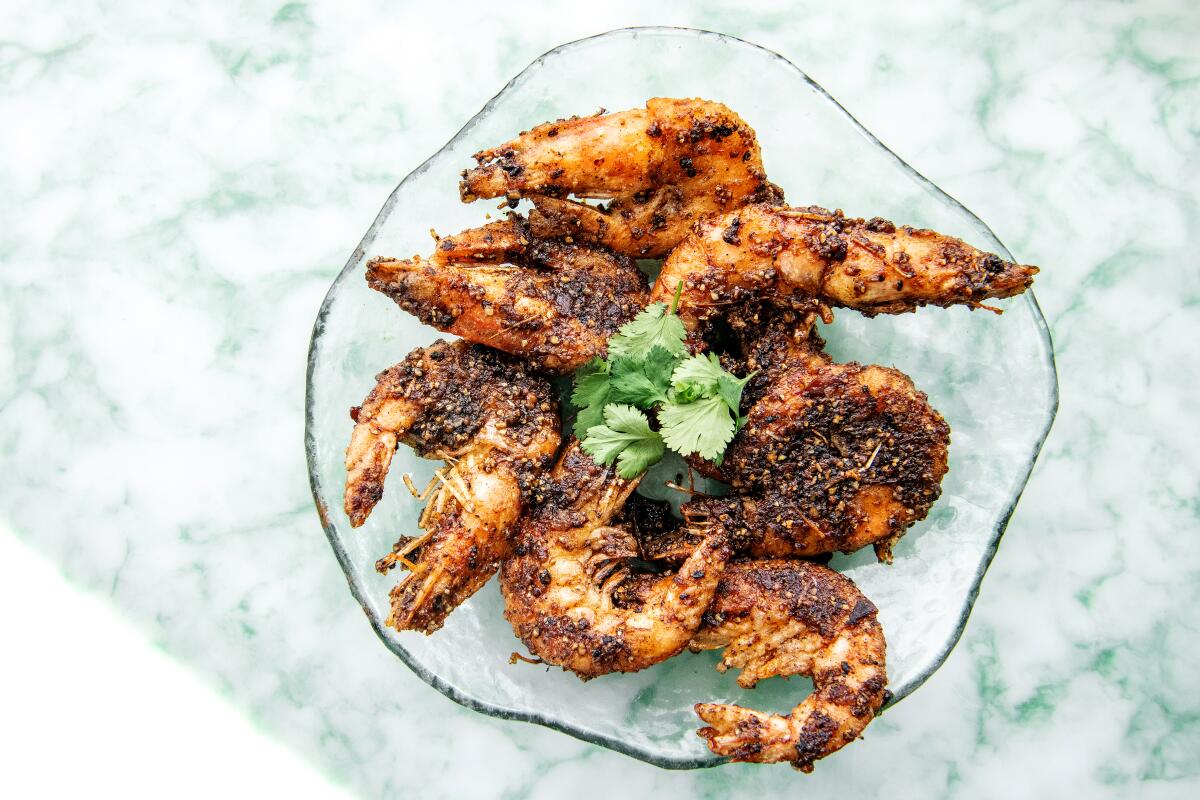
Chifa
Food-wise, Chifa pays homage to his mother, Wendy Leon, who returns to the kitchen here, having run her own place in Lima, Peru, four decades ago. The menu is most strongly informed by the deep influence of Chinese immigrants on Peruvian cuisine: sticky spare ribs caramelized in soy sauce and Shaoxing wine, zongzi (steamed sticky rice with meats, vegetables and duck egg yolk bundled in a bamboo leaf, also available in a vegan version), excellent prawns crusted with black peppercorns that pop hot and gritty against your teeth. A sleeper favorite: Popo’s Wellness Soup, a delicious herbal broth that changes with the seasons but whose nutrients you can almost feel rippling through your bloodstream.
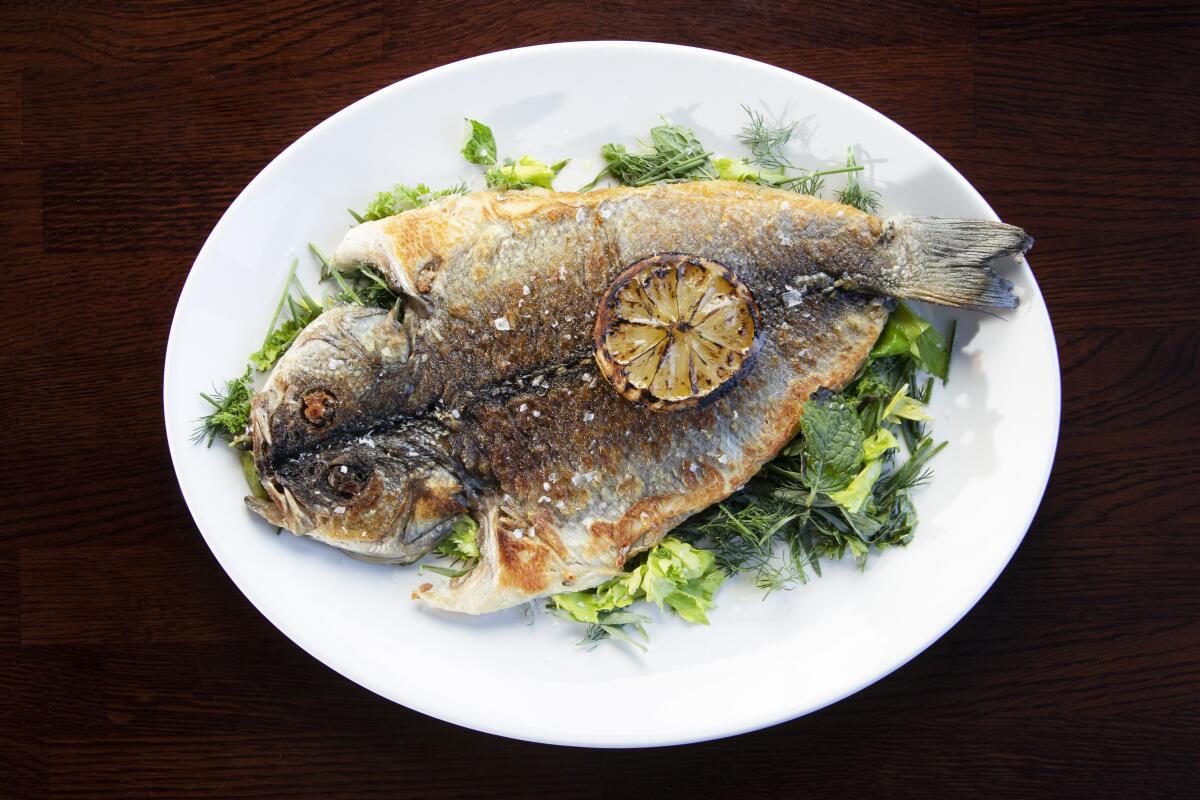
Chi Spacca
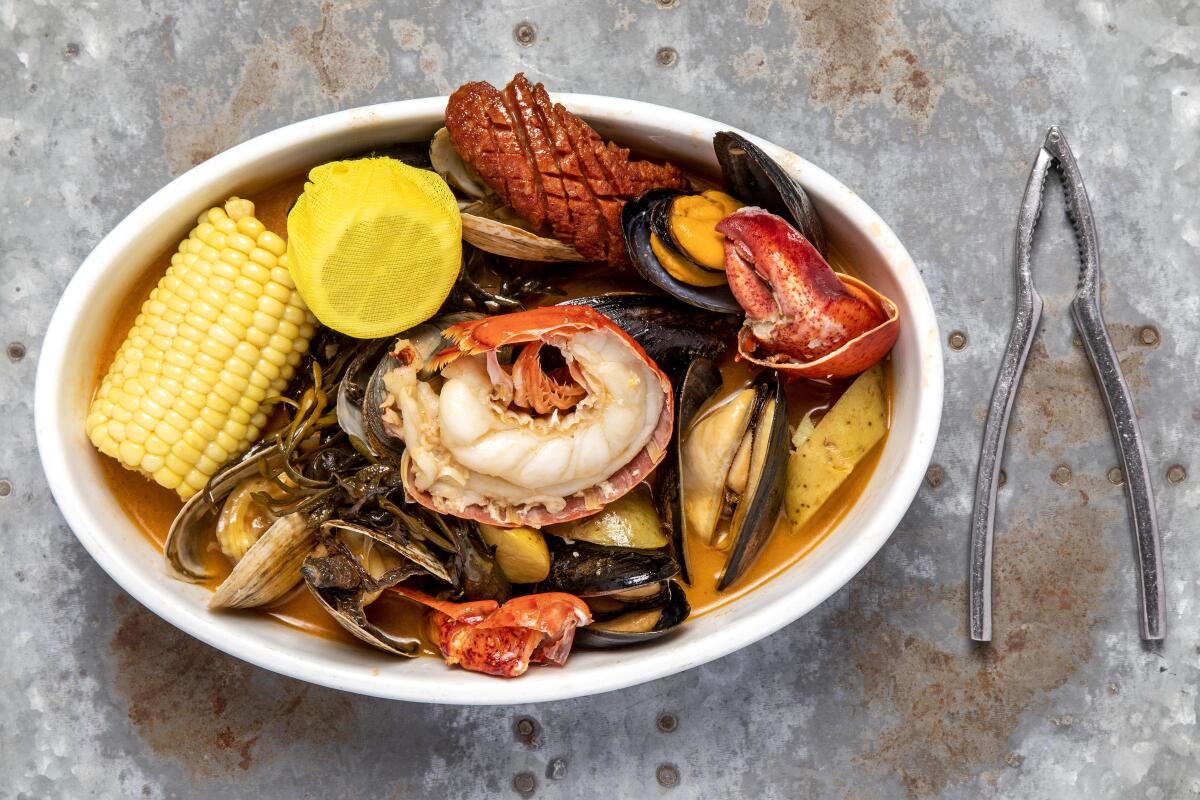
Connie and Ted’s
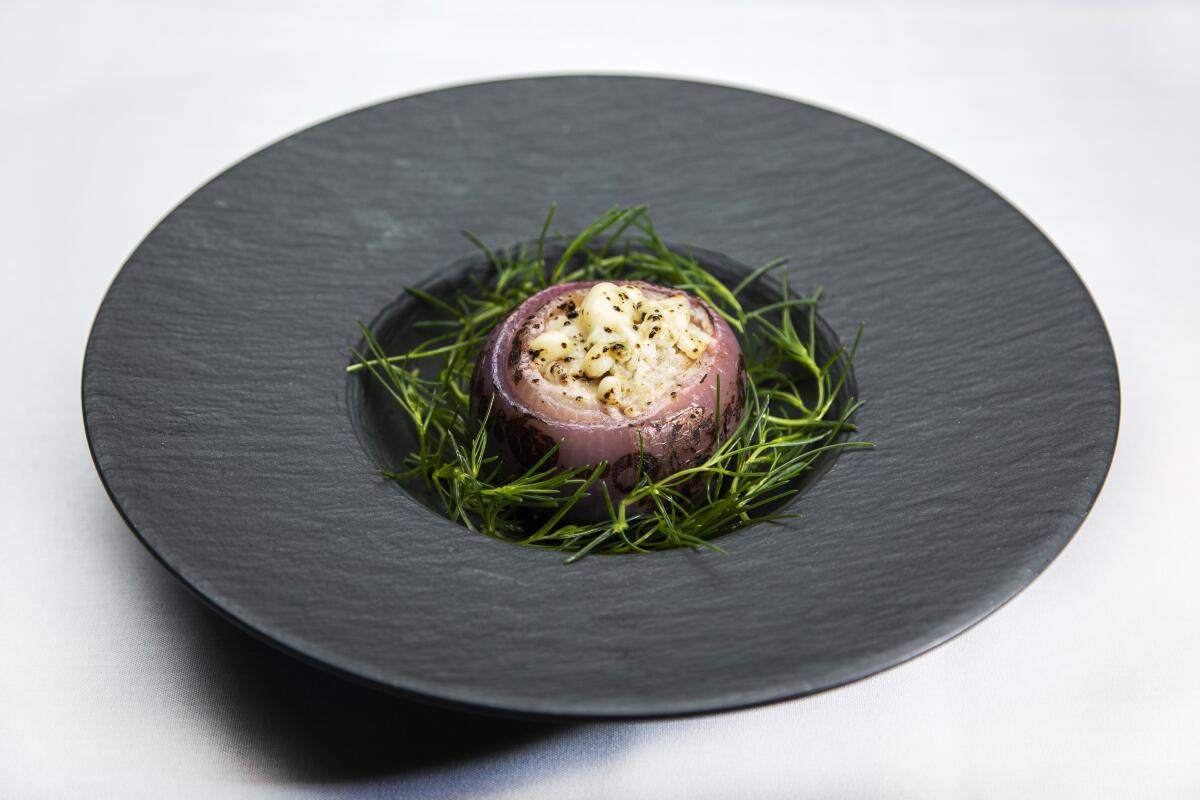
Crossroads Kitchen
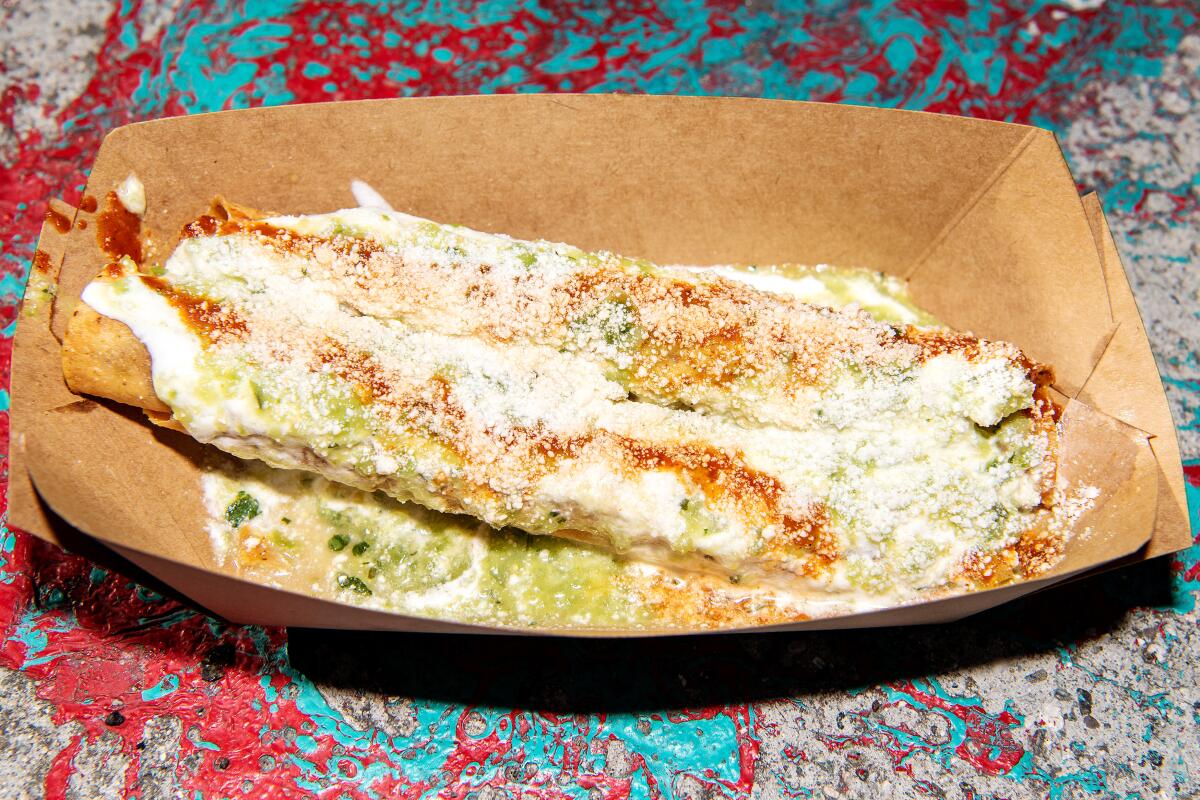
Los Dorados
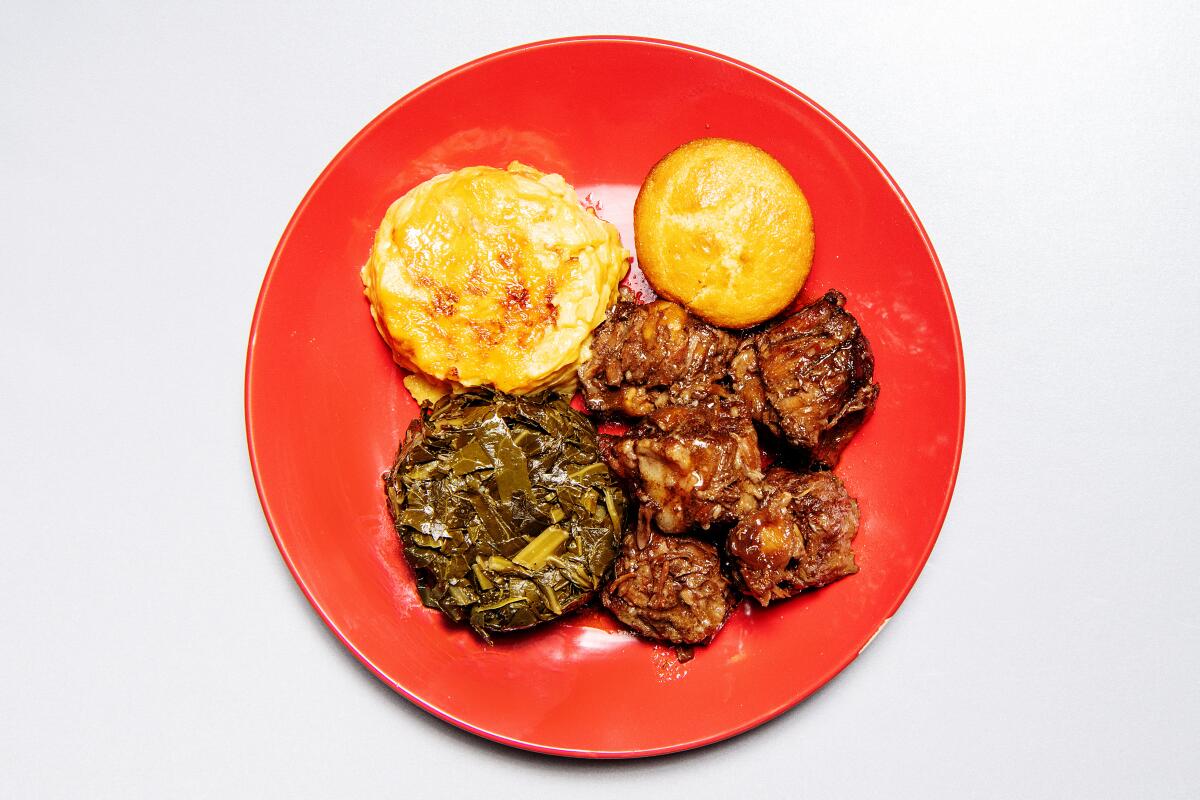
Dulan’s Soul Food Kitchen
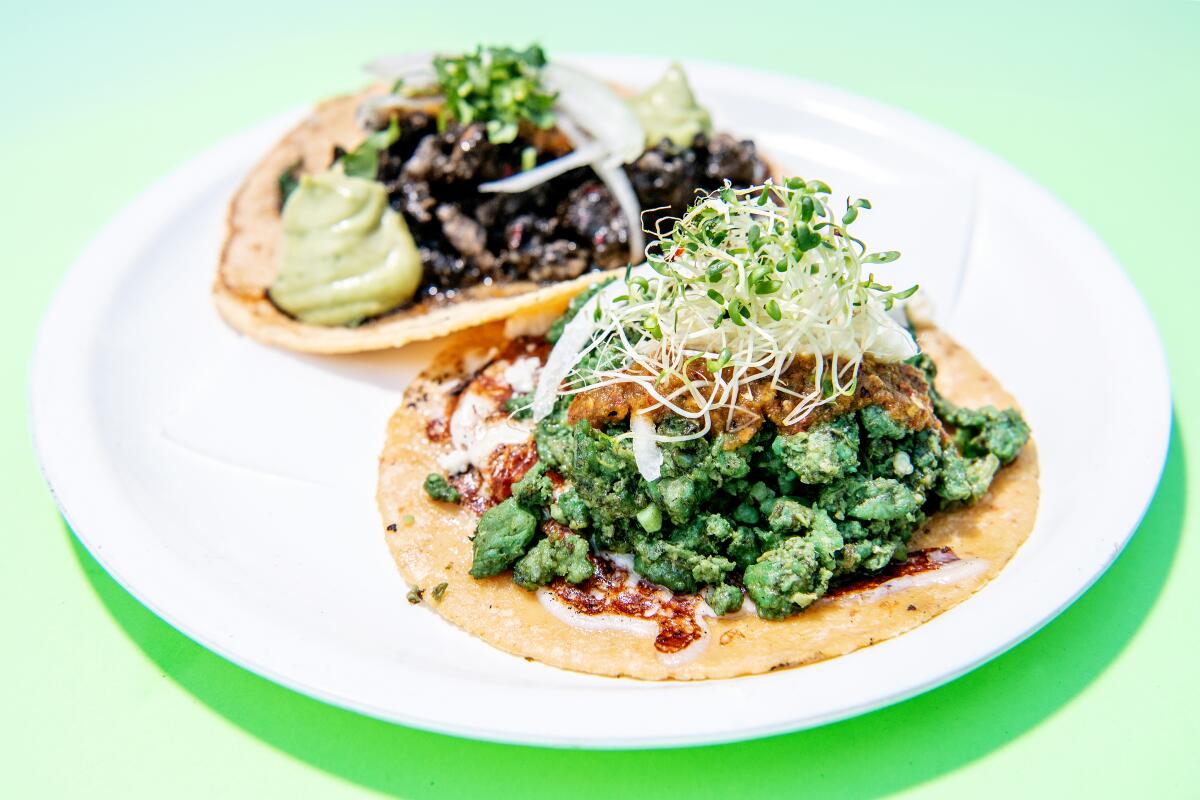
Evil Cooks
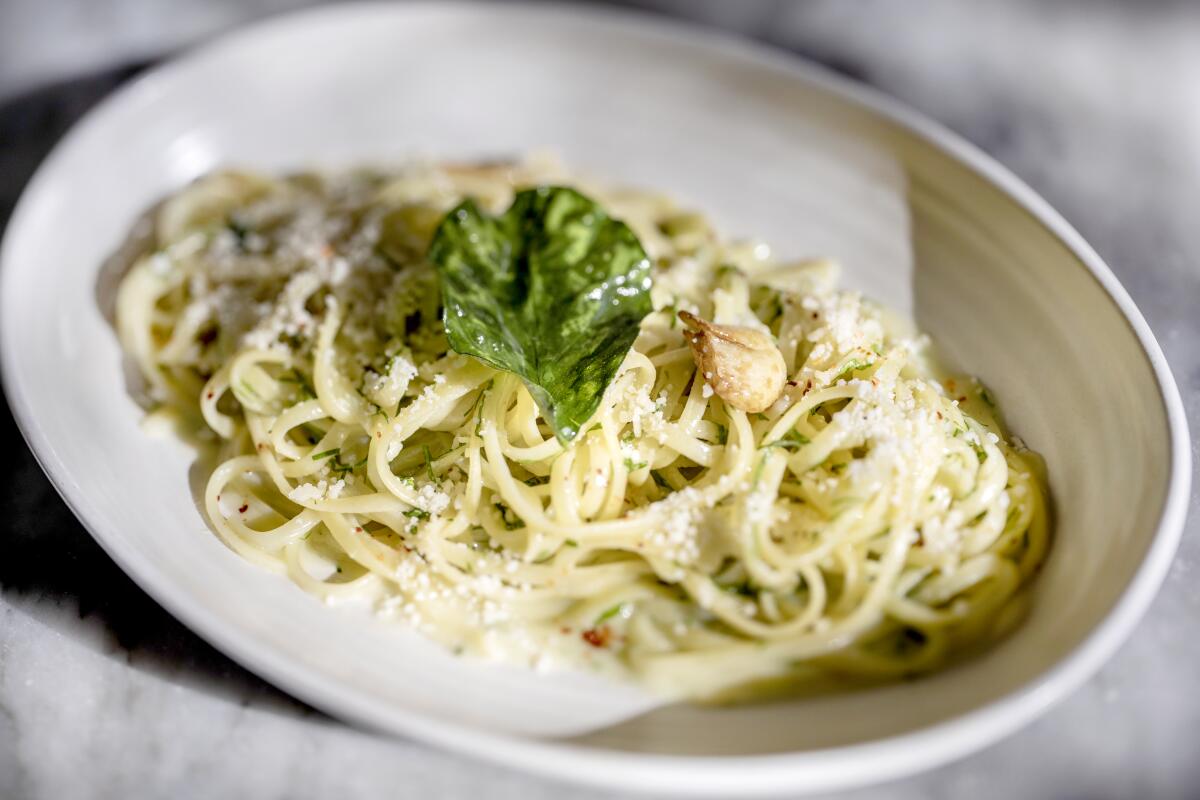
Felix
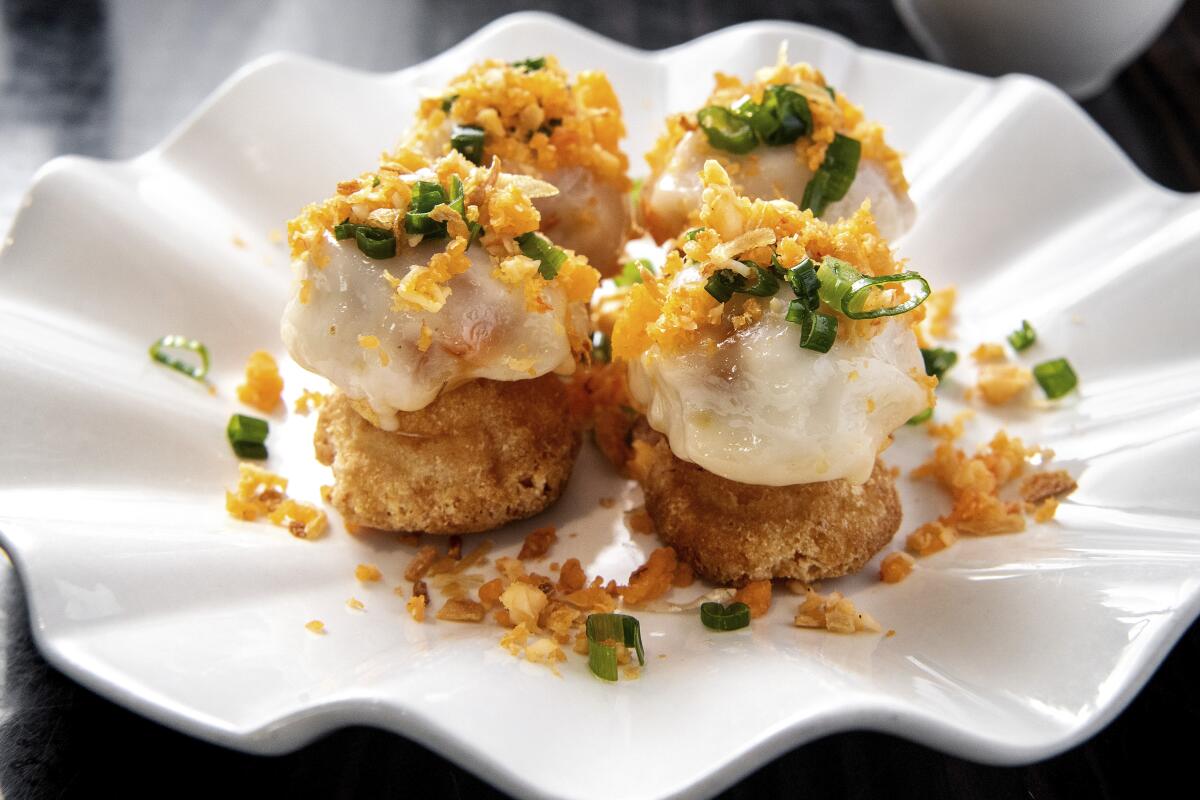
5 Stars Hue
As the restaurant’s name suggests, its menu focuses on dishes native to Hue, the city in central Vietnam with a long imperial history. Round out the meal with bún bò hue, the spicy beef noodle soup with scarlet broth and ruby blood cakes as soft as tofu, designed to be customized with herbs and lime and tangles of fresh and fried onions.
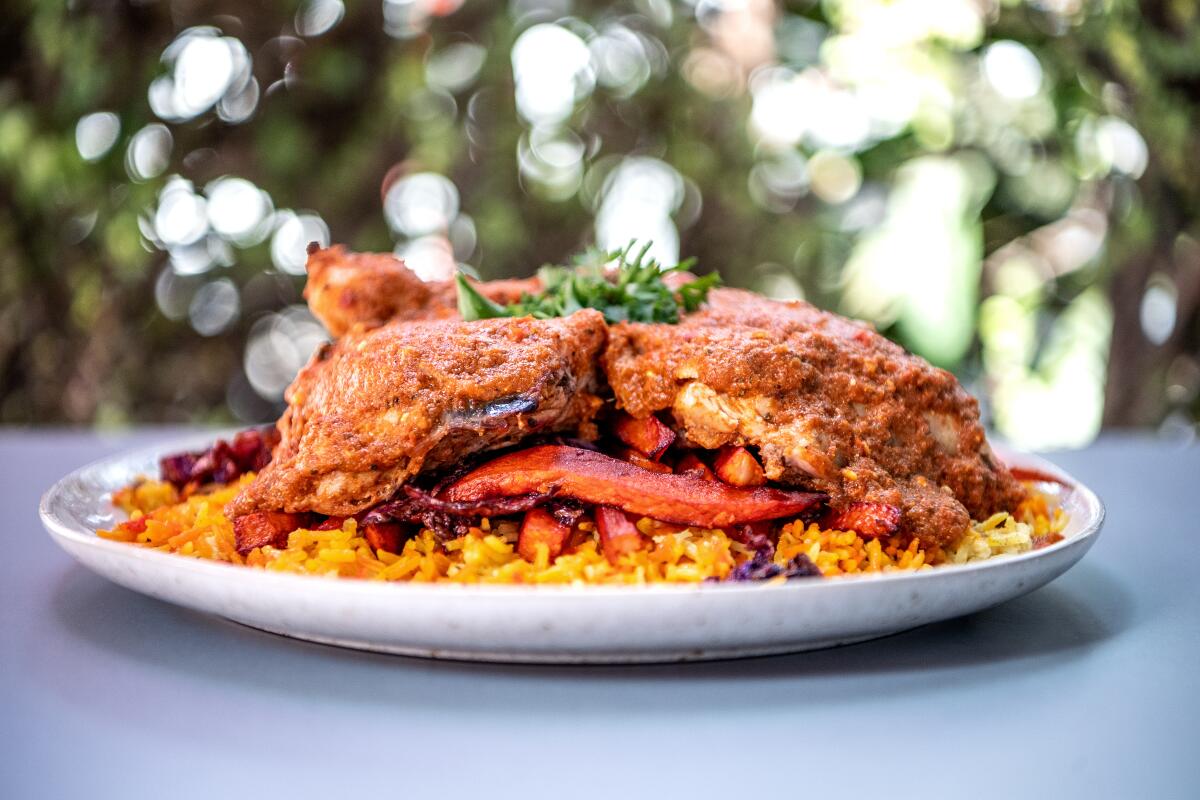
Flavors From Afar
They have the moves to pull it off. In September, for example, Copes and her team eloquently re-created a handful of Lebanese signatures from chef Lina Georges of Mama Lina Cooks, including ouze (cinnamon-scented lamb shanks tumbling over rice scattered with pine nuts and slivered almonds) and siyadiyeh (spice-rubbed fish with tahini sauce). Other menus have featured Guatemalan taquitos, Palestinian musakhan (spiced chicken and caramelized onions over flatbread), Kenyan-style tilapia cooked in coconut milk and an Eritrean recipe for goat marinated in herbs and chiles. The restaurant is an arm of co-founder Meymuna Hussein-Cattan’s Tiyya Foundation, which assists families of refugees, immigrants and displaced indigenous communities. Nearly half of the profits from Flavors From Afar go to Tiyya’s support programs, and diners might gain delicious insight into cuisines that are otherwise rare even in Los Angeles.
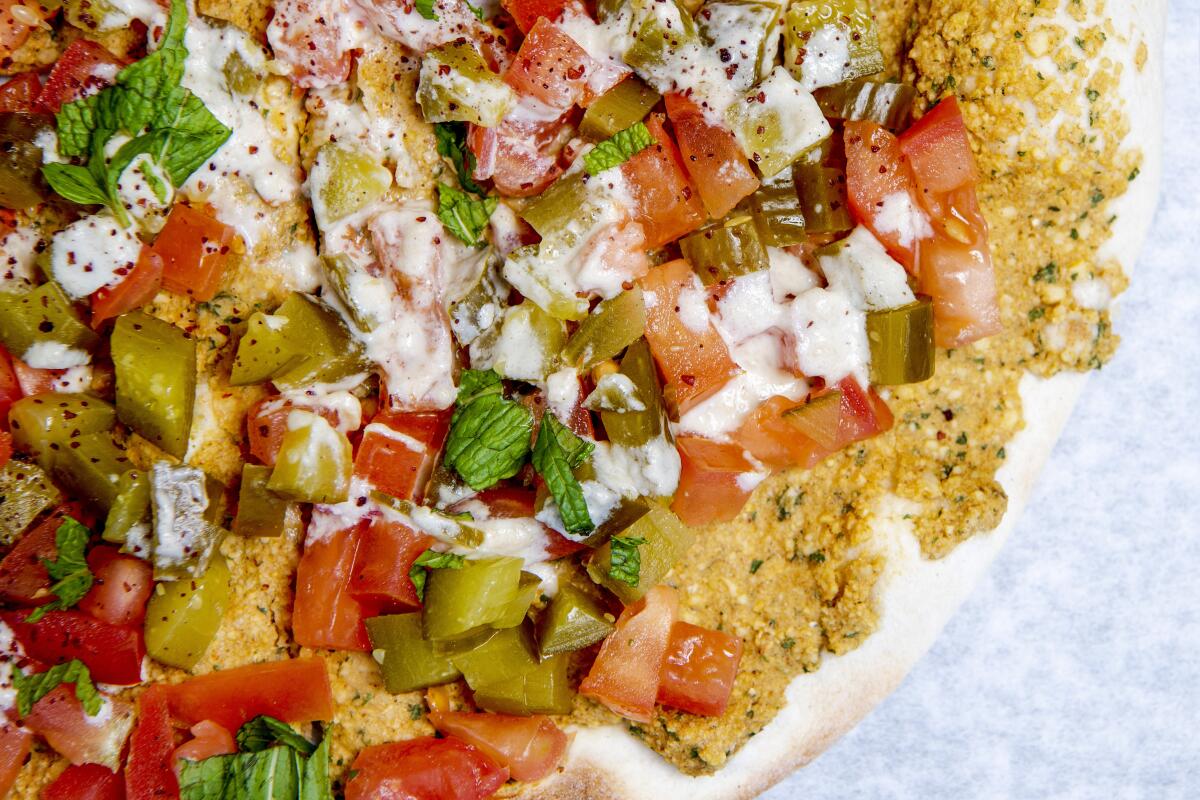
Forn Al Hara
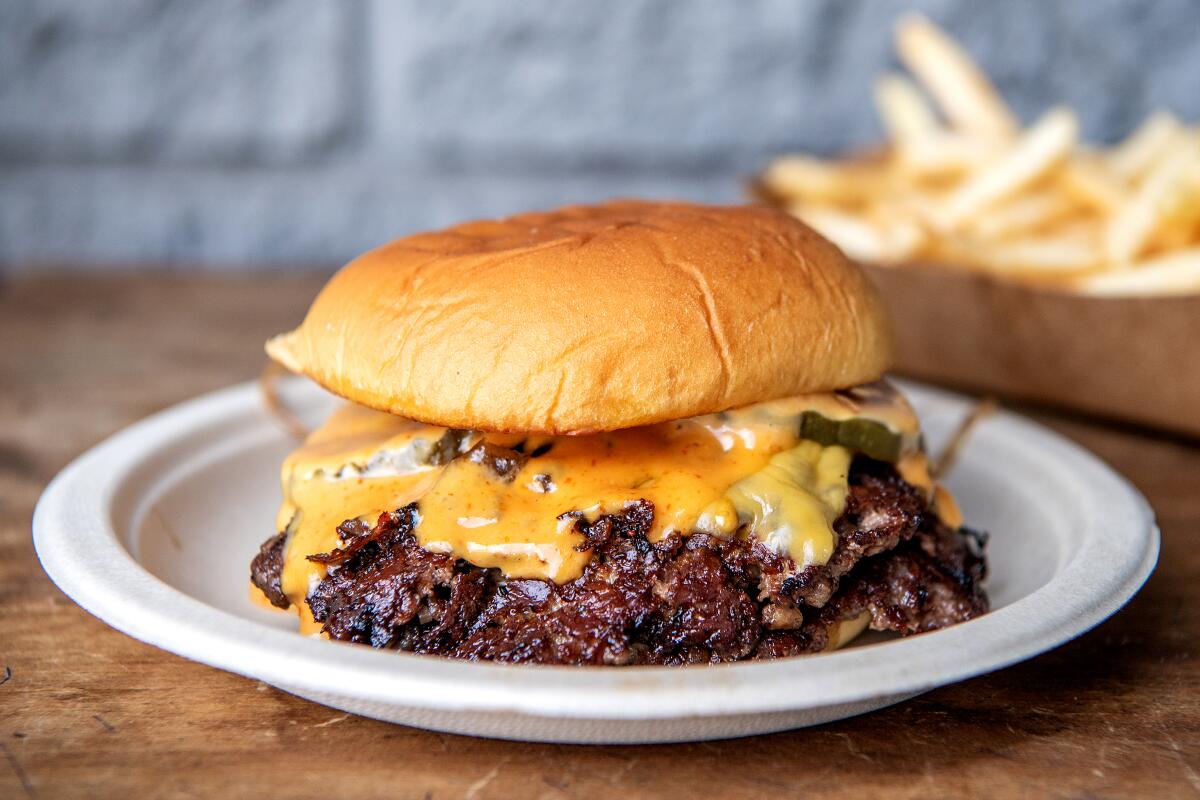
For the Win
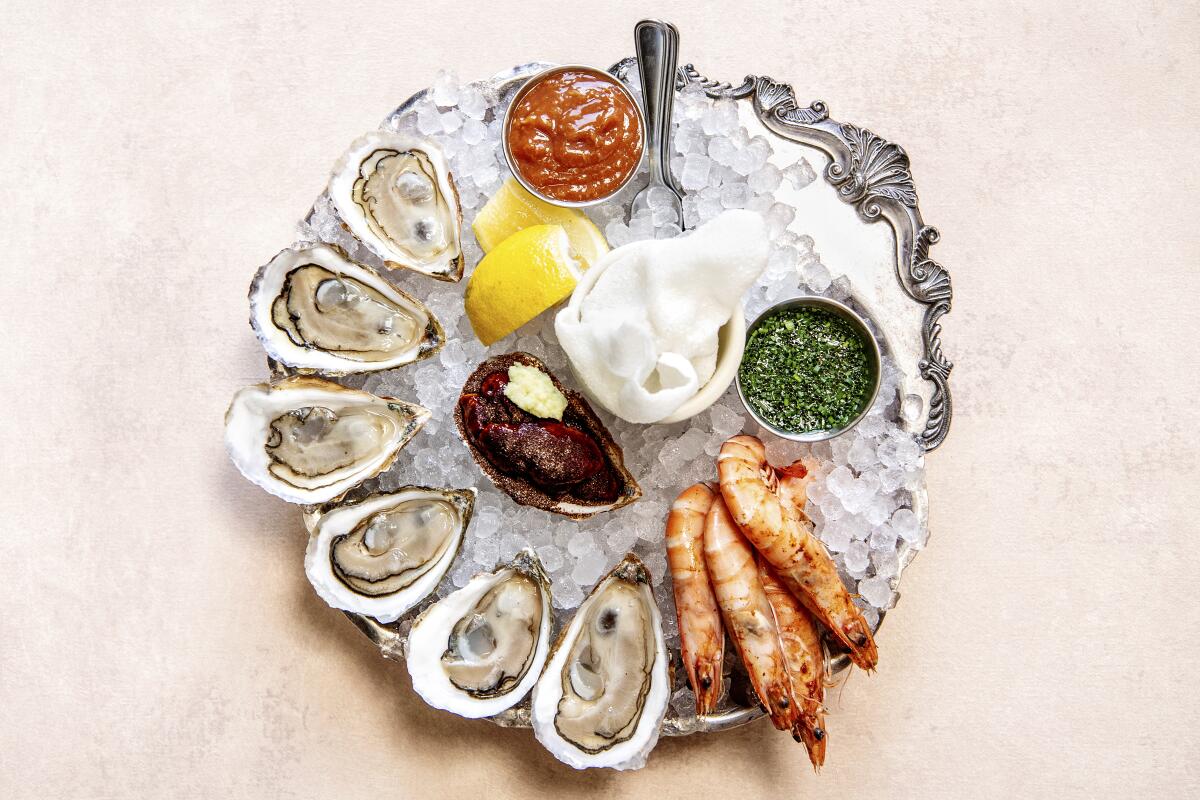
Found Oyster
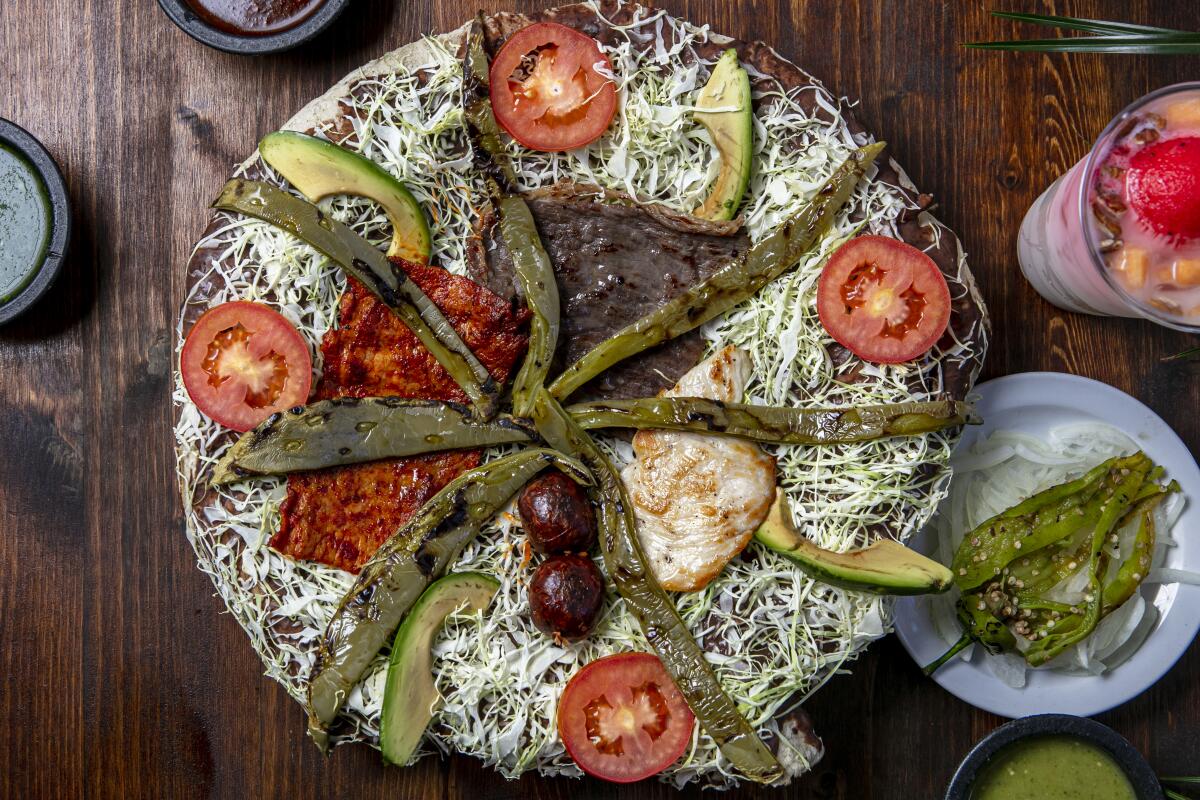
Gish Bac
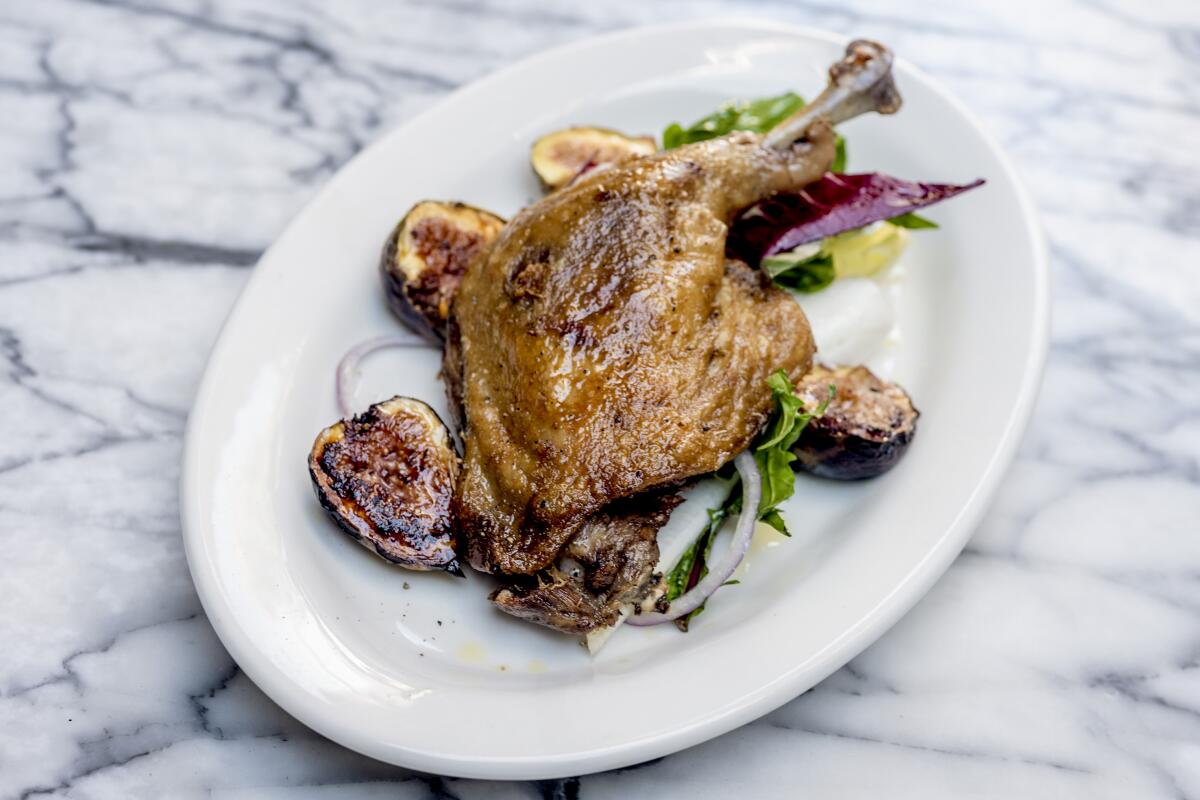
Gjelina
Gjelina’s patio has always been magnetic, and never more so than over the last two years. I’d never noticed until this year that a nook along the building’s right side, paneled with rustic mixed woods and just big enough to fit four tables comfortably, is one of the city’s loveliest outdoor dining spaces.
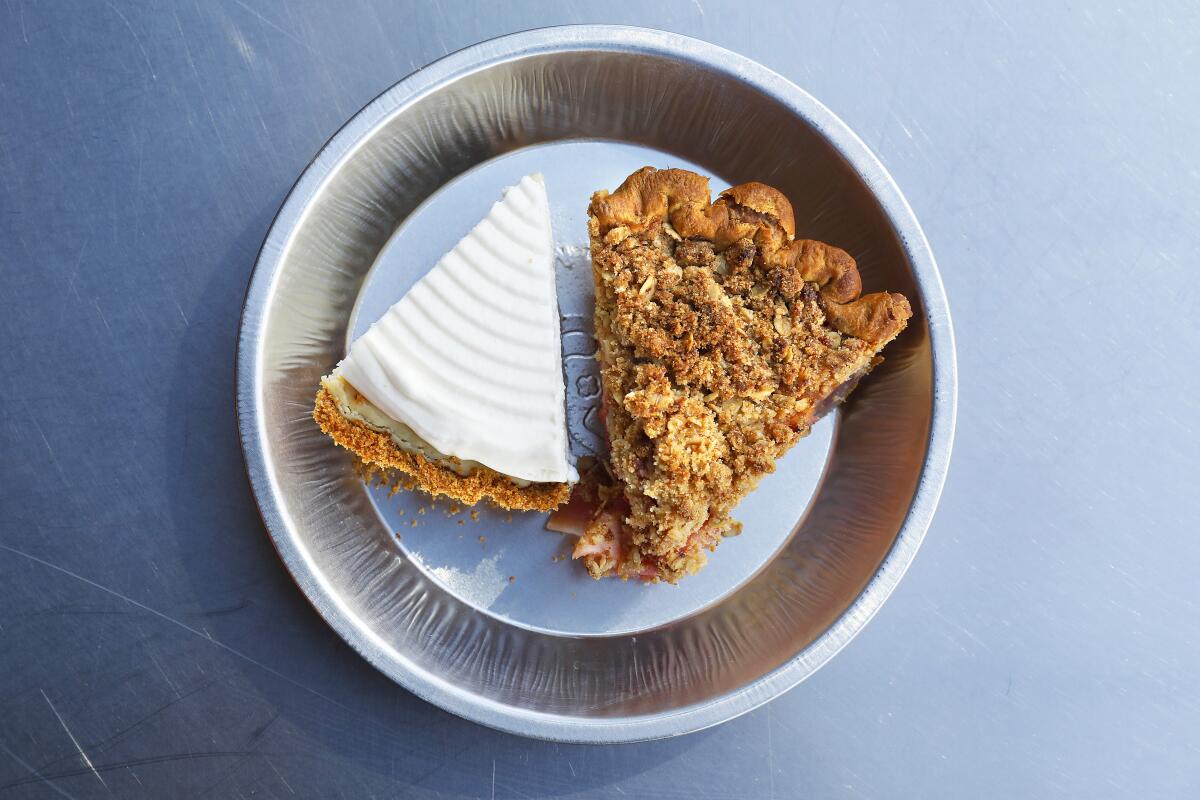
Grand Central Market
As to the future, I direct you to the southeast corner of the building and two of GCM’s newest tenants. Shiku, meaning “family” in Korean, comes from Baroo Canteen’s Kwang Uh and Mina Park. Their new project revolves around an ever-changing selection of banchan and to-go meals like fried rice with spicy and citrusy “kimchi’d corn,” fried egg and potato chips. Next door to them is the freshly tiled stand for Fat and Flour, the pie shop (but also cookies!) from superstar baker Nicole Rucker.
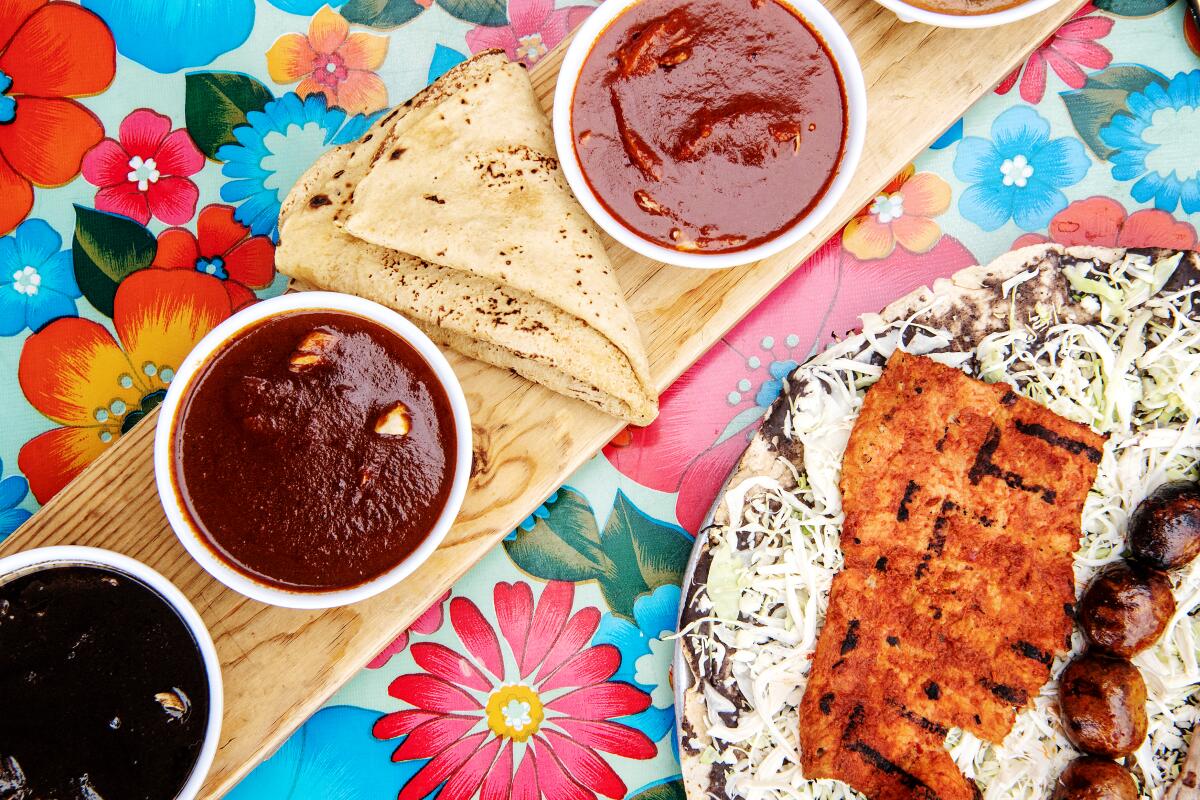
Guelaguetza

Hawkins House of Burgers
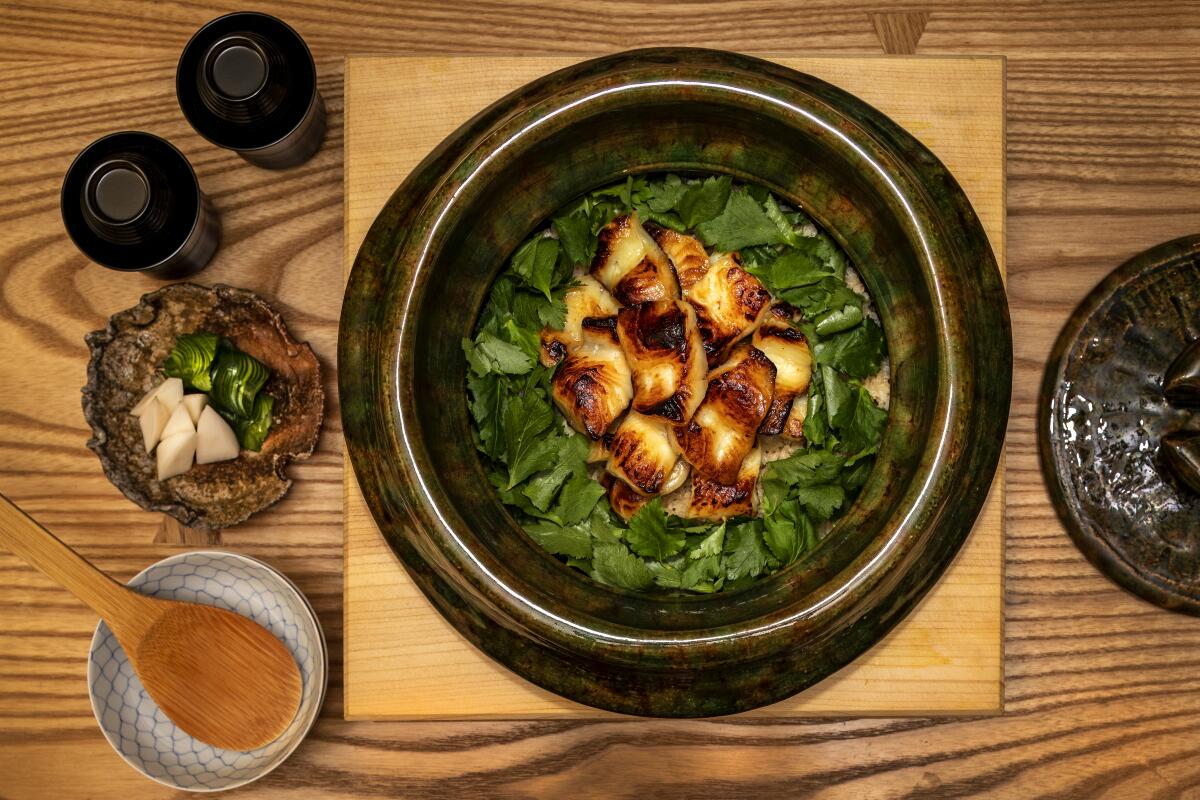
Hayato
Five nights a week, seven customers gather around a cedar counter in a restaurant all but concealed among retail storefronts and offices in the Row DTLA complex. For the next several hours, aided by a few gifted chefs who dash in and out of sight, Brandon Hayato Go will stay in near constant motion to compose a meal of intense beauty. He follows the form of kaiseki, emphasizing different cooking techniques (fried, simmered, grilled and so on) in a specific order, but he also breaks from tradition when it serves his intellect and instincts.
The intimate theater of the meal gives the experience heart. Go always begins the evening quiet and focused, but halfway through 10 to 12 courses — in July it was between the corn and scallop tempura and a sumptuous mound of Dungeness crab in a broth electric with umami — he grows chattier. “Okra is more important to Japanese people than to American people,” he might remark when pairing the vegetable with roasted Santa Barbara prawns. And soon you’re learning that Go was dorm mates with Broken Spanish’s Ray Garcia at UCLA, who was pre-law while Go was studying molecular biology.
By the time you’ve had seconds (or thirds) of the king mackerel with rice and Harry’s Berries strawberries with cream for dessert alongside green tea, the city outside feels very far away. Scoring a reservation for Hayato is an ugly competitive sport; comparisons to finding a golden ticket into Willy Wonka’s Chocolate Factory aren’t far off the mark. The winners score one of the most remarkable experiences in Los Angeles — in America, really. Set your alarm for 10 a.m. on the first of the month and good luck.
Read the full review of Hayato
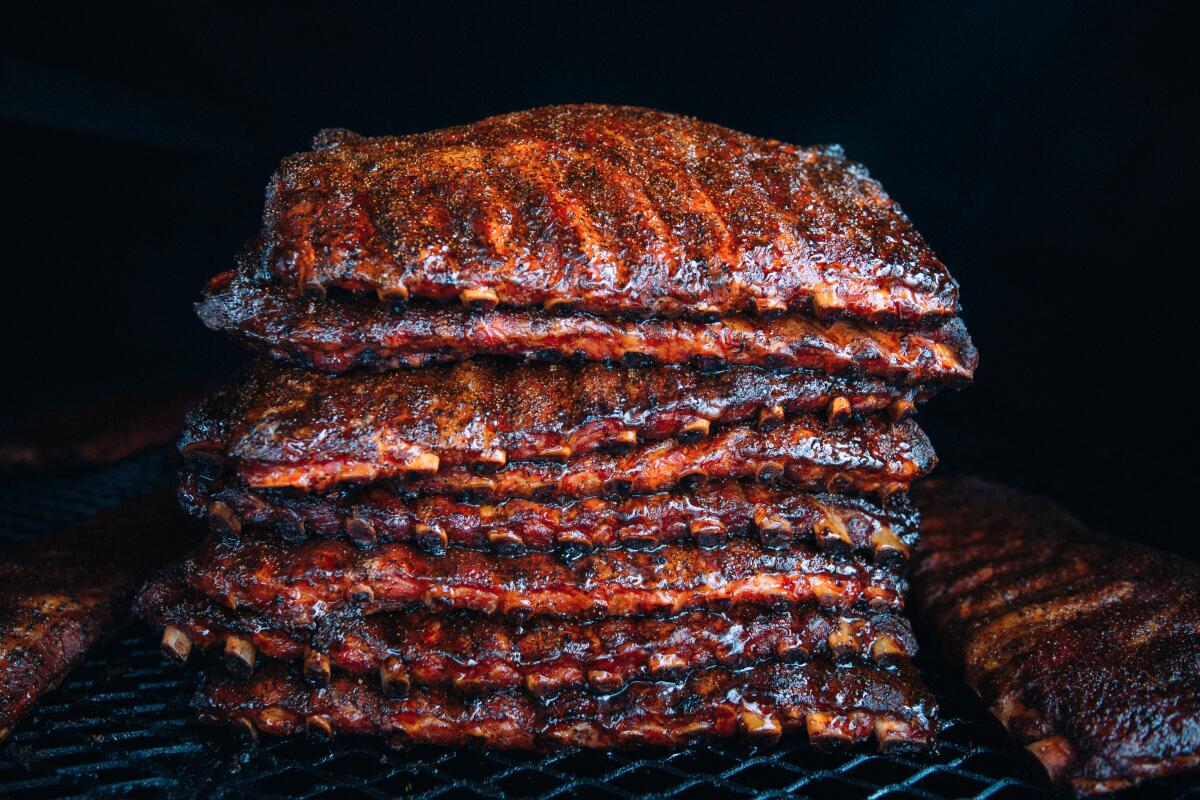
Heritage Barbecue
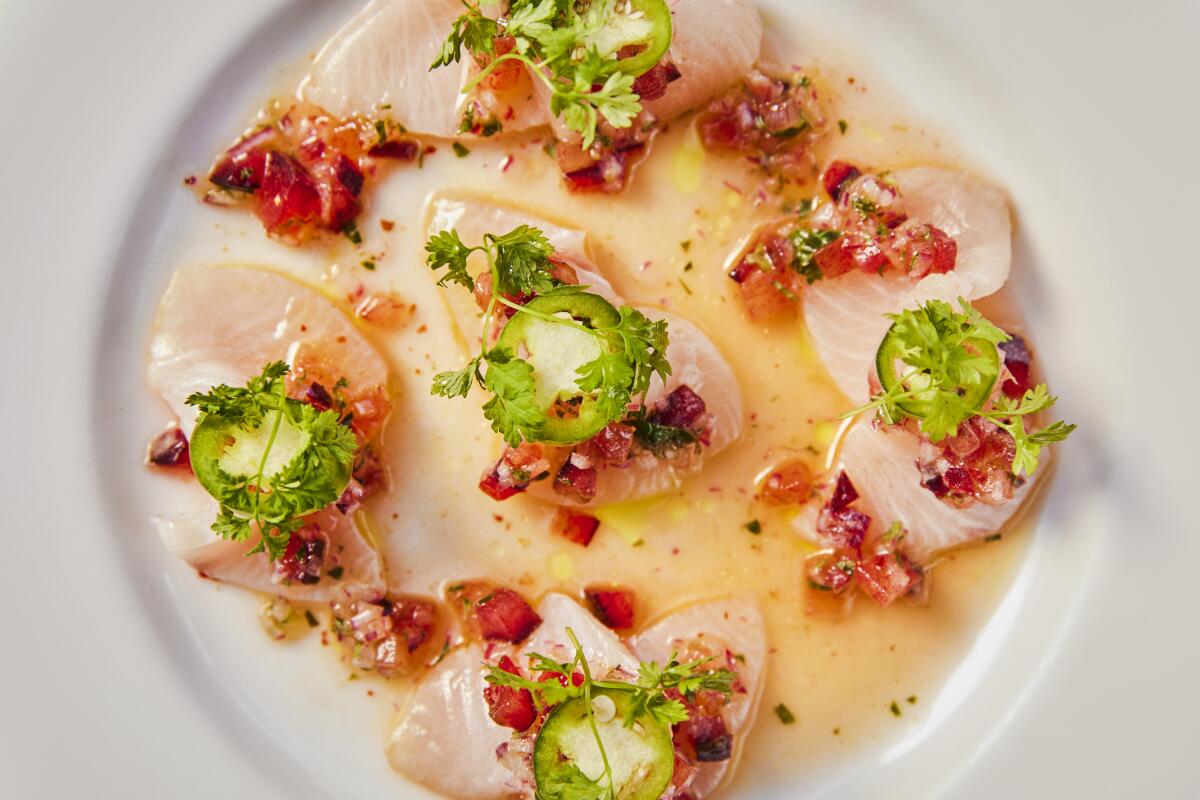
Hippo
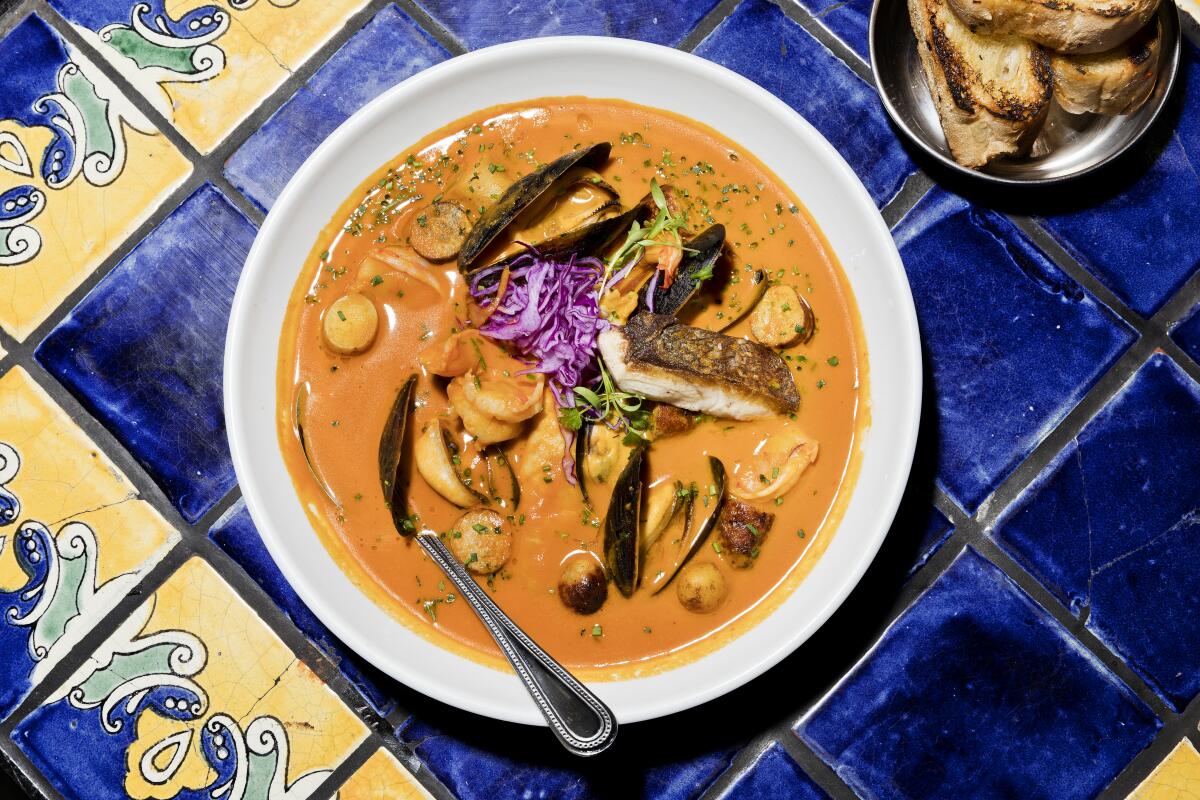
Holbox
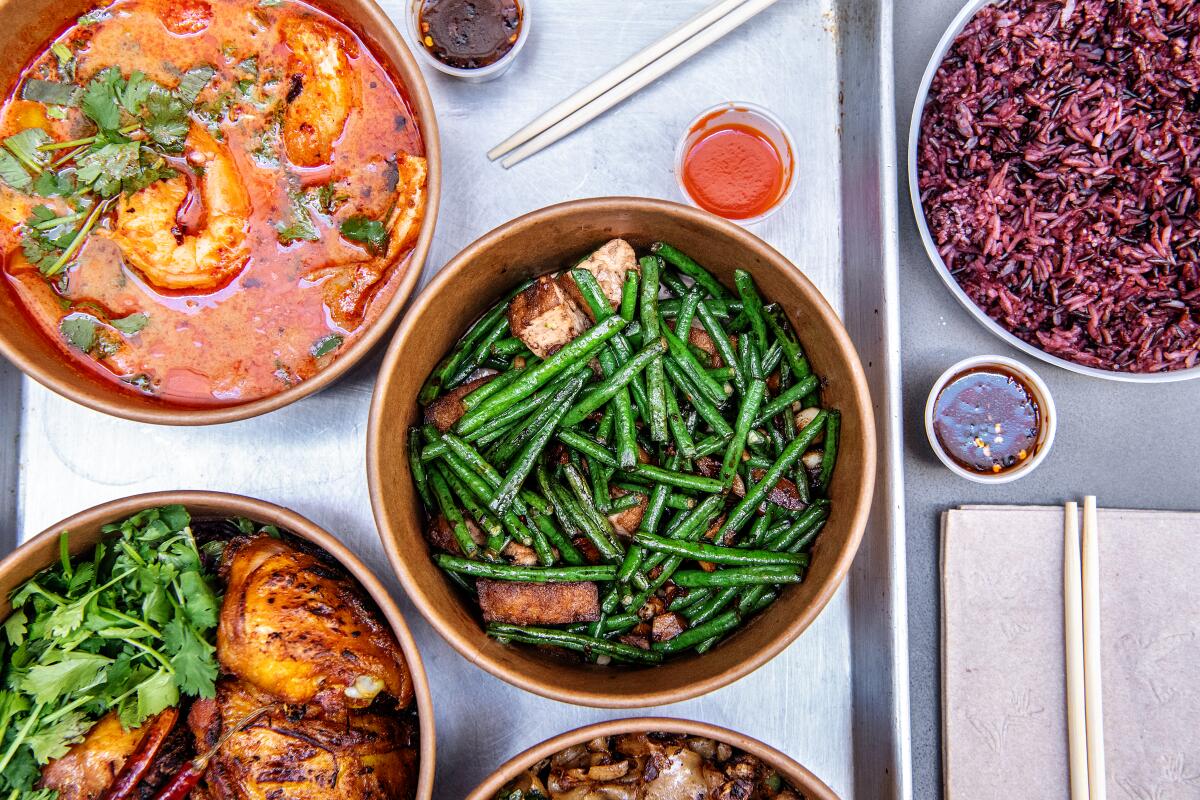
Holy Basil
Traffic is hell on Holy Basil’s block of Los Angeles Street. A few minutes of illegal parking may be in order. The food merits the risk.
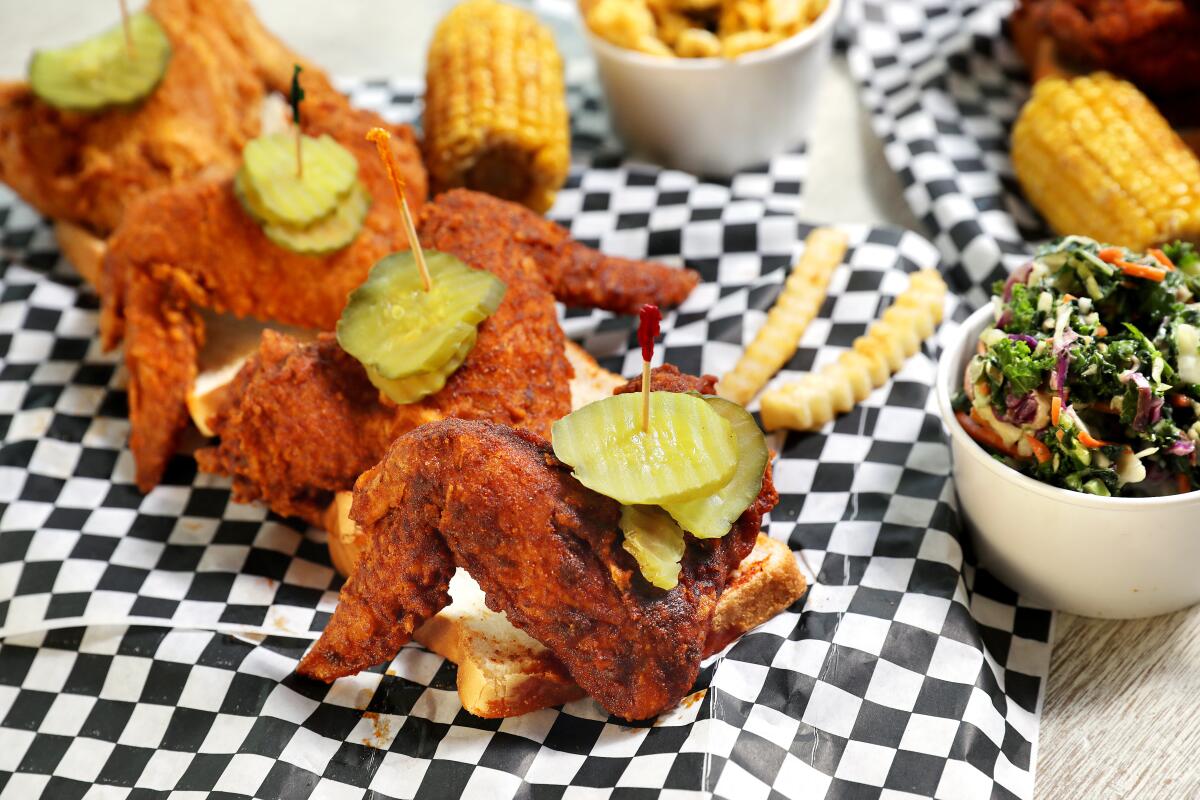
Hotville Chicken
UPDATE: As of December 18, 2022, Hotville Chicken has closed its Baldwin Hills location and is operating under the Dulanville food truck.
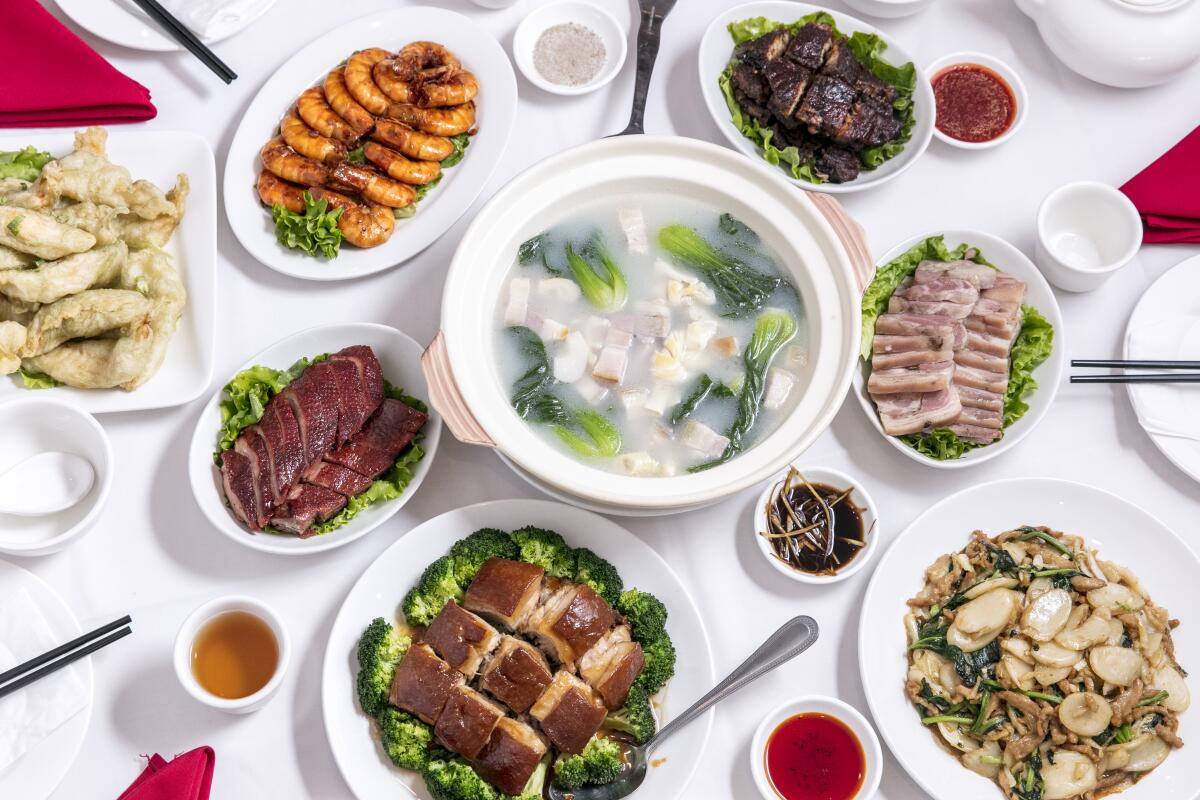
Jiang Nan Spring
Dishes like “Shanghai leek rice cake” stir-fried with greens and julienned pork; tilapia fried in a batter striated with seaweed; and dong po rou, the Hangzhou masterpiece of pork belly slowly braised in rice wine, soy sauce, ginger and sugar, usher diners into Jiangnan’s culinary affinity for restrained seasonings and flickers of sweetness. Chef Henry Chang, a native of Taiwan, has cooked the specialties of Shanghai for 30-some years and has more than earned his mastery.
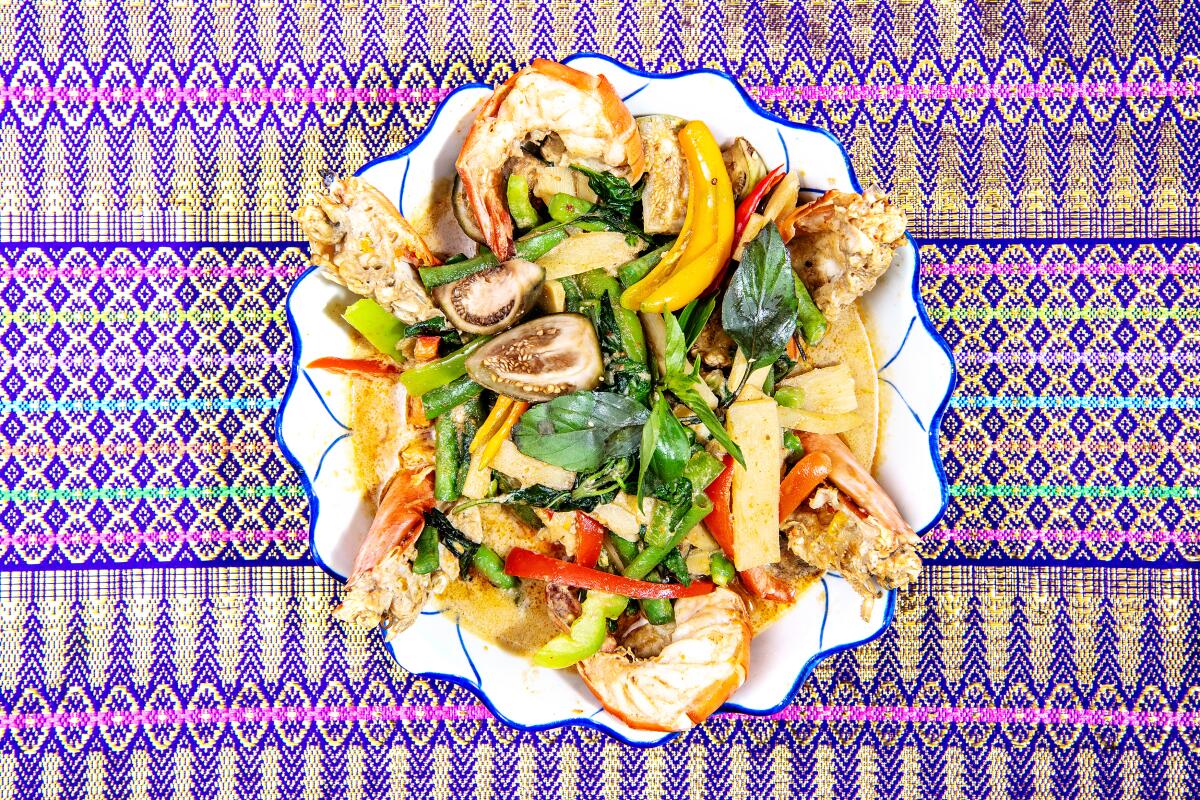
Jitlada
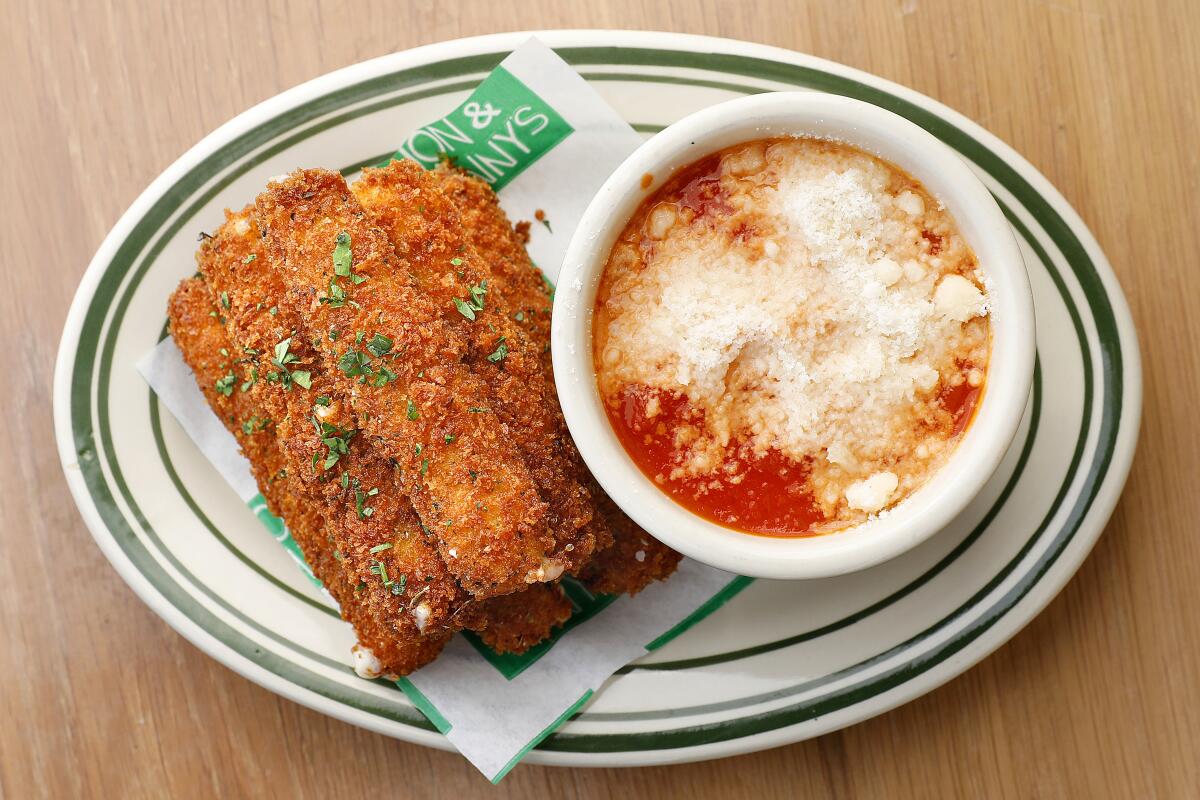
Jon & Vinny’s
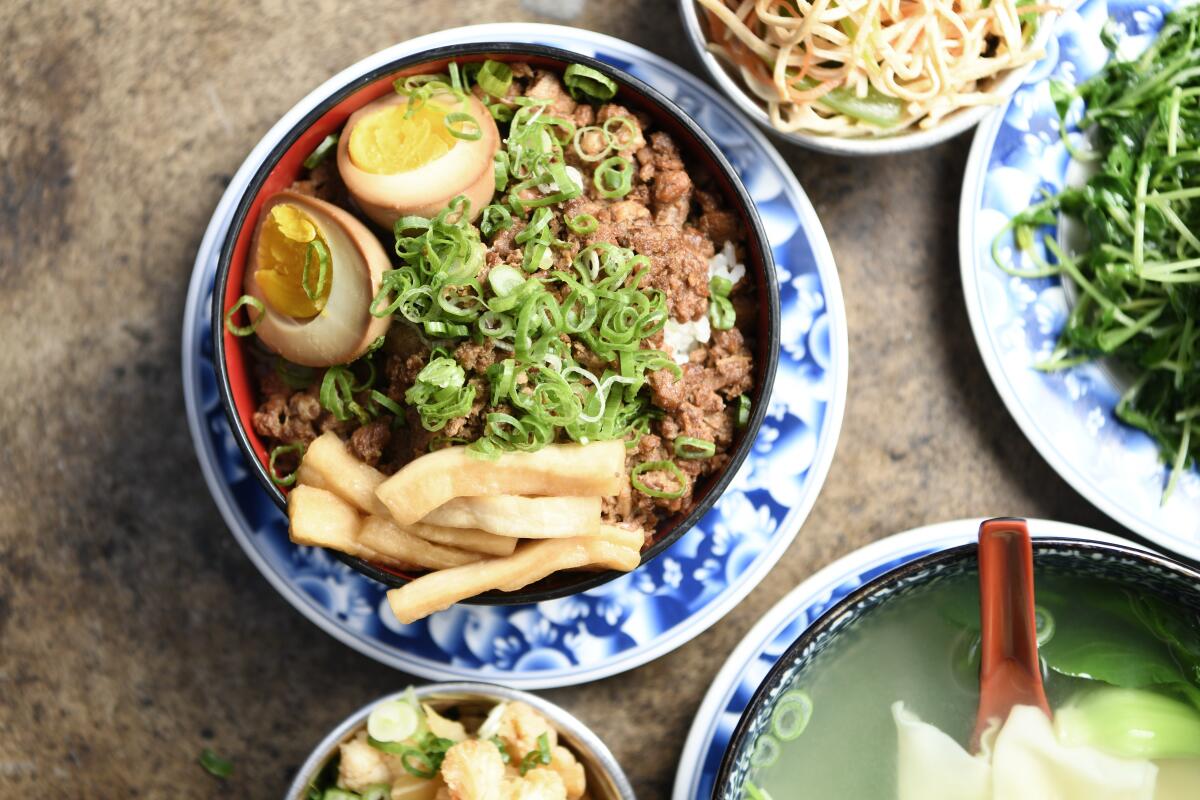
Joy
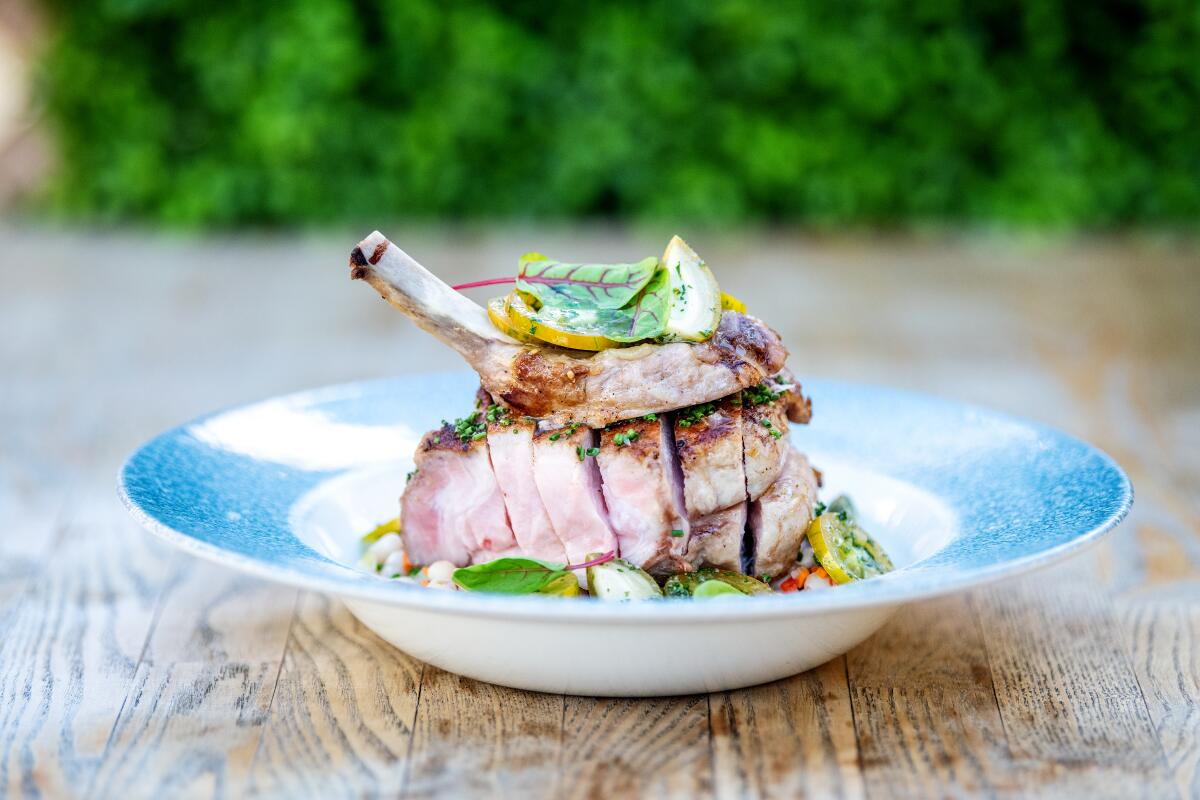
Kali
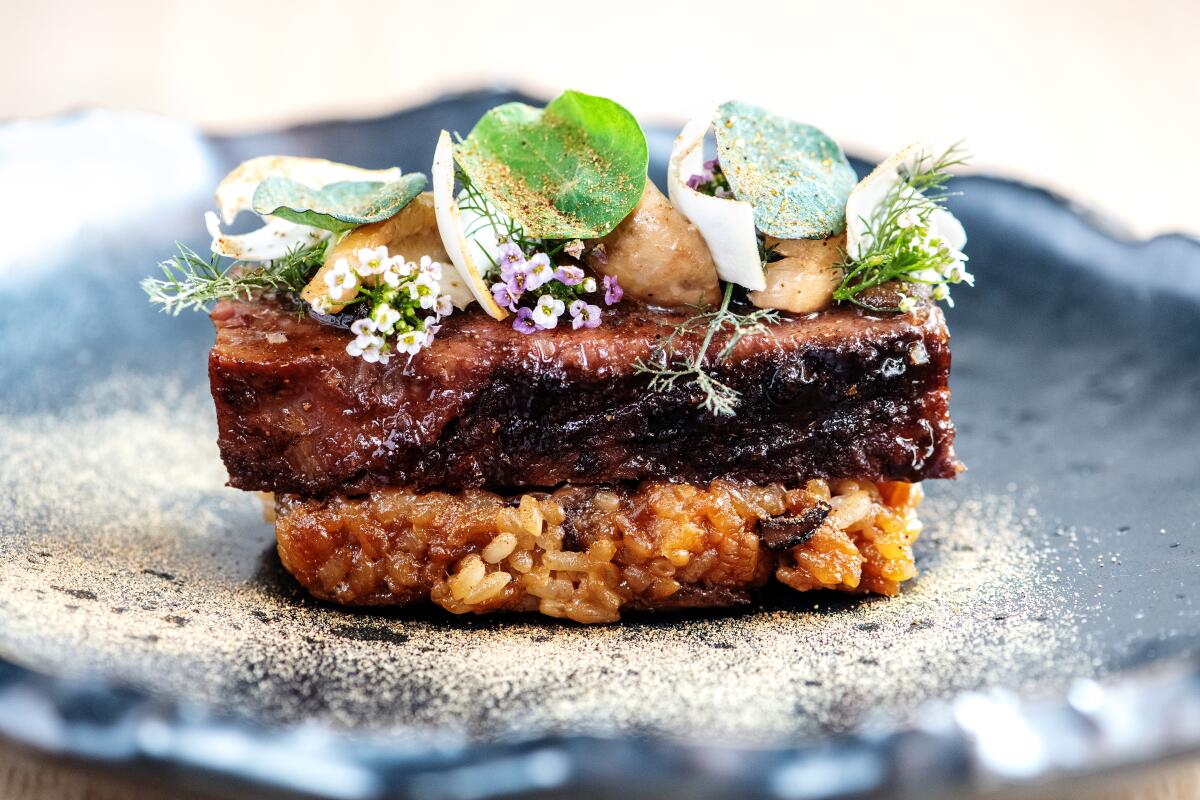
Kato
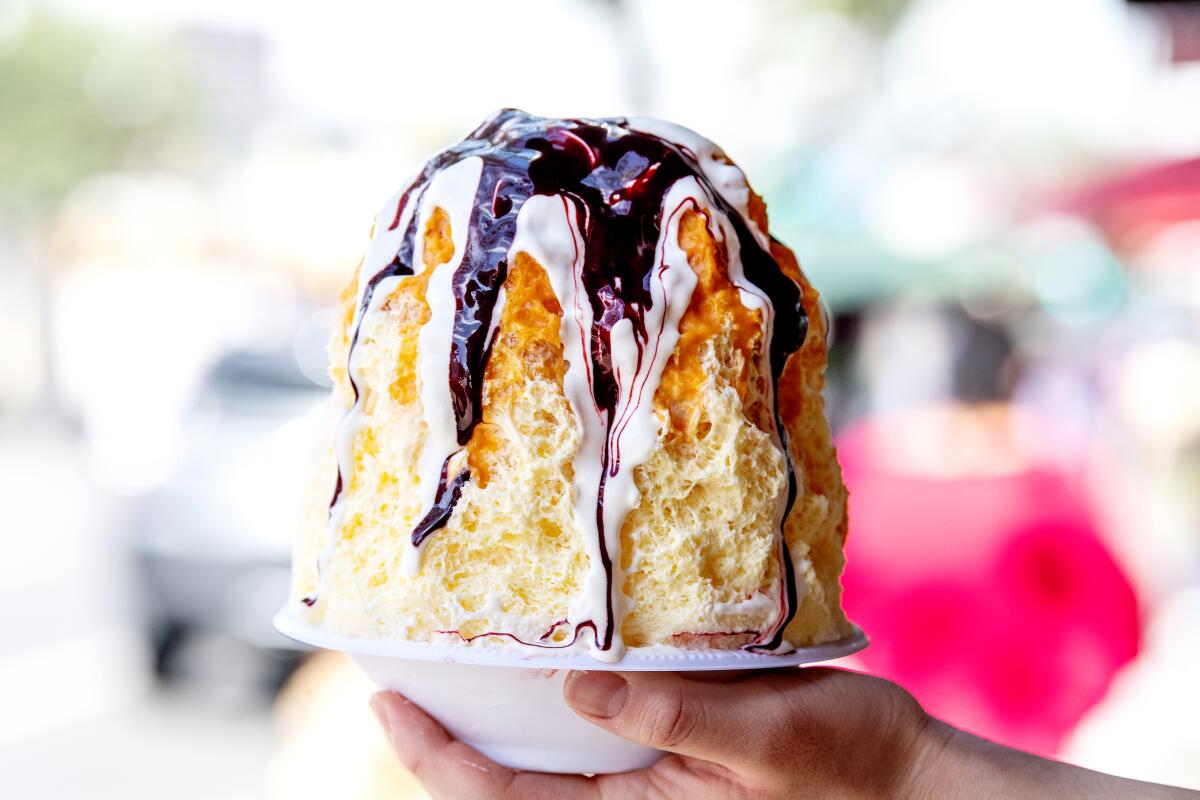
Katsu Sando
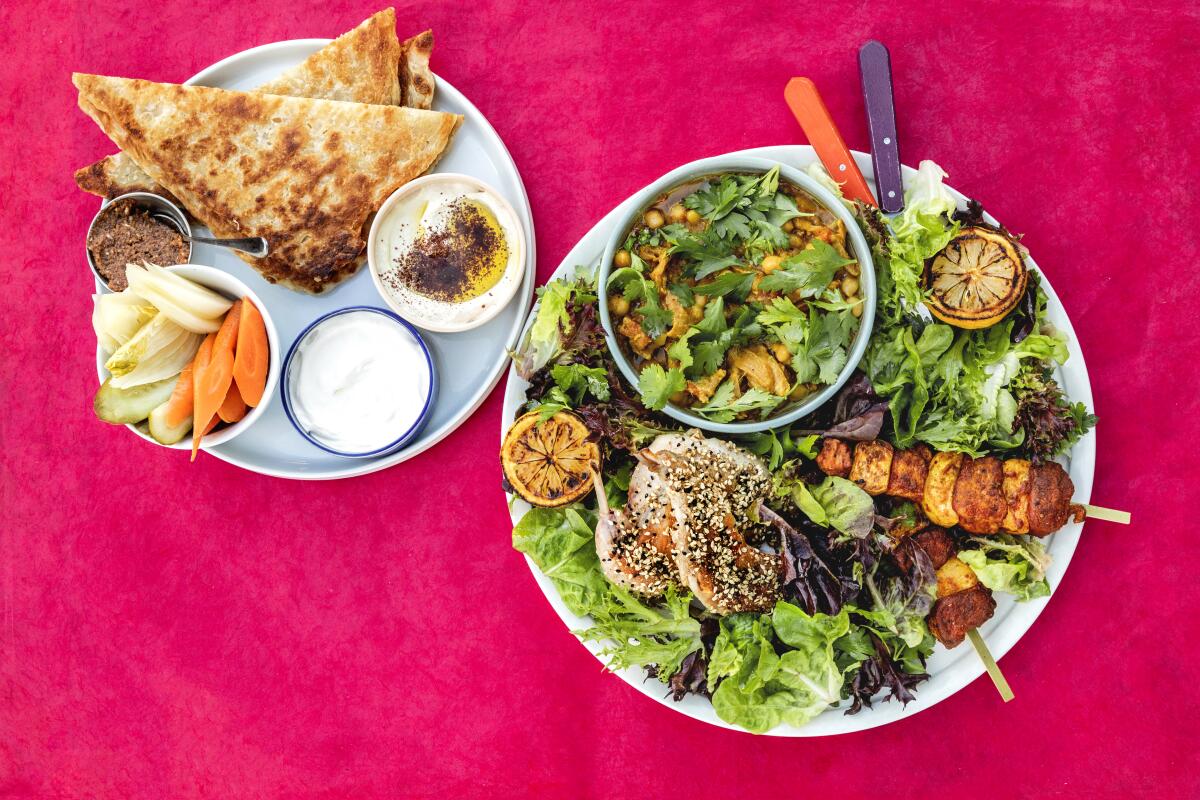
Kismet
The pies are still around (and great), though breakfast is on hold while Kramer and Hymanson focus on dinner. A quieter spirit has been stirring through the menu: Dishes such as clams in Meyer lemon and fig leaf broth and a lovely black cod arranged around sweet peppers, braised leeks and preserved mandarins join the long-standing lamb meatballs and fried cauliflower with caper yogurt. Pastry chef Meadow Ramsey nails a ricotta cheesecake with tart-sweet passion fruit caramel. Kismet is evolving subtly and meaningfully.
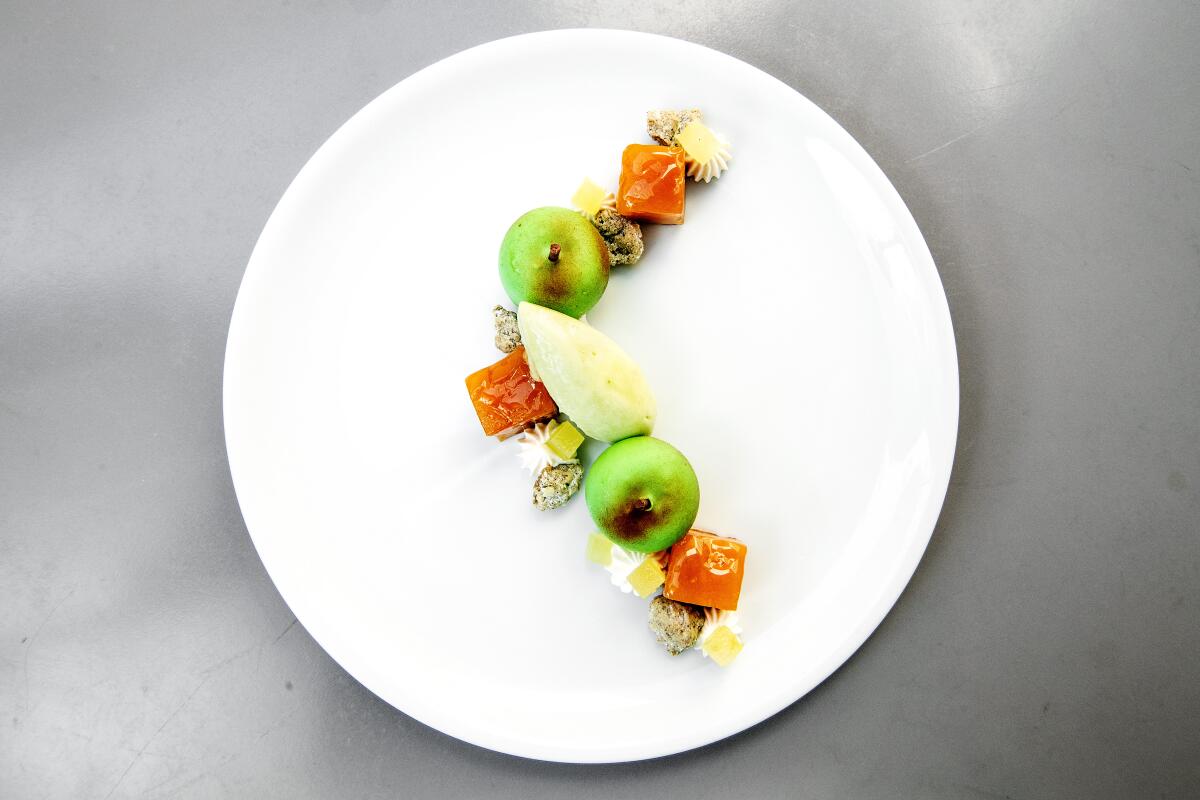
Knife Pleat
In March I had an unforgettable dinner at Knife Pleat celebrating Nowruz, the Persian New Year. The kuku sabzi (its closest Western equivalent is a frittata, but it’s in a category of egg dishes all its own) was dense with herbs but nearly as light as mousse; it preceded braised lamb shank over pilaf sweetened with dates and raisins. Sarmadi’s mother oversaw the meal, as she did when the couple hosted the feast at Spring. I can’t help hoping, though, that the glories of Iranian cuisine might occasionally carry over to the regular menu as well? A guy can dream.
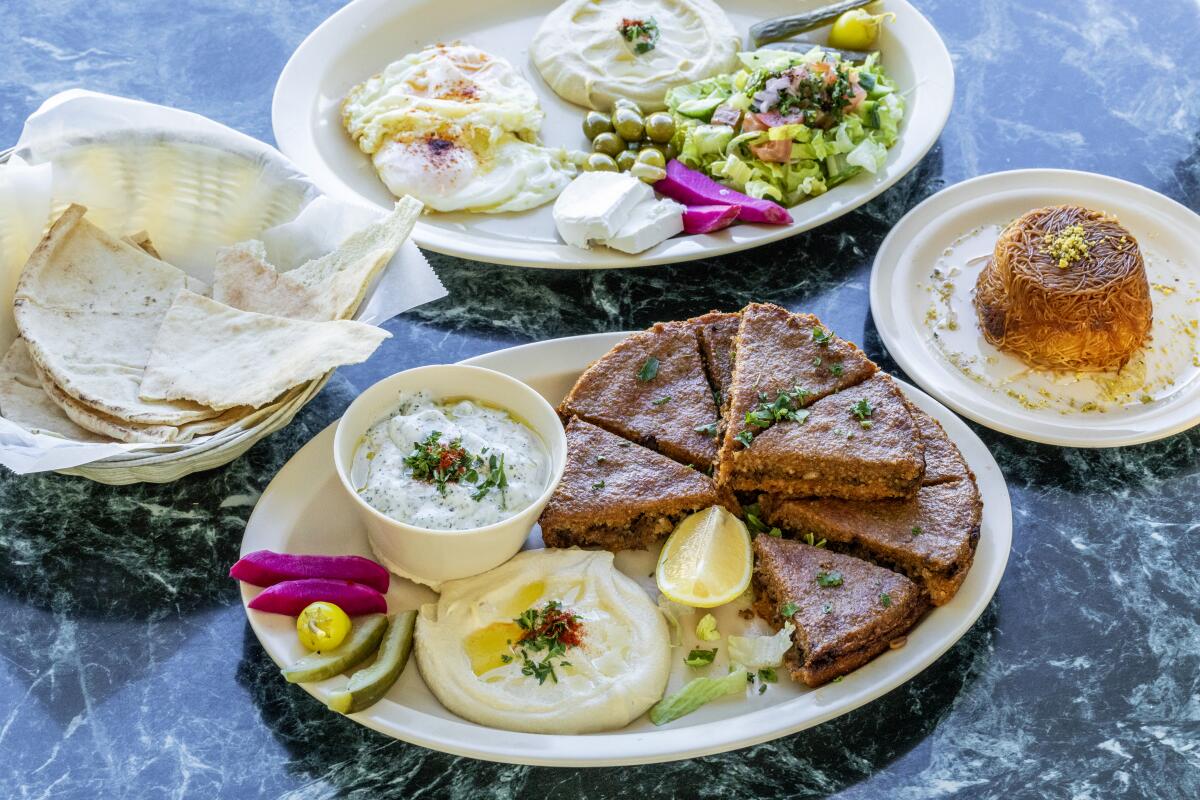
Kobee Factory
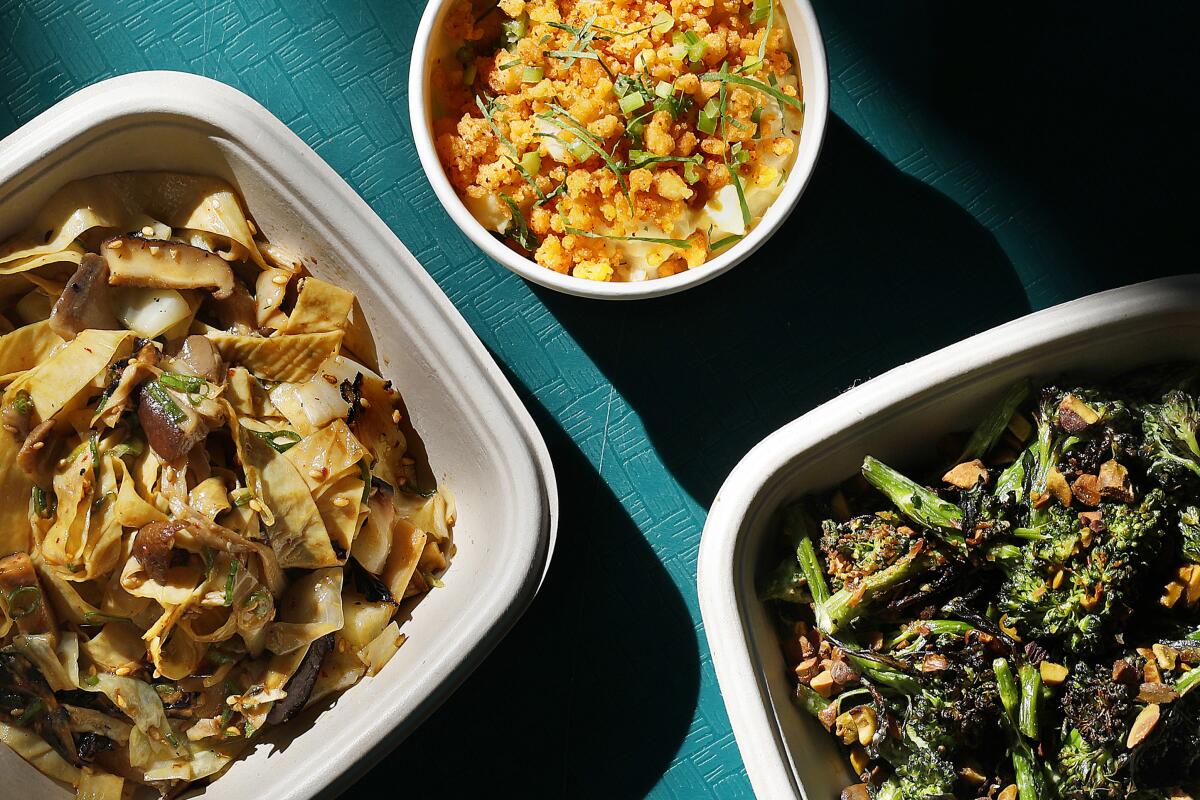
Konbi
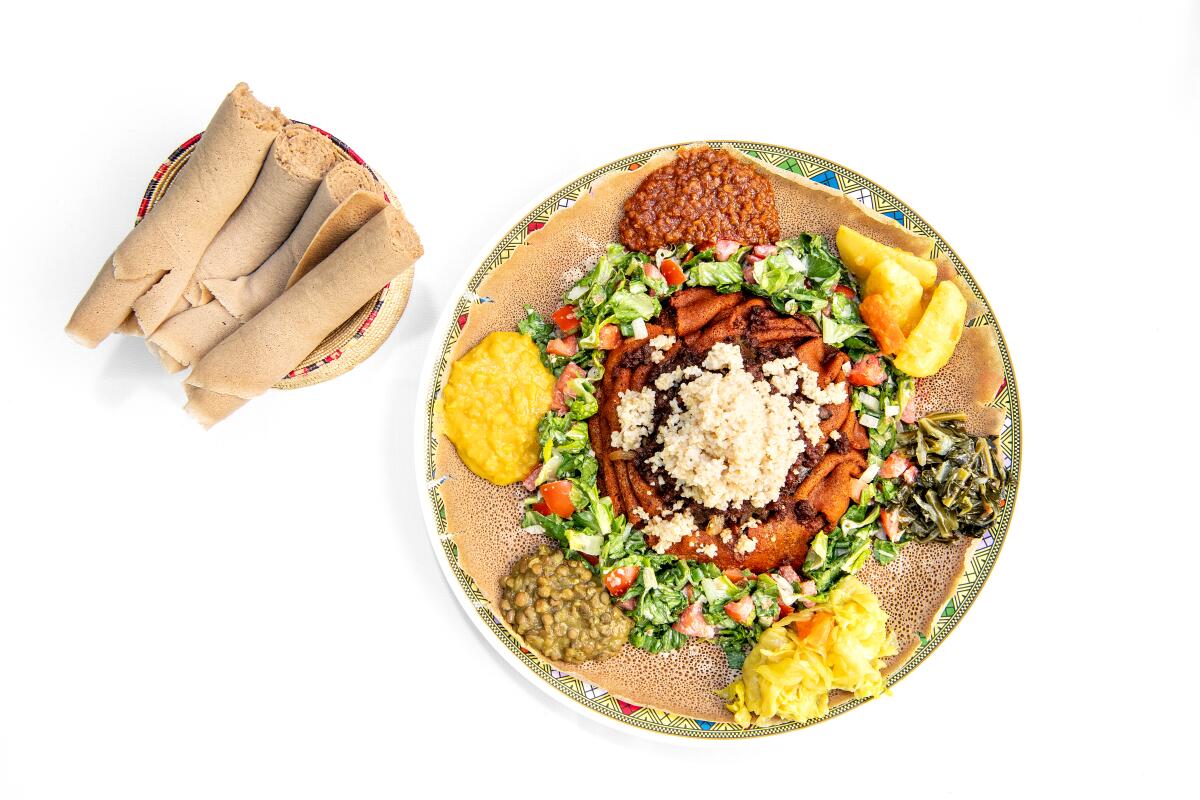
Lalibela
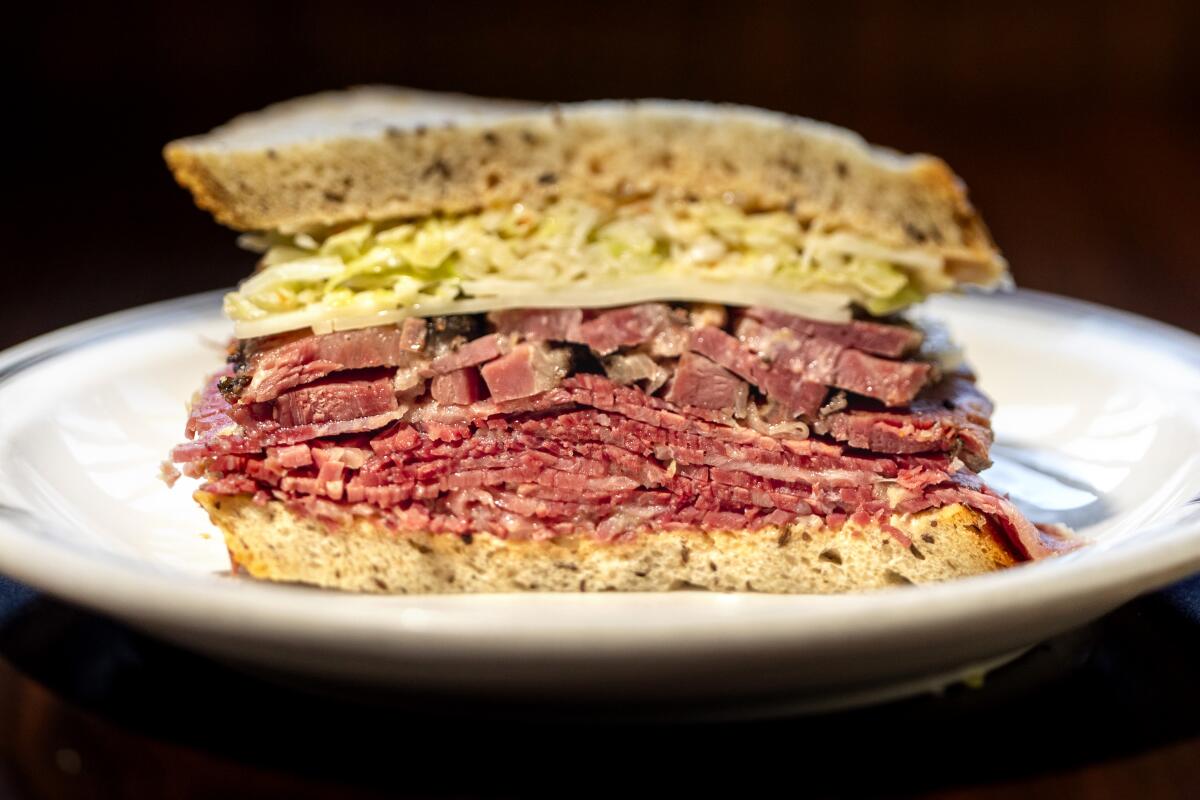
Langer’s
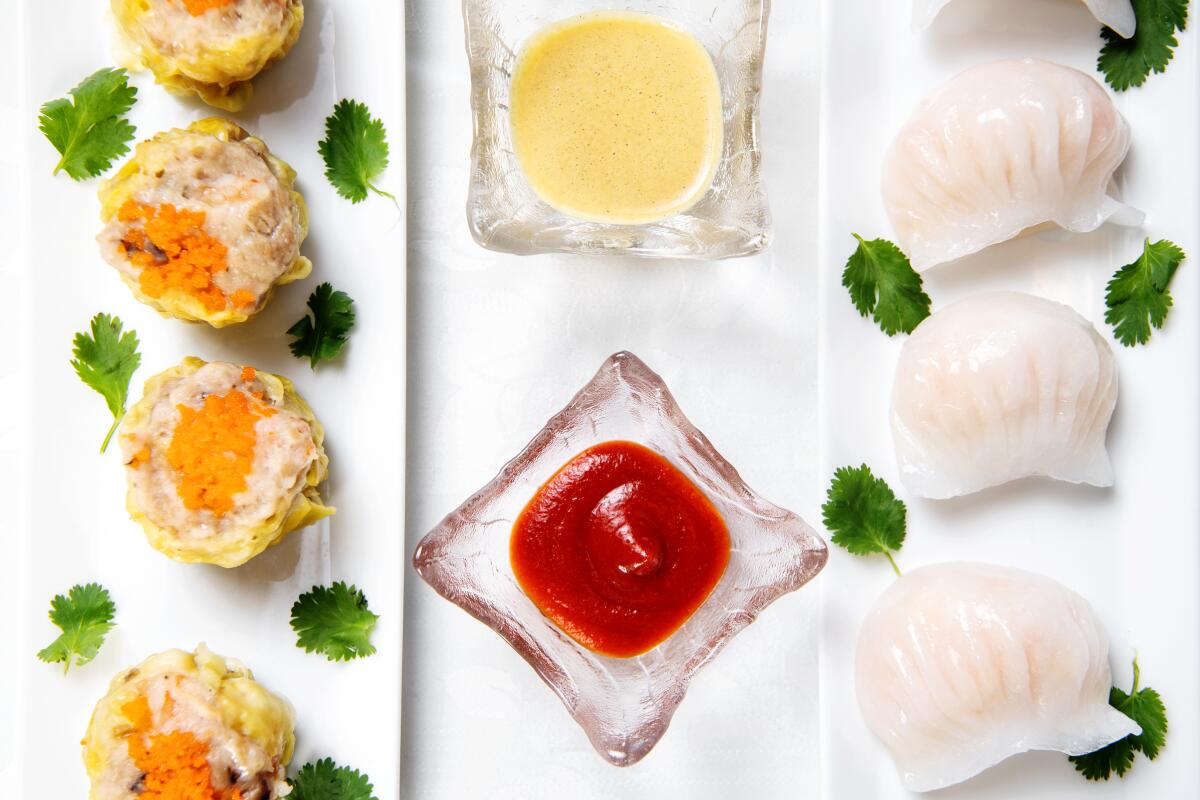
Lunasia
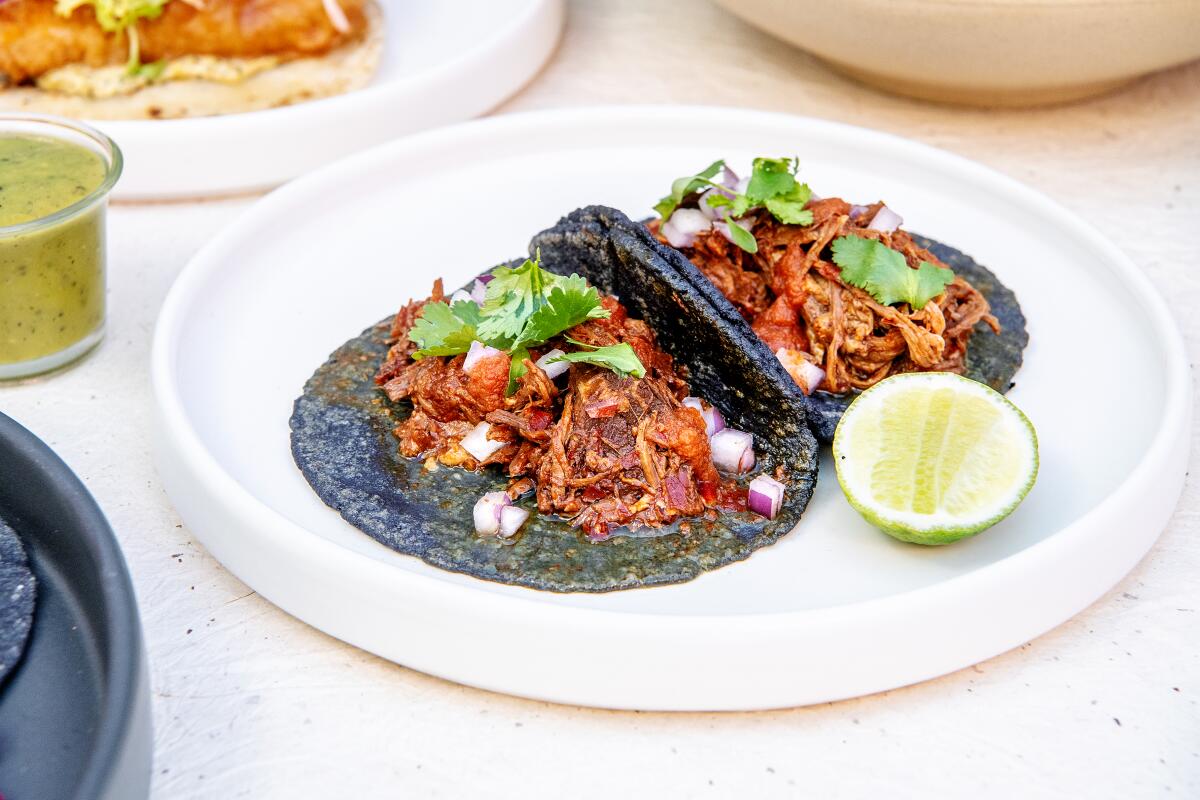
Macheen at Milpa Grille
His breakfast burritos are among my favorites in the city (and I’ve eaten my share). Perez lines flour tortillas with creamy scrambled eggs enriched with nutty Swiss cheese and then piles on spiced, deep-fried Tater Tots. Meaty options include birria with chipotle aioli, pork belly with avocado salsa and (the standout) Filipino longanisa with salsa macha. For vegetarians, there are Brussels sprouts frizzled to papery curls and glossed with chipotle aioli.
Milpa Grille still serves owner Deysi Serrano’s Mesoamerican-inspired bowls, built on beans and corn, and enchiladas bathed in guajillo chile sauce. She also hosts baristas Xuan Carlos Espinoza and Joel Espinoza — they call their pop-up Cafe Cafe Mobile and make espressos or pour-overs with beans from places like Puebla and Oaxaca. The crisis has challenged the restaurant industry to reconsider its entrenched models of business; this kind of under-one-roof symbiosis might be a blueprint to help lead the way forward.
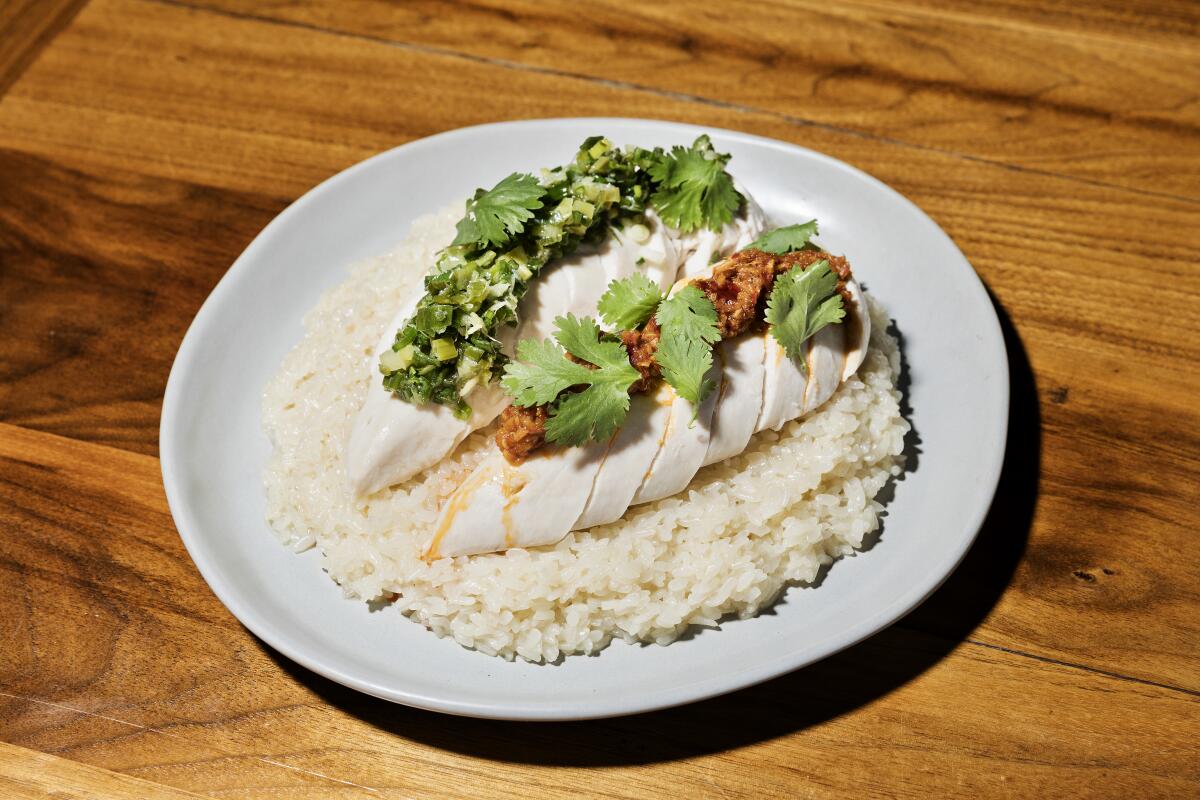
Majordomo
This being the strongest West Coast arm of David Chang’s vast empire, Majordomo will always accommodate groups of diners who demand the gargantuan short rib ssam. But also consider the boiled chicken served in two courses: masterclass-level poached breast meat sliced and served over rice with two sauces (ginger-scallion and a heady red chile paste), followed by soup made from double-rich stock and teeming with hand-cut noodles. It might not have the swagger of the ssam, but I’d argue that it’s even more delicious.
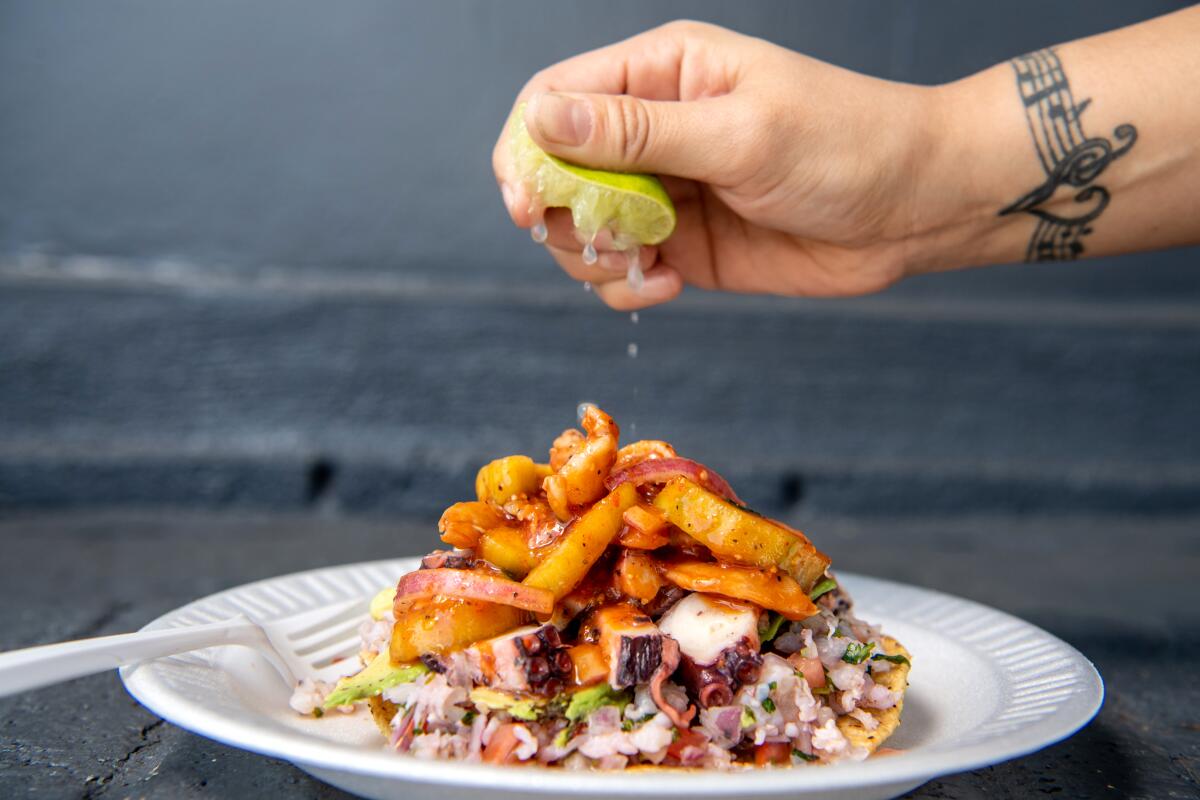
Mariscos Jalisco
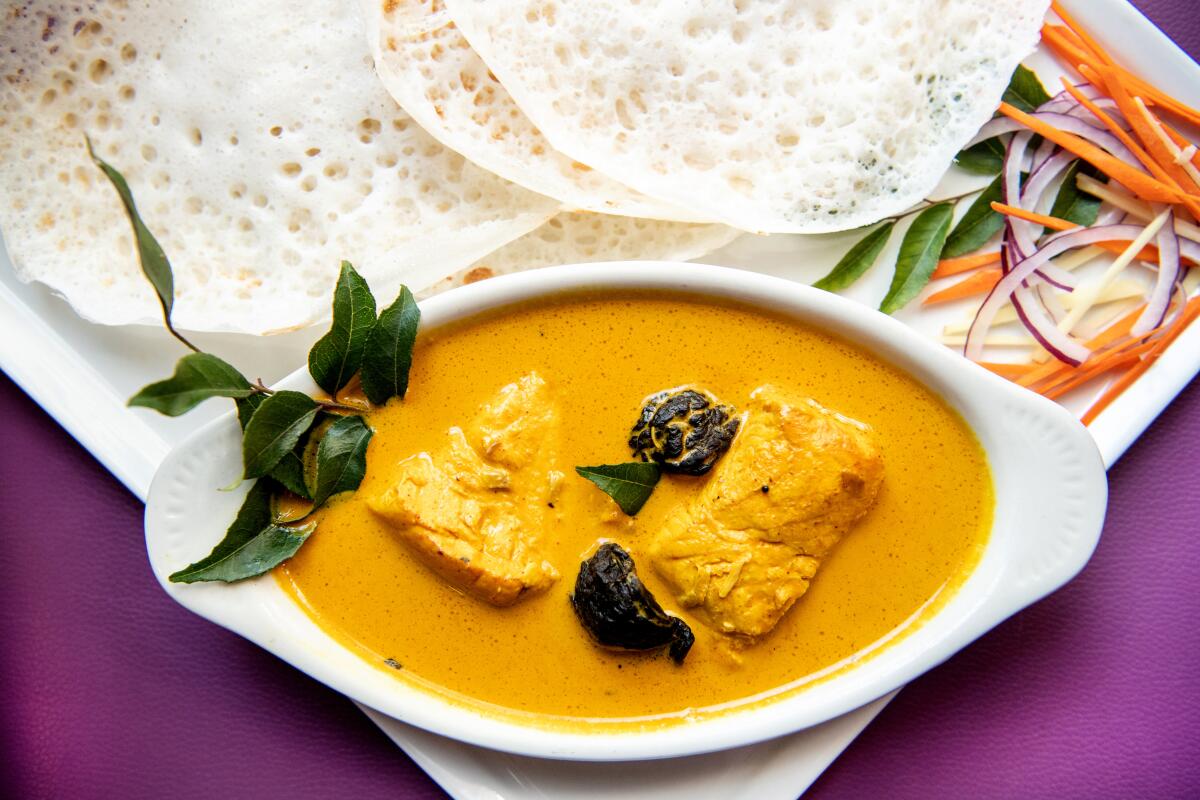
Mayura
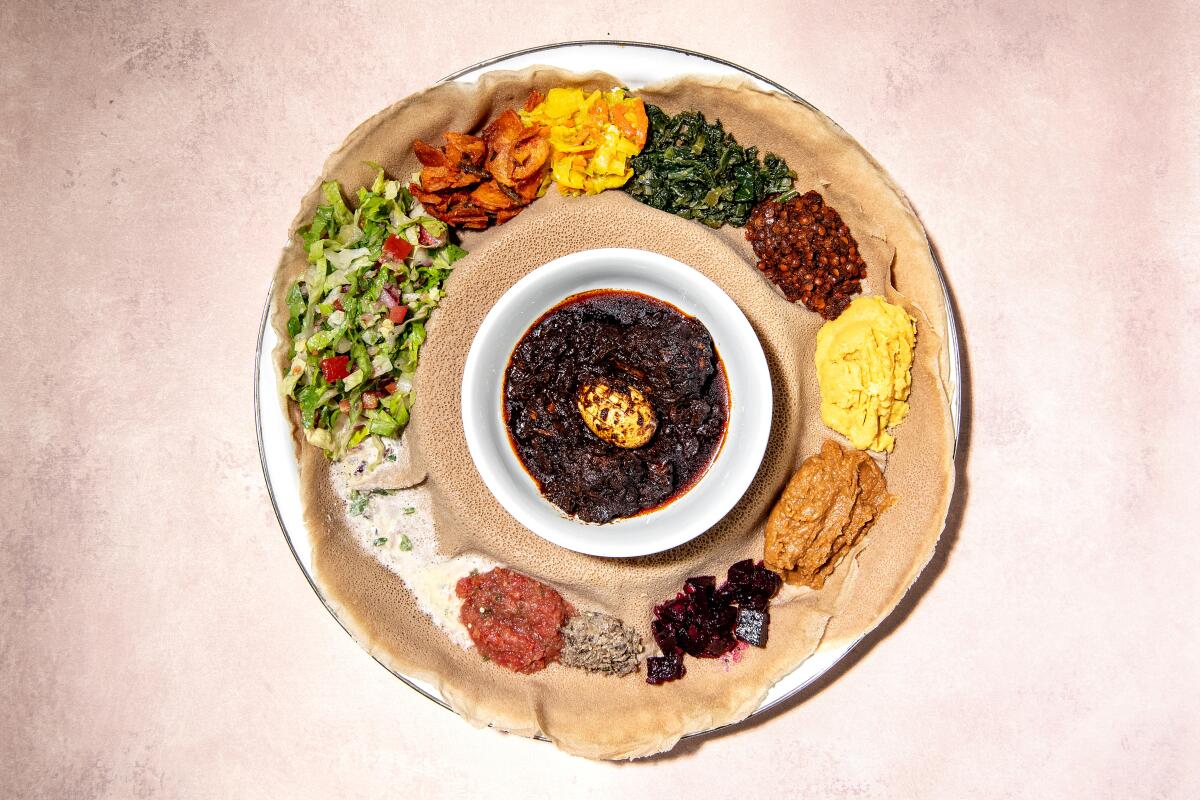
Meals by Genet
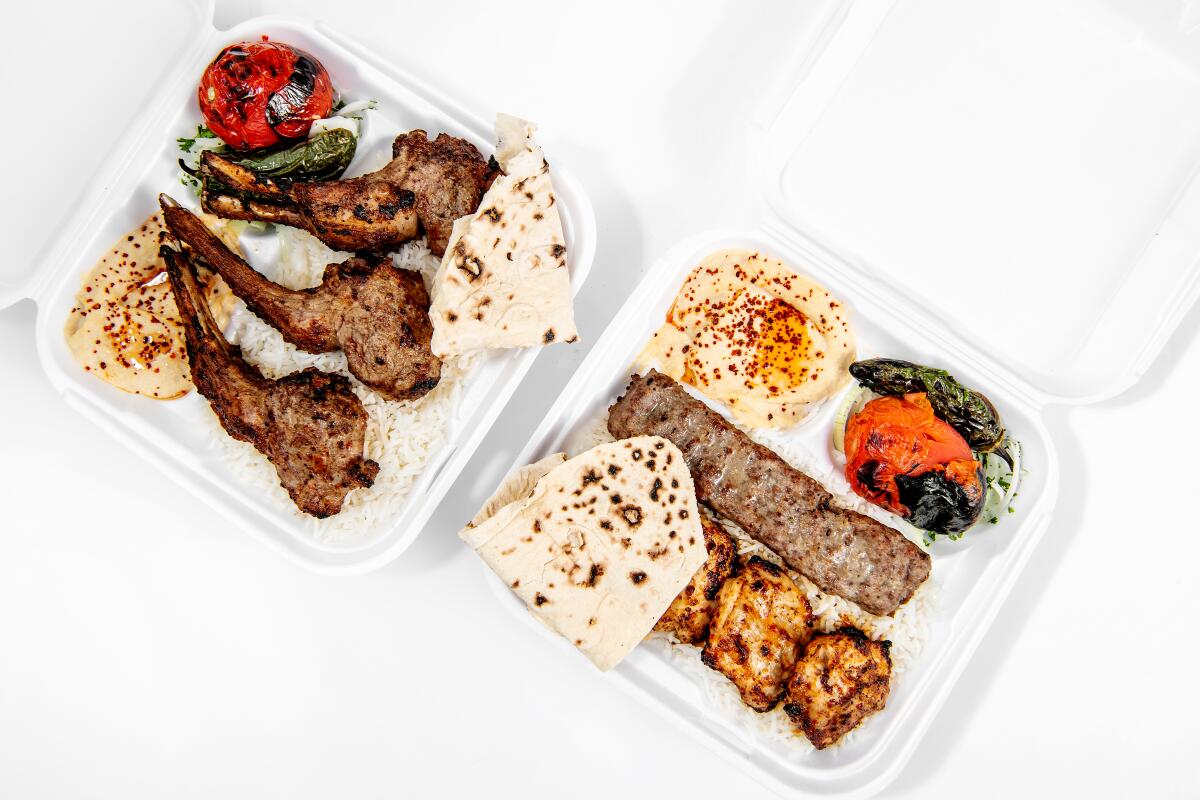
Mini Kabob
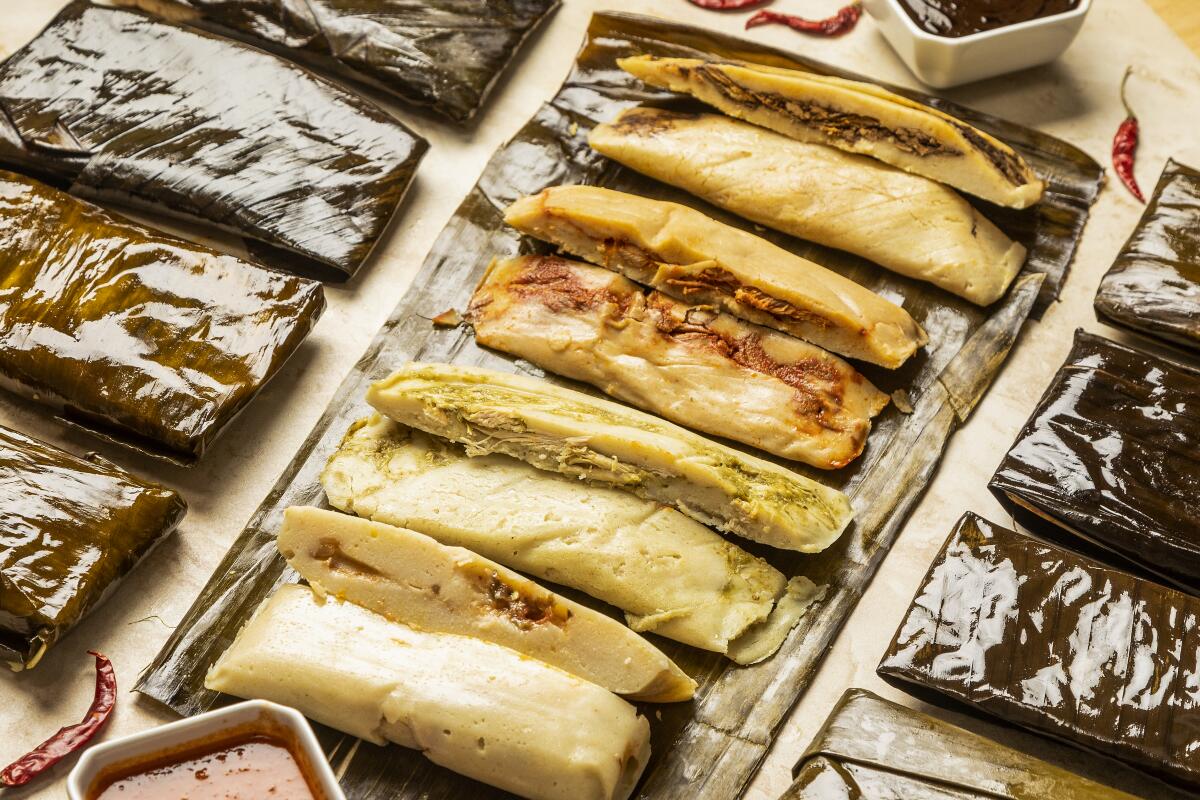
Mi Ranchito Veracruz
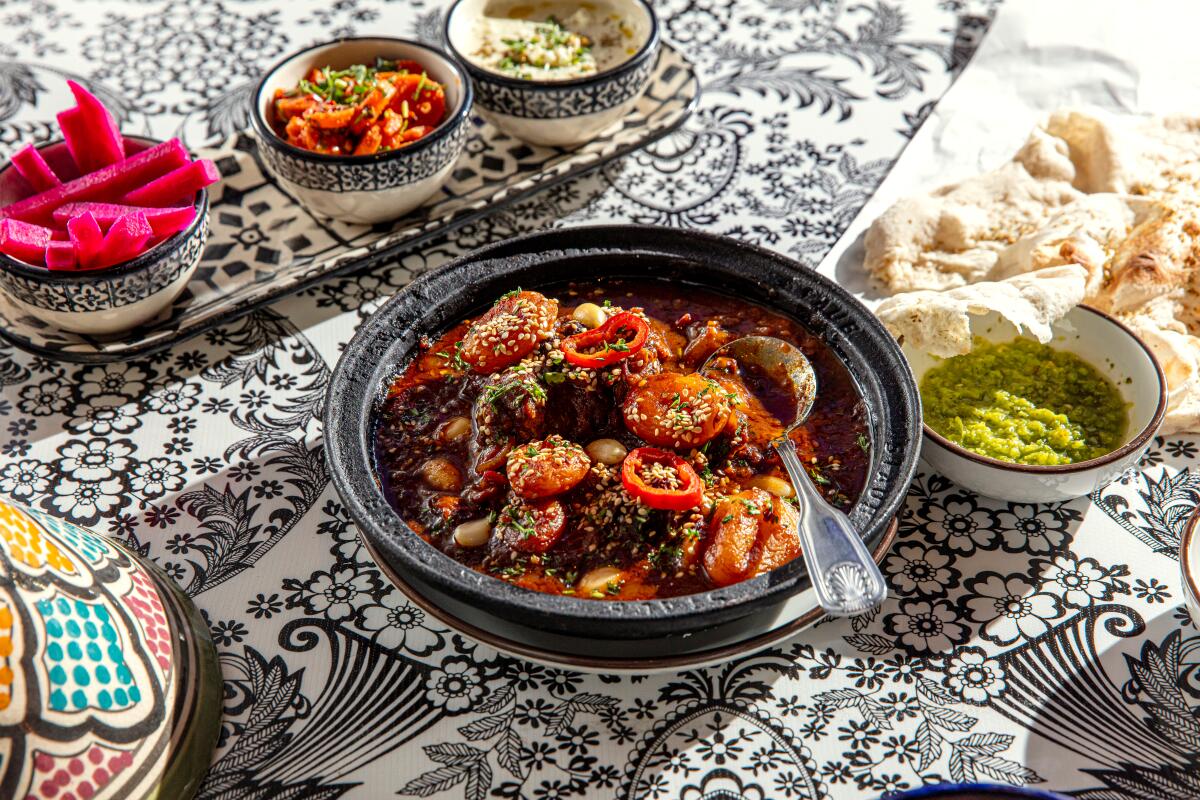
Mizlala
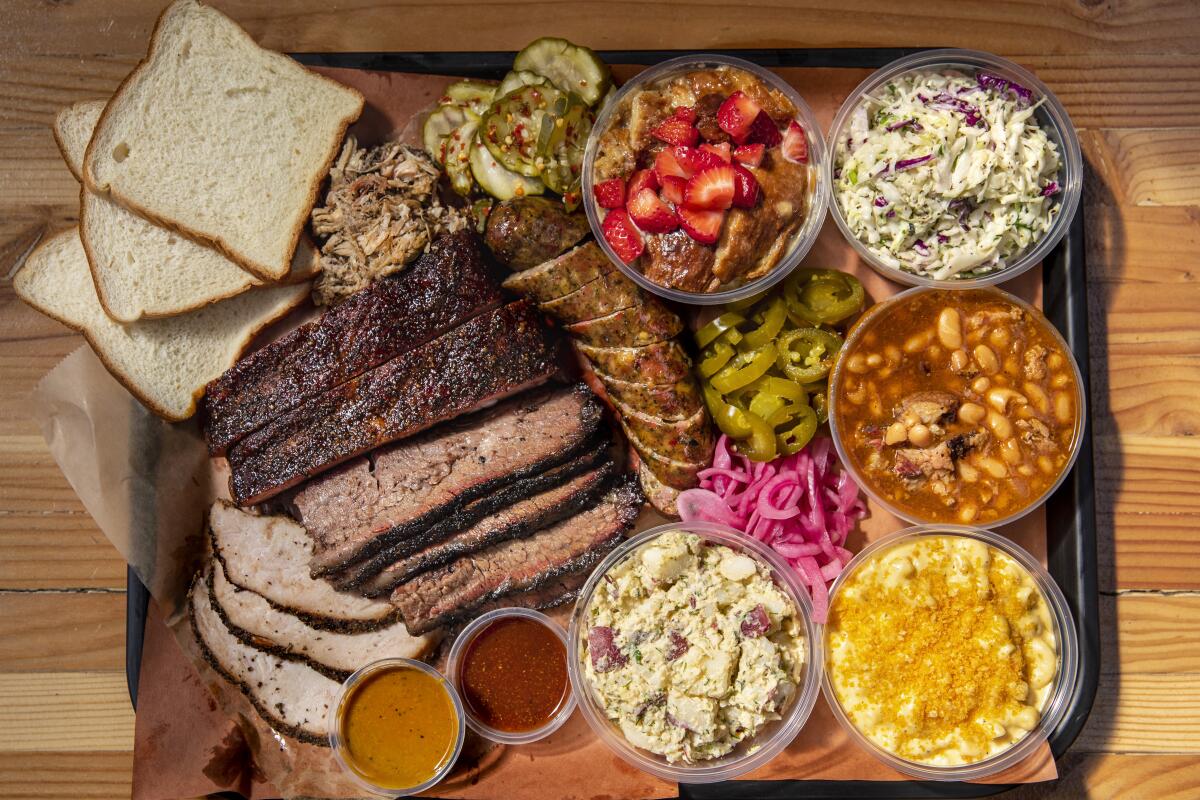
Moo’s Craft Barbecue
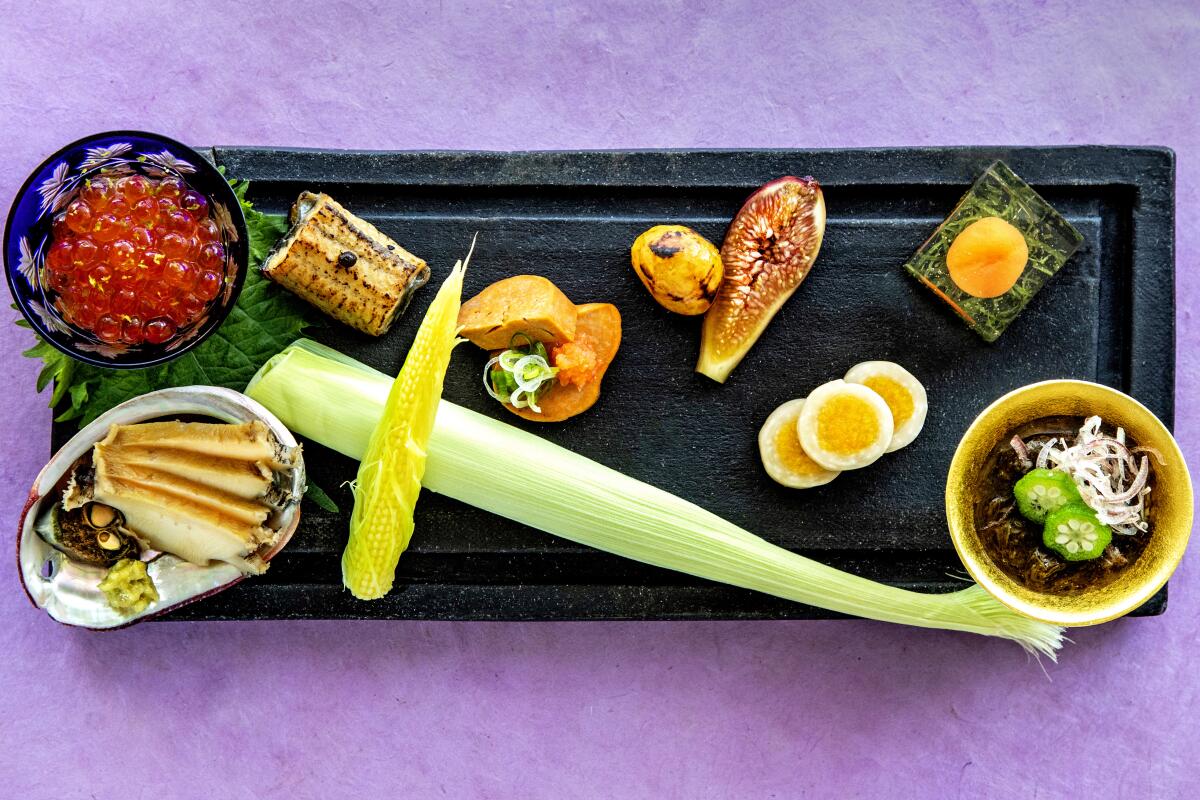
Morihiro
Diners choose from among three tiers at the restaurant. Four-course meals, served at one of the room’s seven tables, range from $45 to $100 (depending on the amount and style of sushi) and include small appetizers with miso soup and a small dessert. Omakase, an investment of appetite and funds, costs $250 per person at a table and starts at $350 per person in front of Onodera at the sushi bar. This obvious extravagance — after courses of small plates as rich in texture as flavor, followed by a dazzling procession of nigiri — will leave you very full and deeply aware that this is what fine dining in Los Angeles is all about.
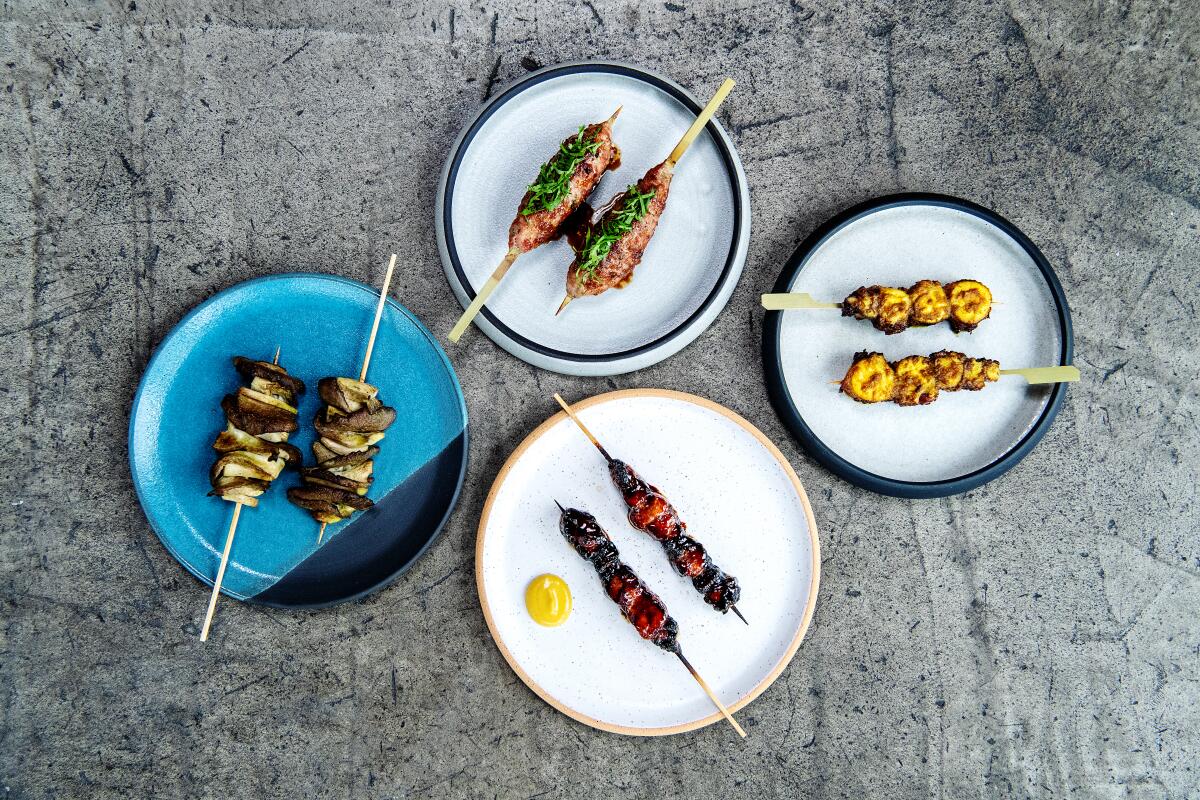
Needle
In the hardest months of the pandemic he cycled through various carryout strategies, including takeout kits for char siu and outdoor family-style feasts. Lately Wong and his team are orchestrating reservation-only dinners that riff on siu yeh, Hong Kong’s late-night street-food snack traditions. Customers sit at patio tables or along a counter directly on the sidewalk, eating skewered meats (pork meatballs, chicken thighs dressed with ginger and scallions) that Wong pulls from the flames of a nearby grill. At a time when many of our once-grand Cantonese restaurants are closing or narrowing their scope, Needle’s fresh and pleasure-filled regard for the cuisine feels especially meaningful.
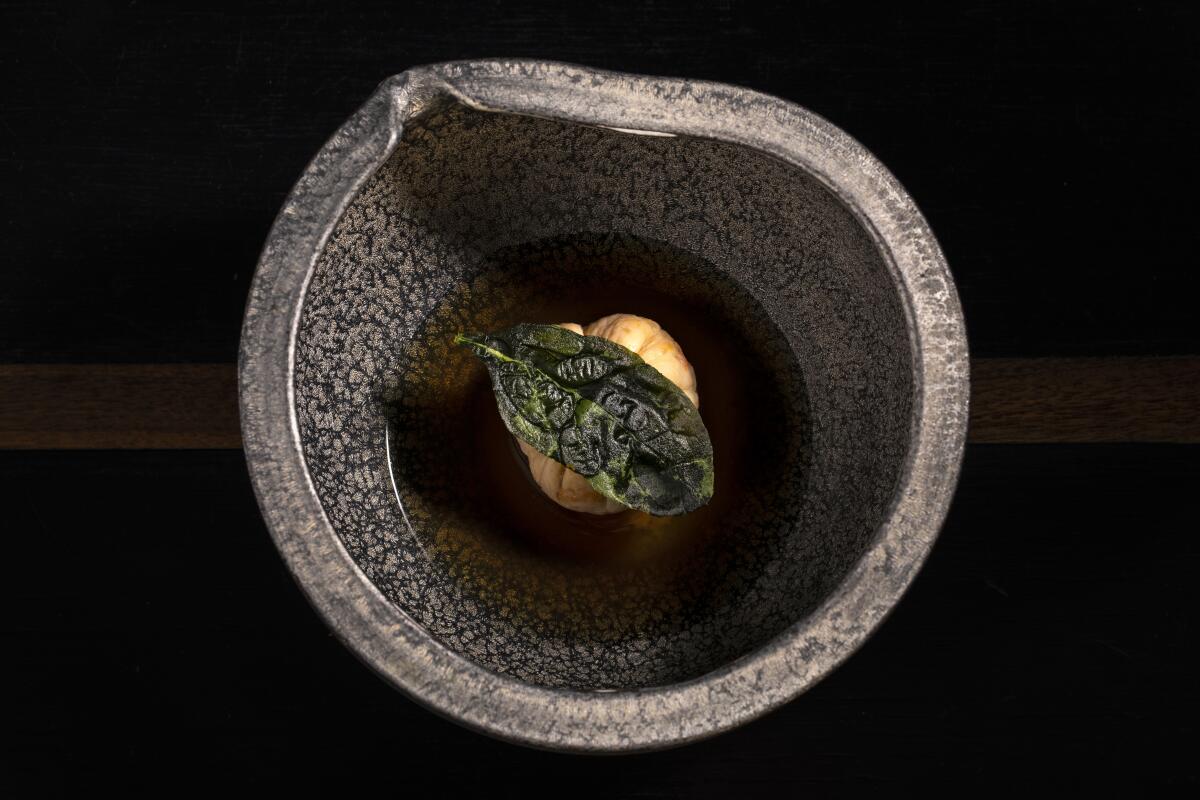
n/naka
When Helen Rosner wrote a profile of chef-owner Niki Nakayama for the New Yorker a couple of years back, Nakayama told her she thought of her approach as “California kaiseki.” There’s no more apt description. She and Carole Iida, her wife and fellow chef, begin from the ritualized, multicourse form of kaiseki, which evolved out of foods served with the Japanese tea ceremony and emphasizes a mastery of many cooking techniques. They adapt the structure to an Angeleno’s regard for the seasons (Nakayama was raised here) and to her staunch sense of individualism.
The most amazing thing about dining at n/naka may be the wide-open serenity you feel after a few hours in the 26-seat dining room, a sensation not unlike easing into the ninth day of a rare two-week vacation. Like, actually relaxed. And similar to carving out that kind of time off, you will have to fight like hell for a reservation at the restaurant. It will be worth it.
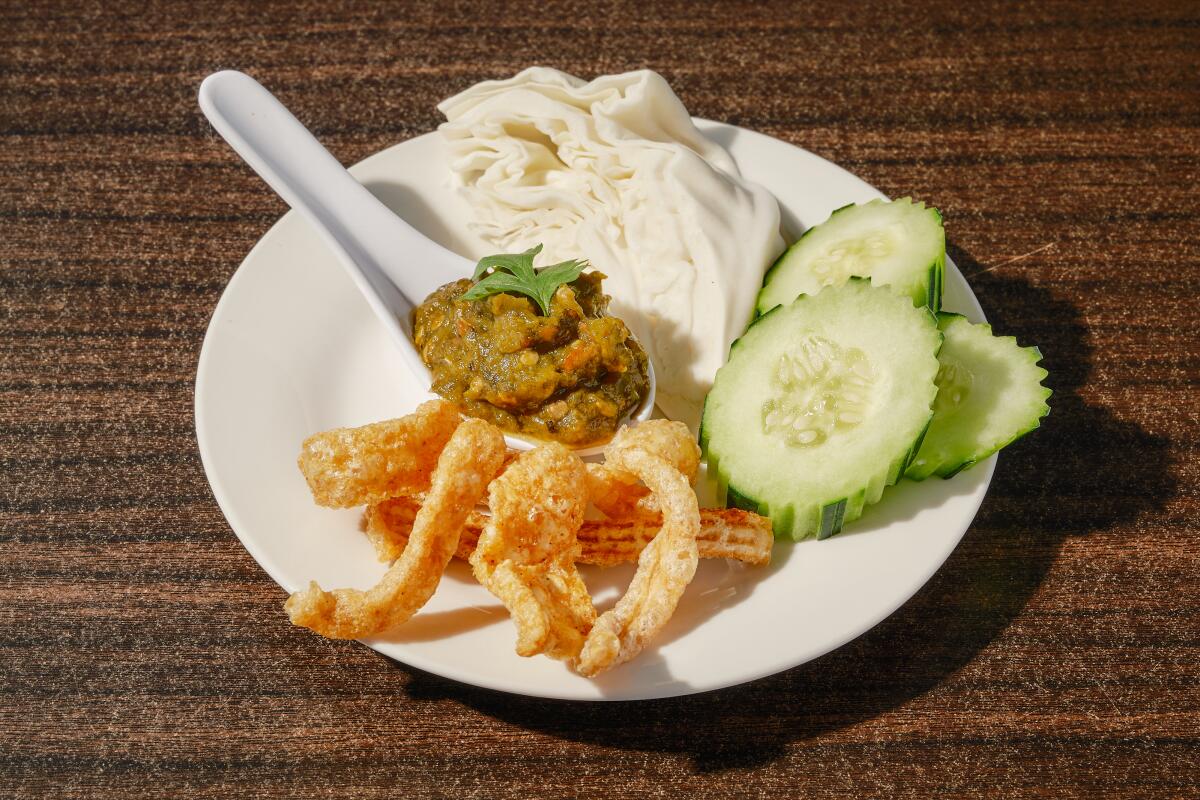
Northern Thai Food Club
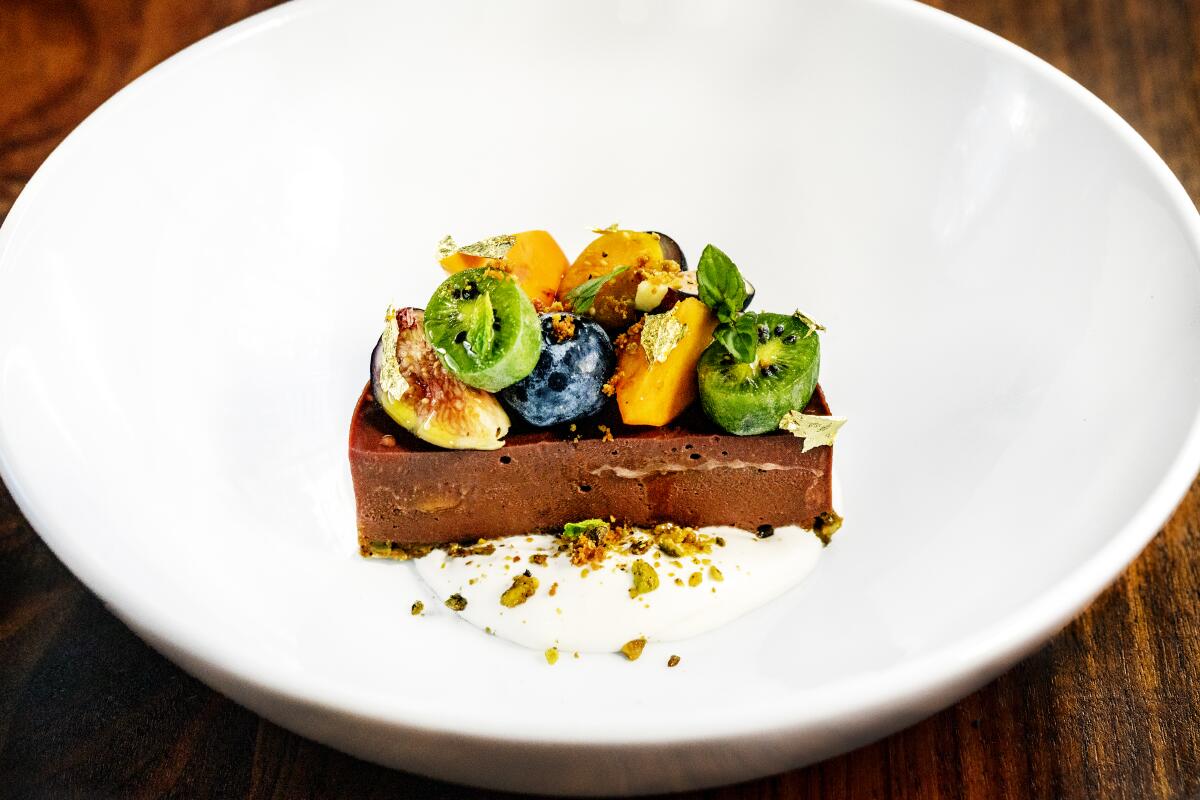
Orsa & Winston
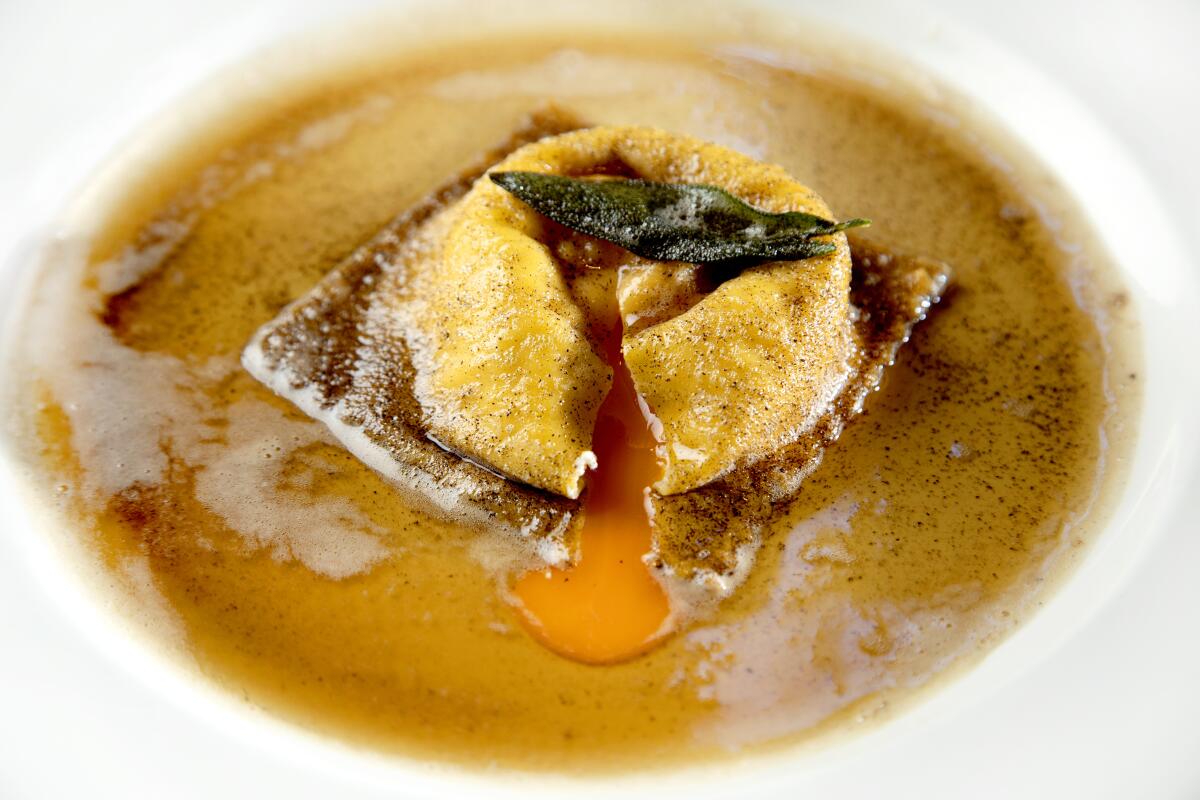
Osteria Mozza
What’s important for Los Angeles is that her Hancock Park flagship remains one of the city’s great celebration restaurants, a place for locals and visitors to savor Angeleno-Italian cooking that sets the bar. Overseen by executive chef Elizabeth Hong (whose mother, Jenee Kim, is chef-owner of Park’s BBQ), the menu is both familiar and sometimes gently mind-opening. A small knot of burrata strewn with dusky, sun-dried peppers with peppery olive oil and garlic toast is so simple and so special — which is to say, so Mozza. Go heavy on the pastas, save room for Dahlia Narvaez’s torta della nonna rich with pine nuts … and, if you have the room or the ambition, try to slip into the pizzeria next door for the iconic squash blossom pie.
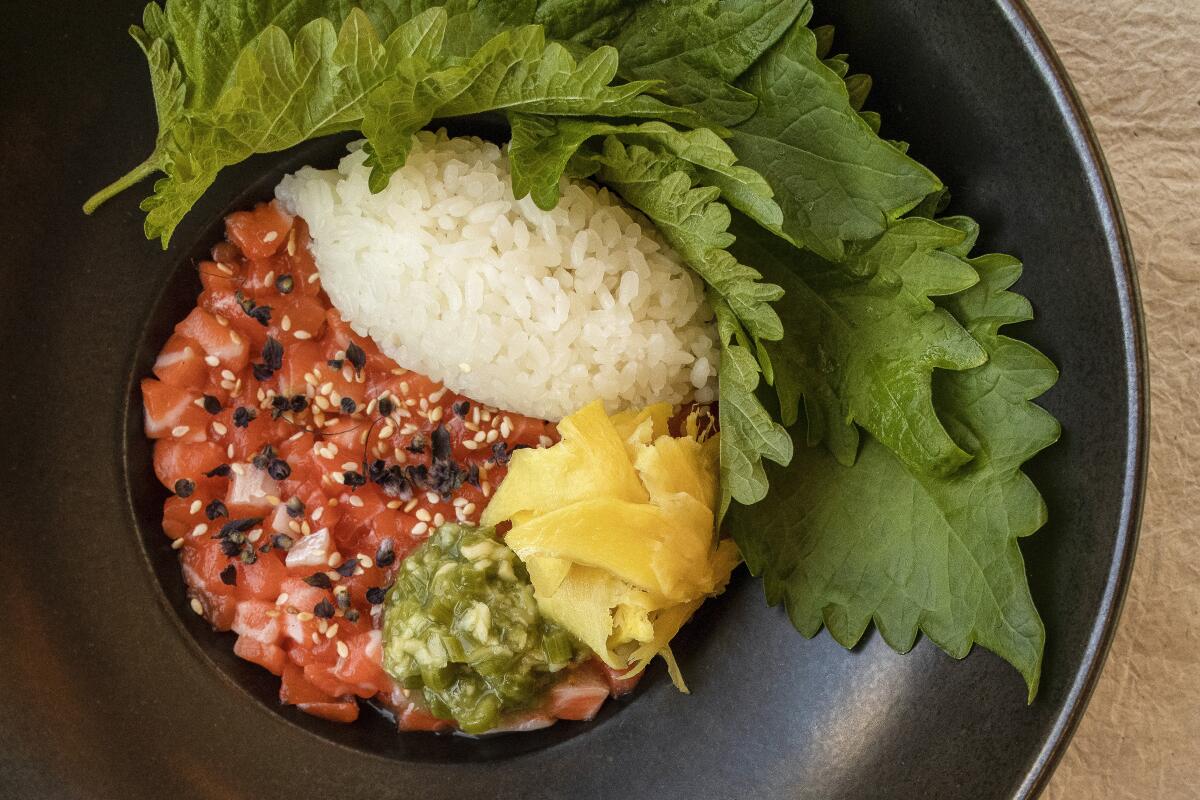
Otium
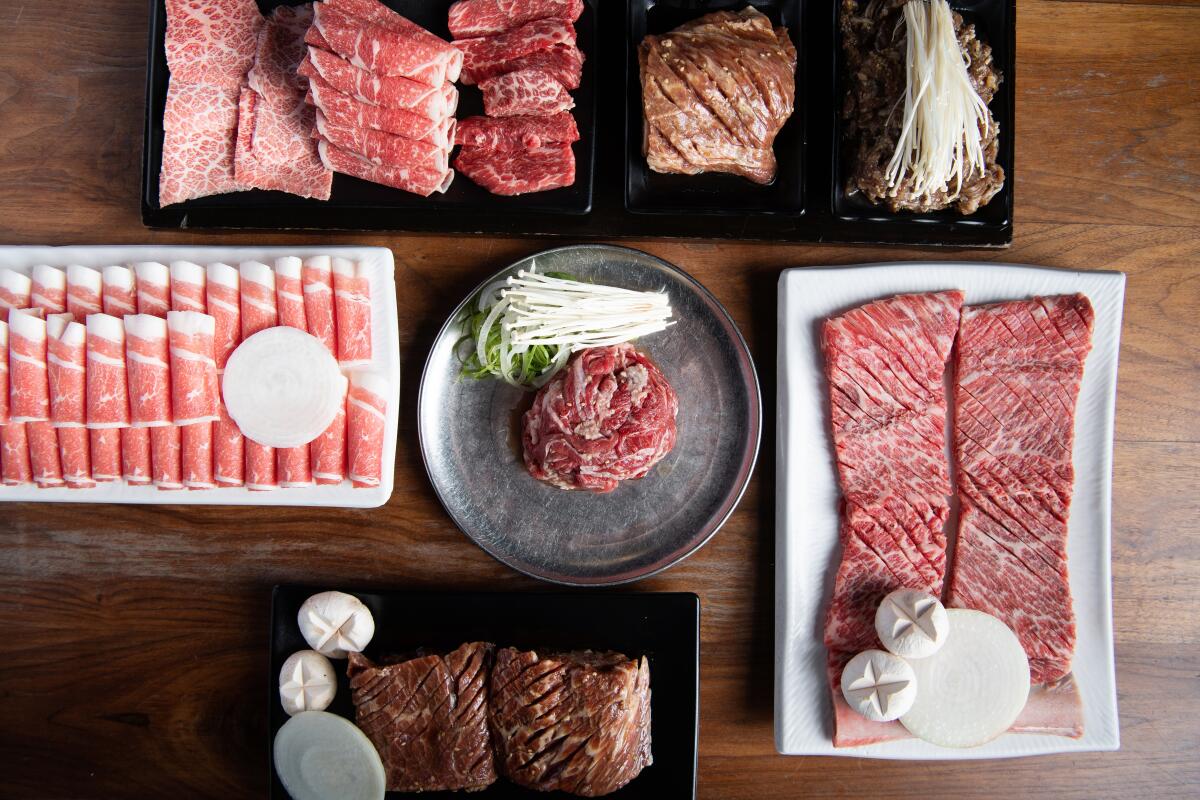
Park’s BBQ
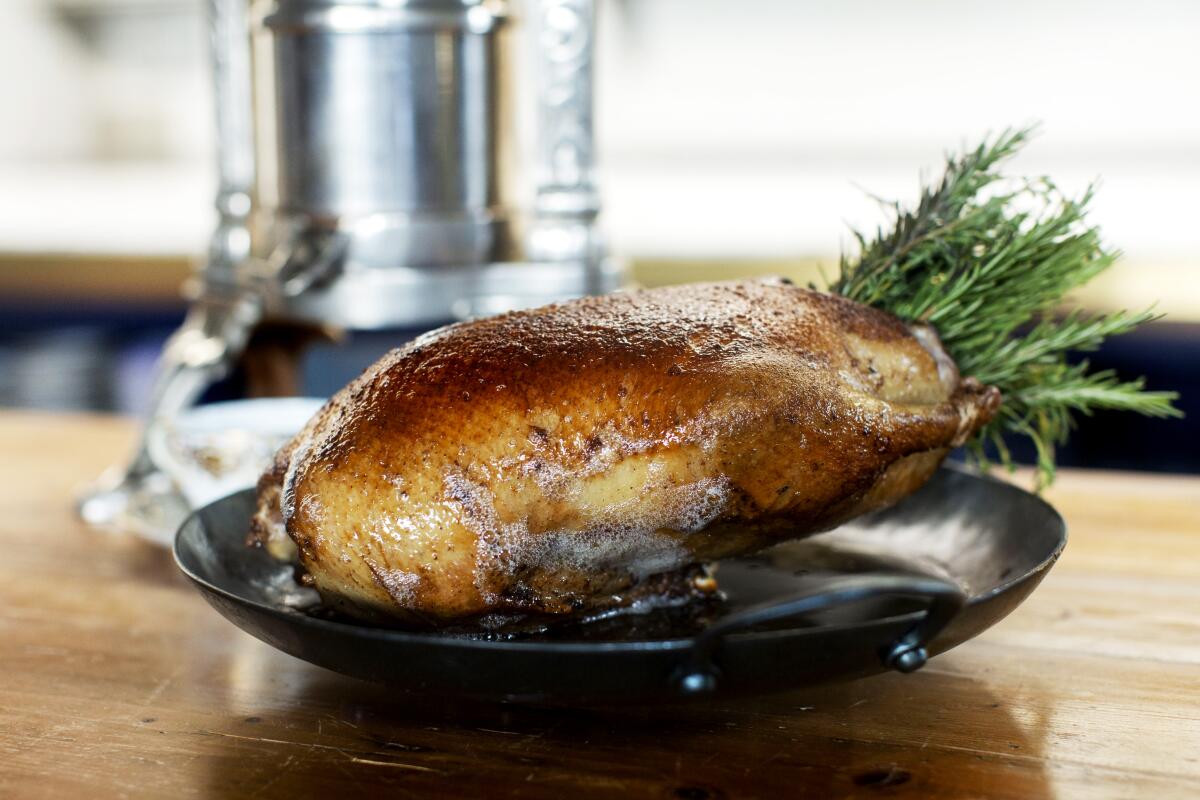
Pasjoli
During the pandemic, Beran closed his tiny, cerebral tasting-menu restaurant, Dialogue, so he can be spied in Pasjoli’s open kitchen almost every night. As a chef he’s always been a precisionist brainiac, geeking out on laborious technique and symbolist presentations. The autumn season finds orange and brown micro-flora scattered like fall foliage over a buttery crab crêpe, and loamy duck rillettes in a tart shaped like a leaf and surrounded by black-green lettuces.
The food is evolving. Initially the restaurant aimed to re-create canonical Gallic dishes: steak tartare, a trembling onion tart that subbed for soupe a l’oignon, the gory and glamorous pressed duck that was, at first, tableside theater and now is prepared in the kitchen. Now there are dishes like a pork chop in a reduction sauce made from trotters and ham hocks and finished with a hazelnut vinaigrette, or gorgeously seared halibut over yuzu beurre blanc and a tumble of sautéed broccoli, spinach and pine nuts. It comes off as less controlled and more pleasure-centered. French is still the default shorthand for the cooking. “Beranaise” would be more accurate.
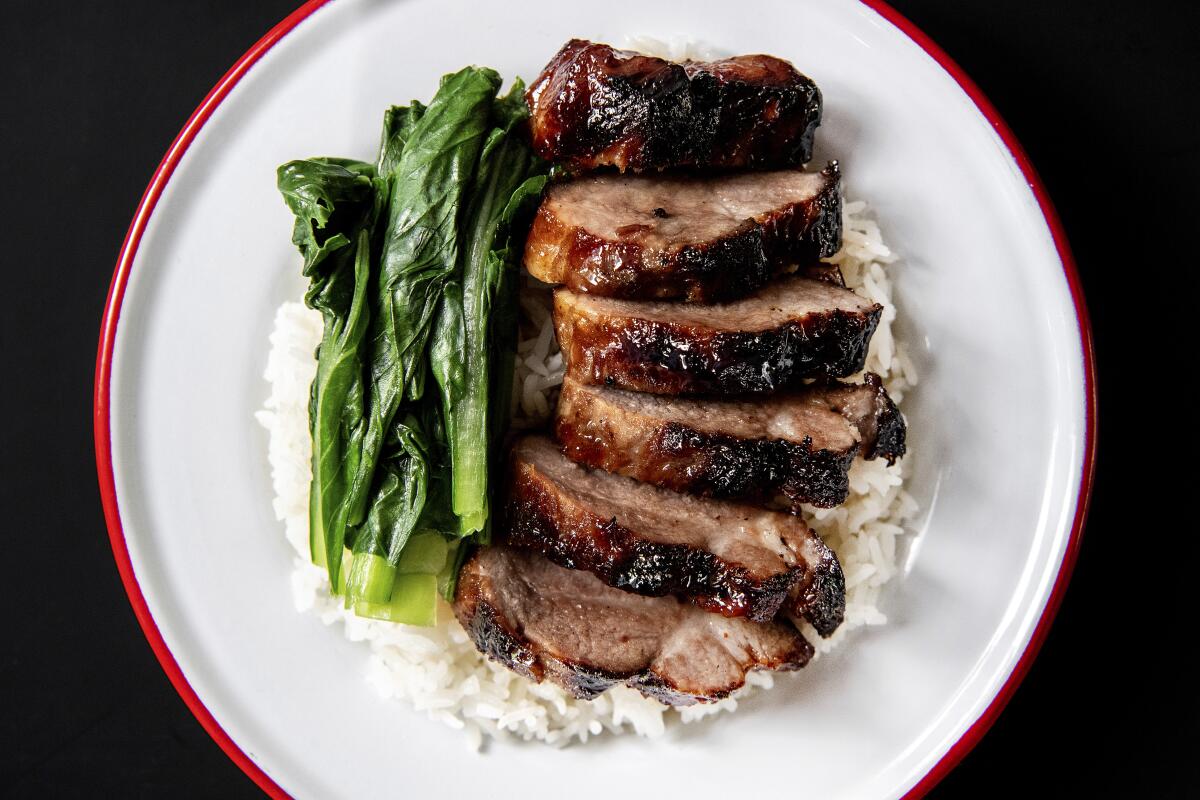
Pearl River Deli
As deadlines for this project neared, Lee threw out a new curveball: He announced he’s closing the Far East Plaza location and moving 2 ½ blocks up the street, to a larger space in the building that houses the wonderful market Sesame L.A. Will the new Pearl River Deli be open by year’s end? You’ll need to check Instagram.
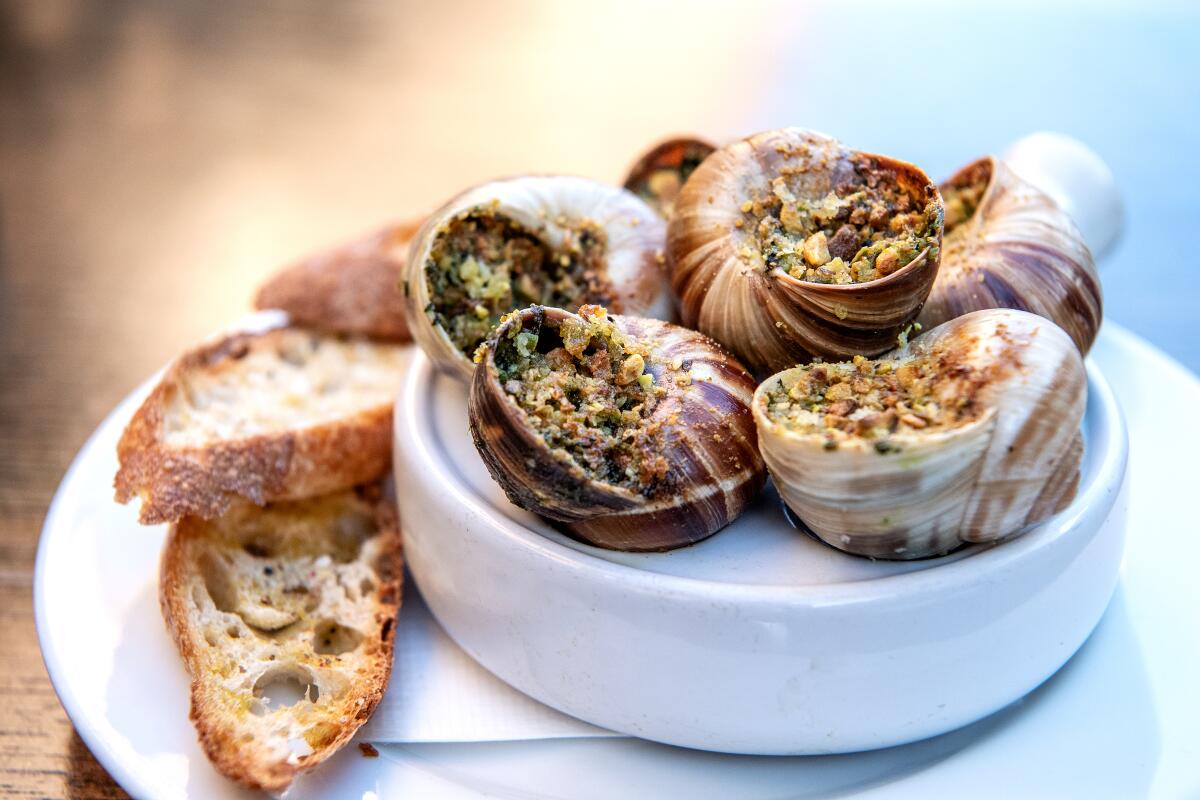
Perle
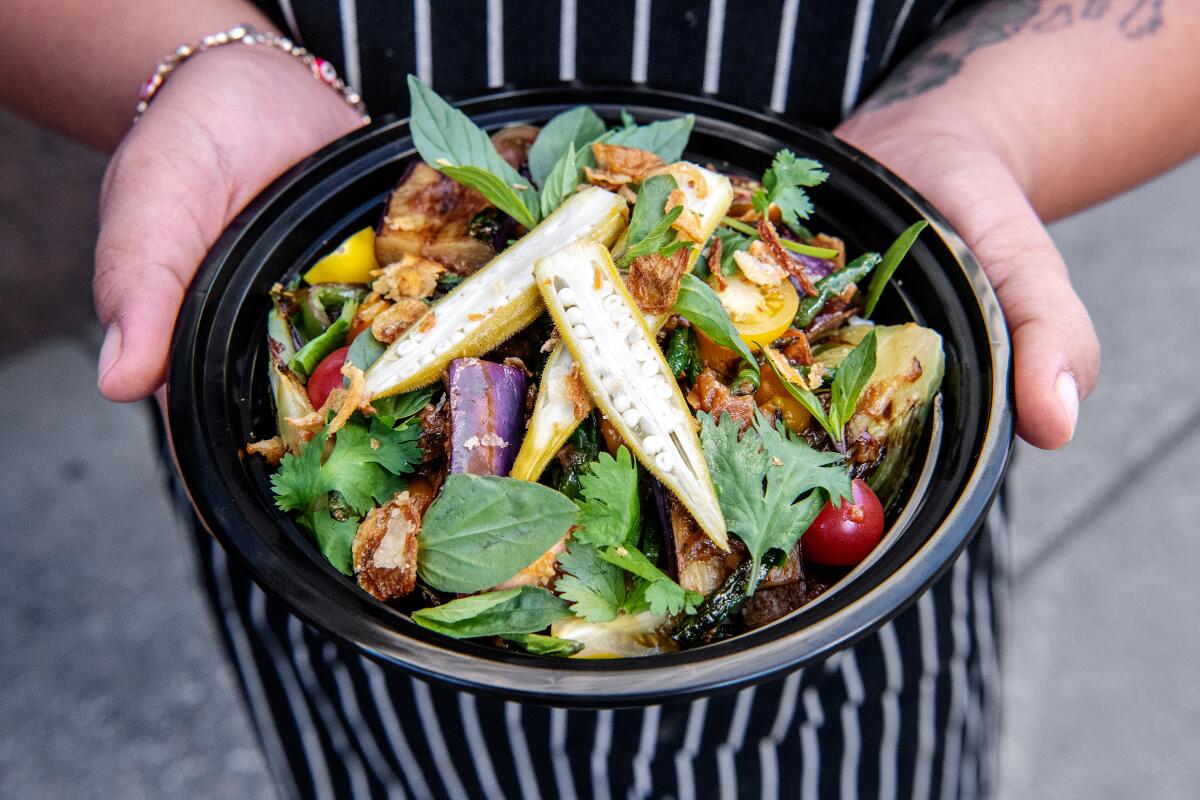
Petite Peso
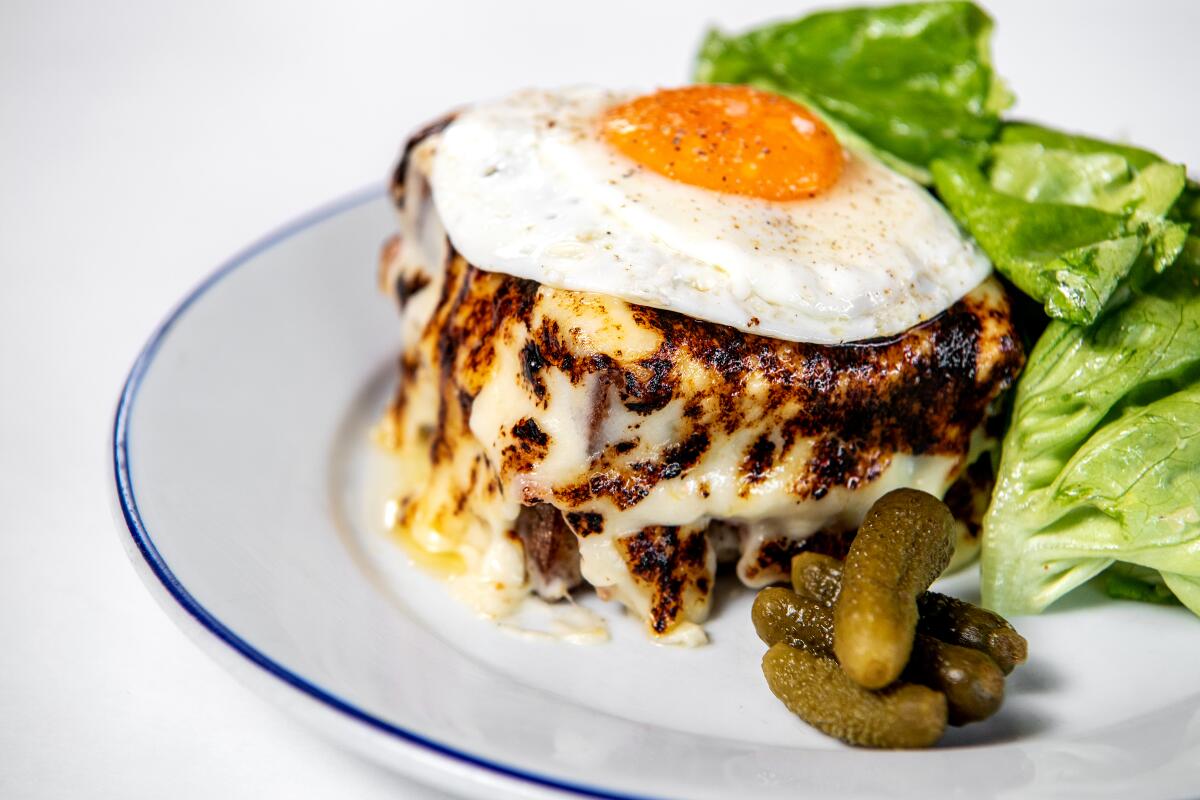
Petit Trois
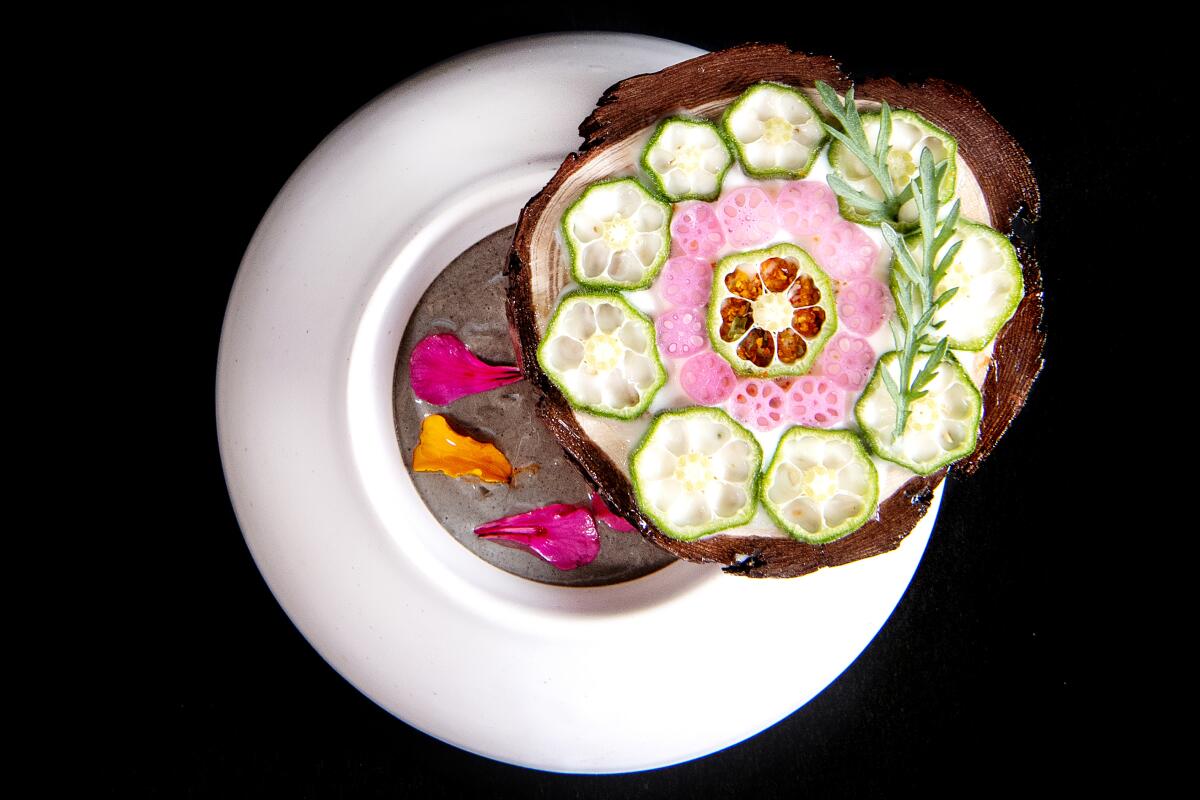
Phenakite
The cooking is astounding, and it defies easy labeling. Black sesame vichyssoise, lardon-stuffed mochi and porridge gilded with brown butter and smoked abalone liver ignite under Phan’s signature touches: savory jams made from scraps of fruits and vegetables that might otherwise go to waste, pickles and other acidic sparks. Of equal importance: A spirit of kindness animates the project. Phan comes to the table and sets up a fish course for each guest. Her eyes dance and crinkle at the corners while she chats; you know she is smiling behind her mask. She embodies welcome.
Phenakite is the Times’ 2021 Restaurant of the Year.
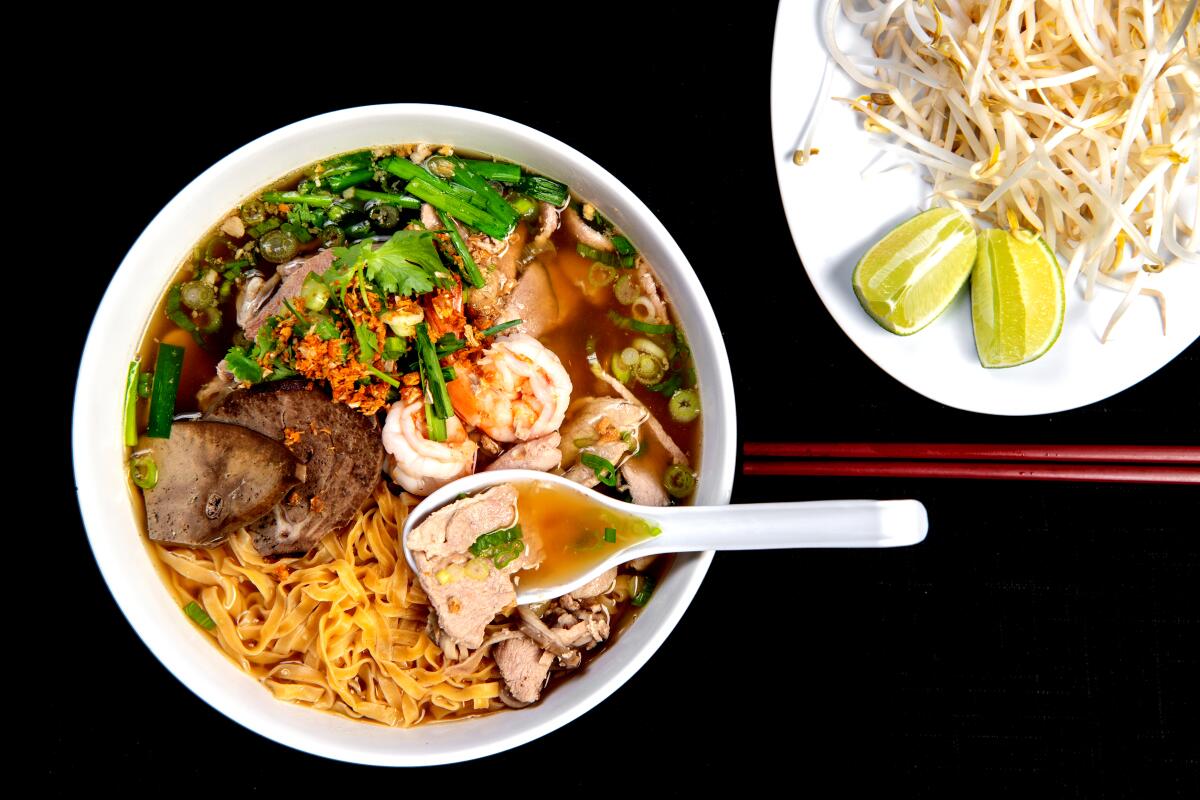
Phnom Penh Noodle Shack
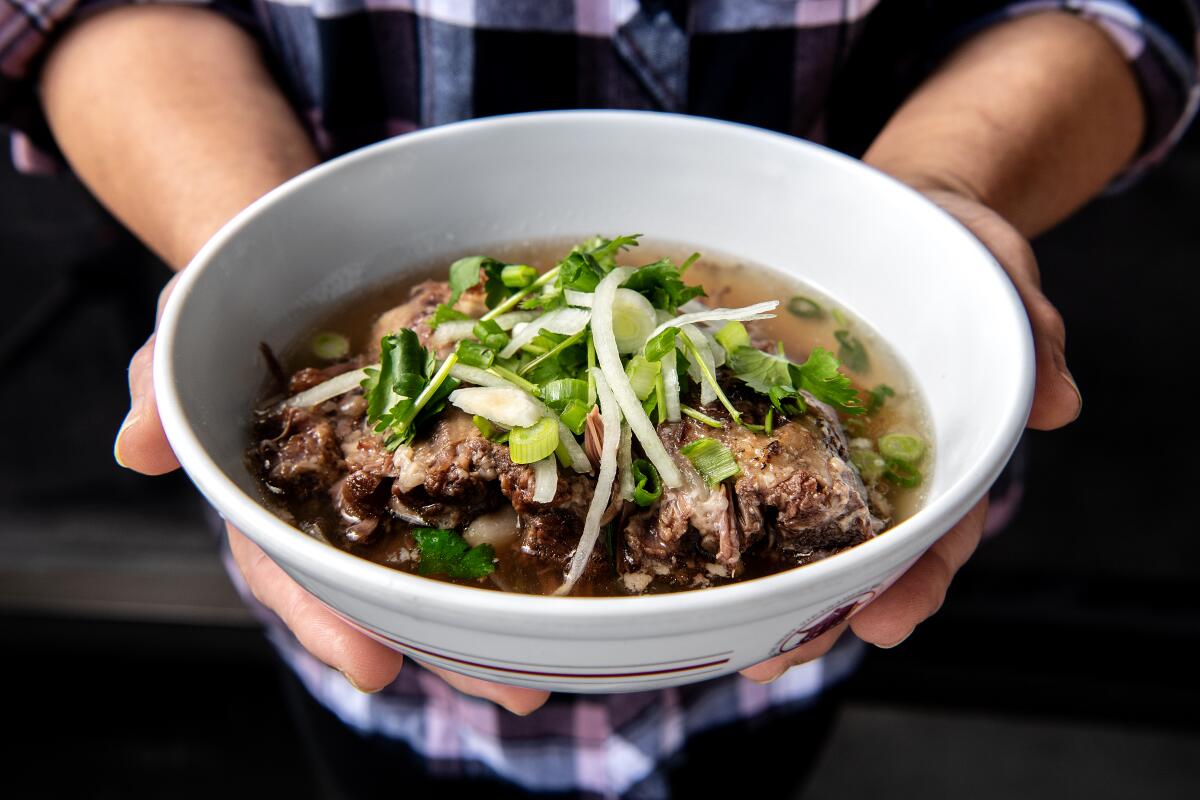
Pho 79
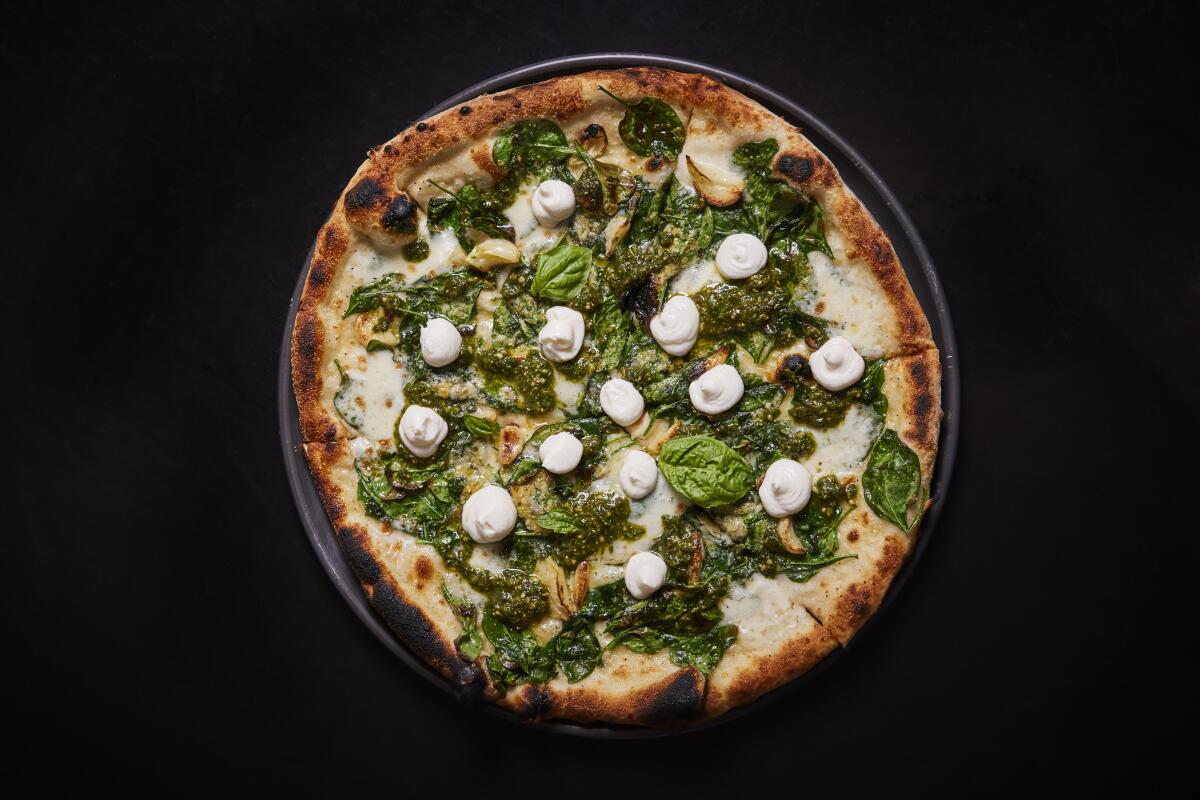
Pizzana
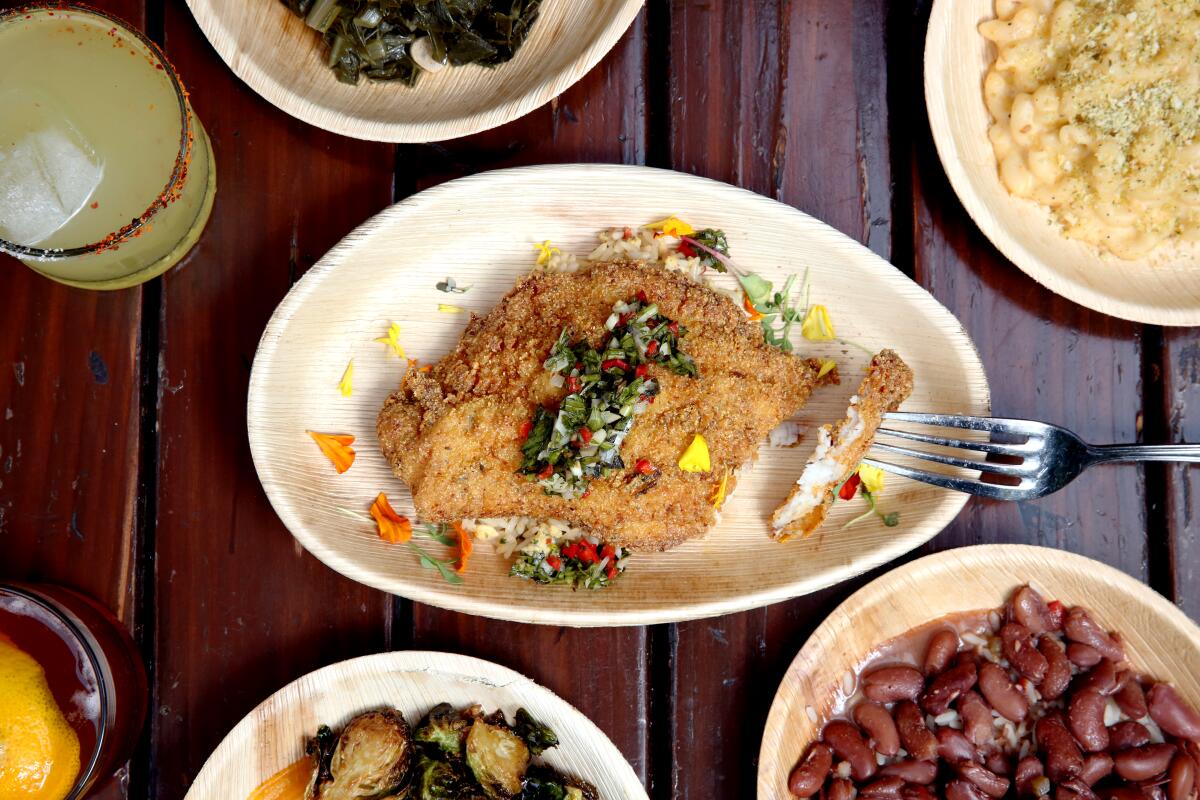
Post & Beam
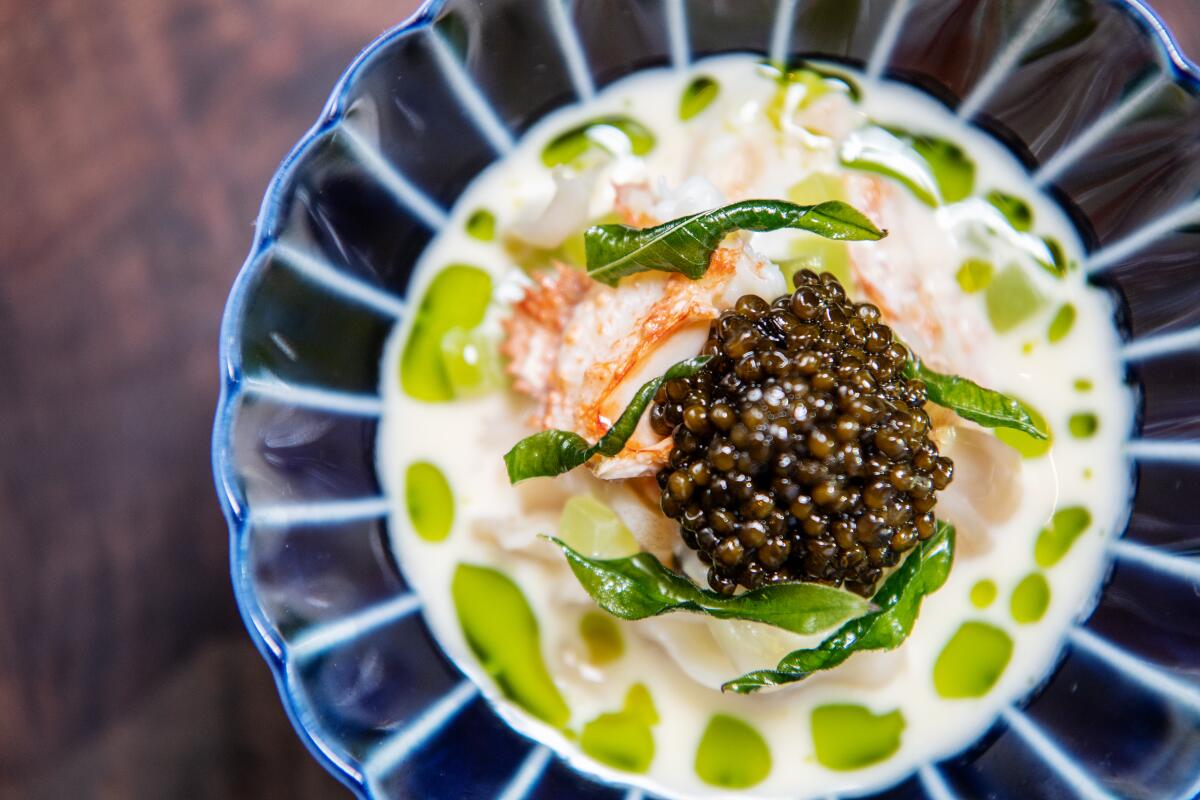
Providence
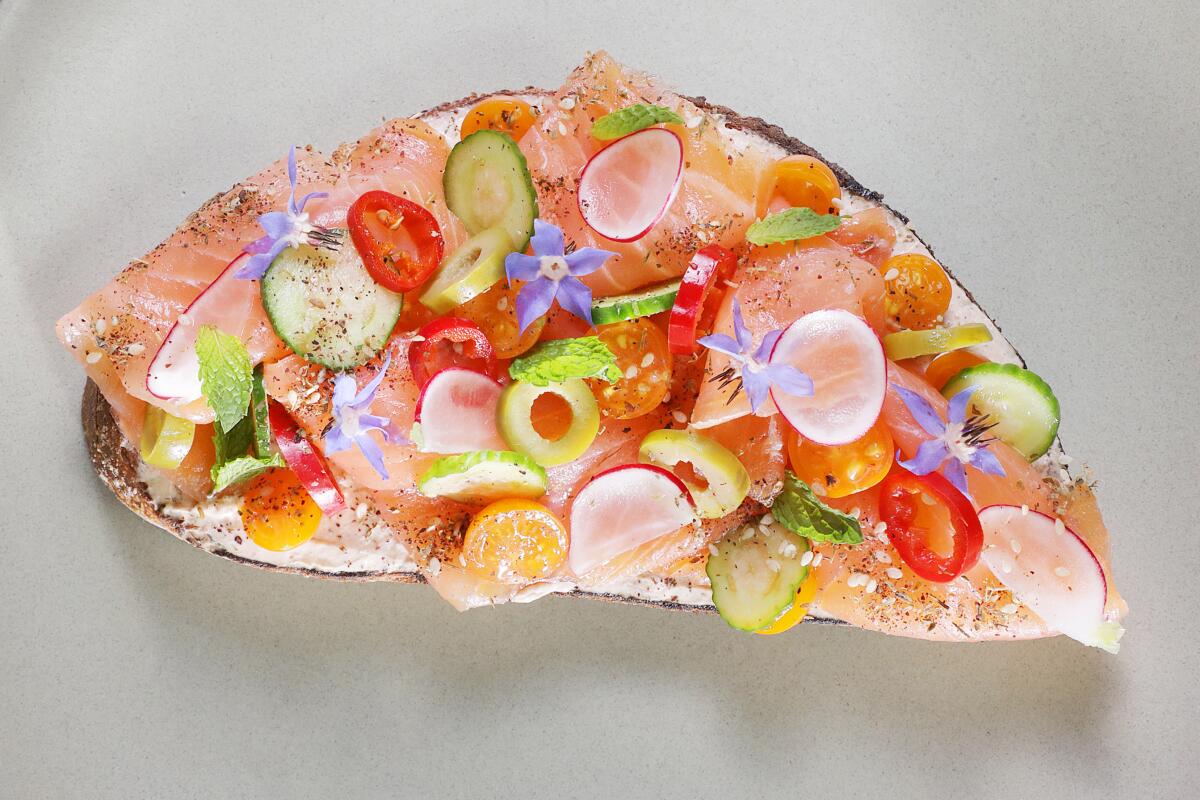
République
Some notes: The line for breakfast usually trails out the door, but if you plan ahead you can order Margarita’s croissants, crostatas, danishes and savory hand pies for next-day pickup. Kimchi fried rice, mushroom toast with ham and eggs and an excellent vegetarian pupusa are available all morning (as are definitive omelets and French toast); the dry-aged burger is available after 11 a.m. And a few months ago I had dinner with a former colleague visiting from Charleston, S.C. She was turning 40. After République’s baguette with Normandy butter and pan drippings (imagine Thanksgiving gravy reduced to meat syrup), tomato and nectarine salad, sweet corn agnolotti, roasted duck breast and confit leg in blackberry-peppercorn sauce and at least half a dozen other dishes, she said, “I understand why people say L.A. has the best dining scene in America.” My work was done.
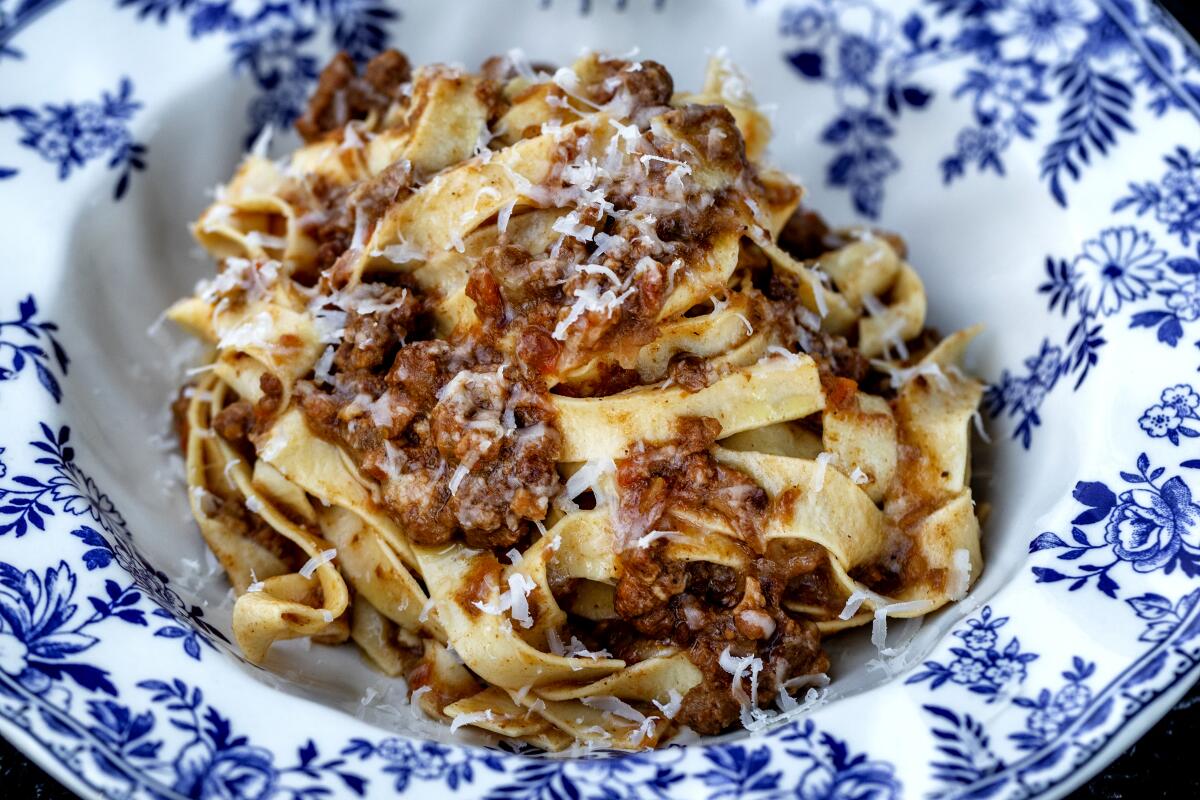
Rossoblu
Topping the list: minestra nel sacco, square-ish Parmigiano-Reggiano dumplings cooked in a cloth bag and served in chicken and beef broth. Sometimes for a soup variation there’s sfoglia lorda (mini ridged ravioli, literally “dirty dough”) en brodo. Among the pastas handmade by dough maestro Francesco Allegro, the supple, restrained tagliatelle al ragù Bolognese holds sway. Pair it with maltagliati (“badly cut”; the name is a misnomer in this exacting kitchen) tangled with mushrooms and sharp dandelion greens. Nights have grown chillier, so the light-handed, utterly correct lasagna should be reappearing anytime now.
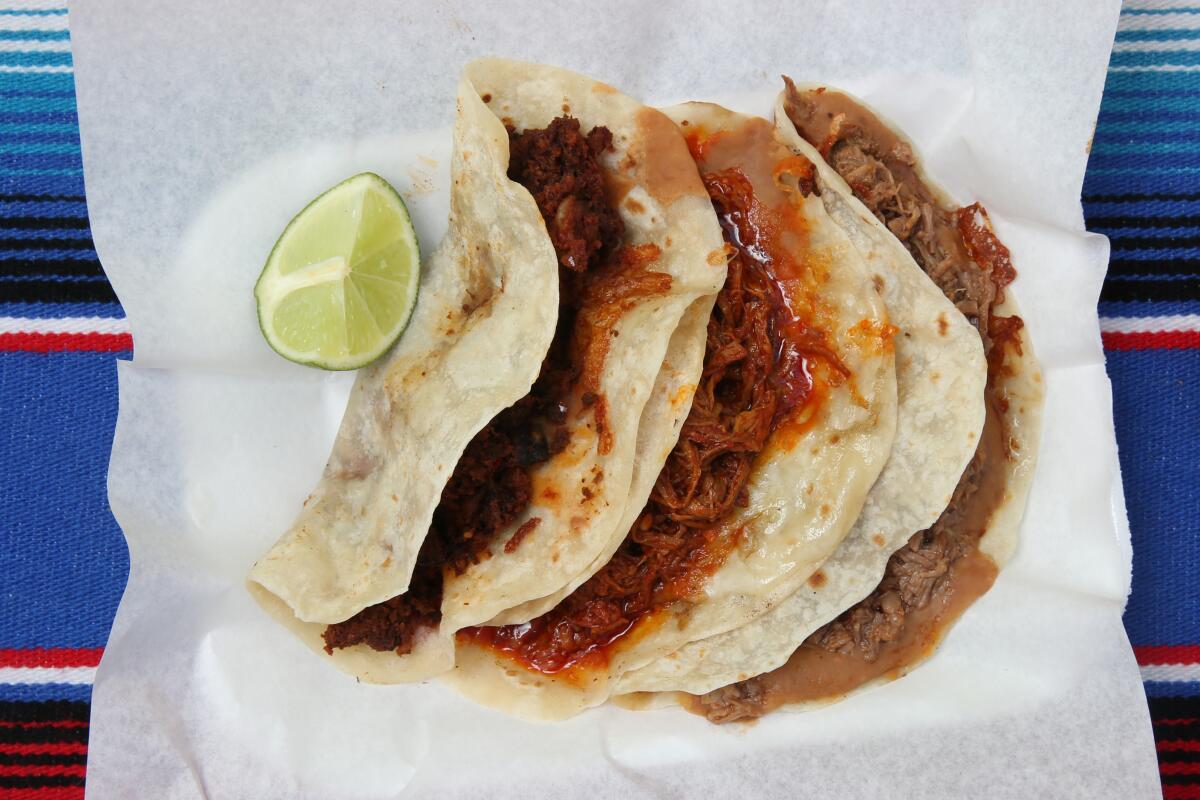
El Ruso
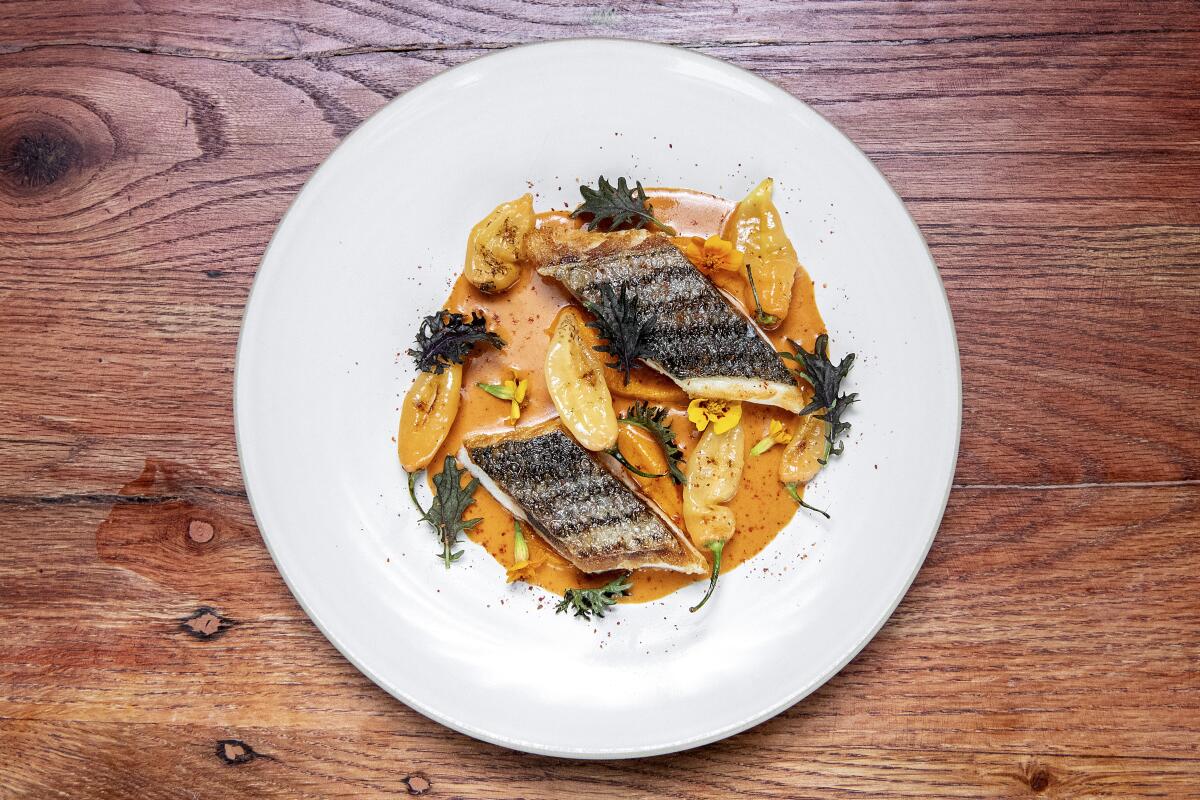
Rustic Canyon
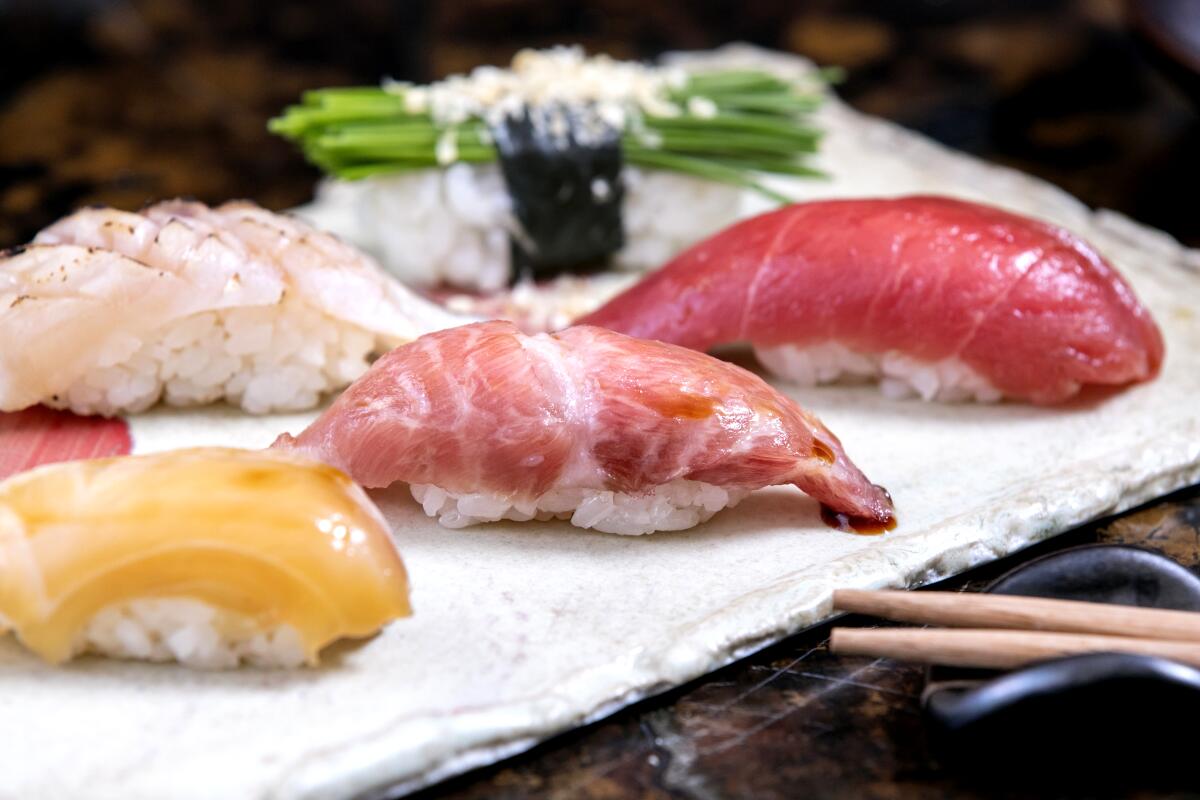
Shin Sushi
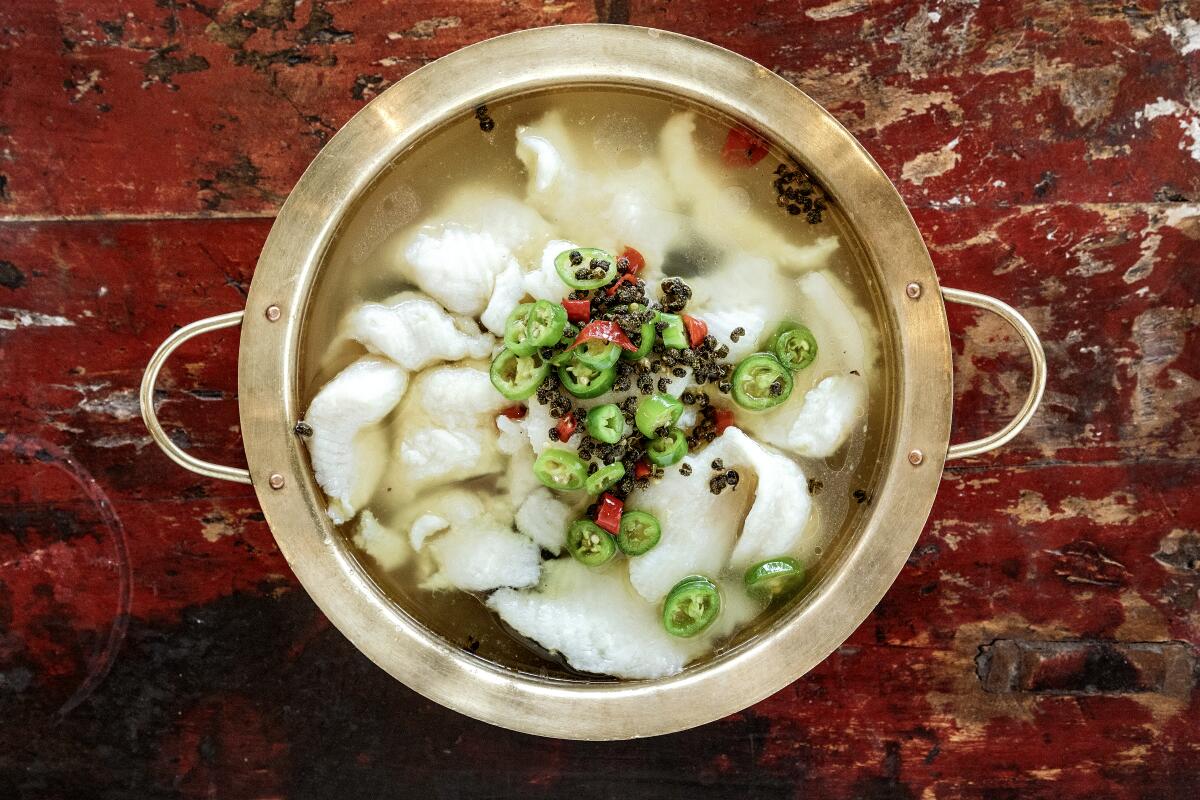
Sichuan Impression
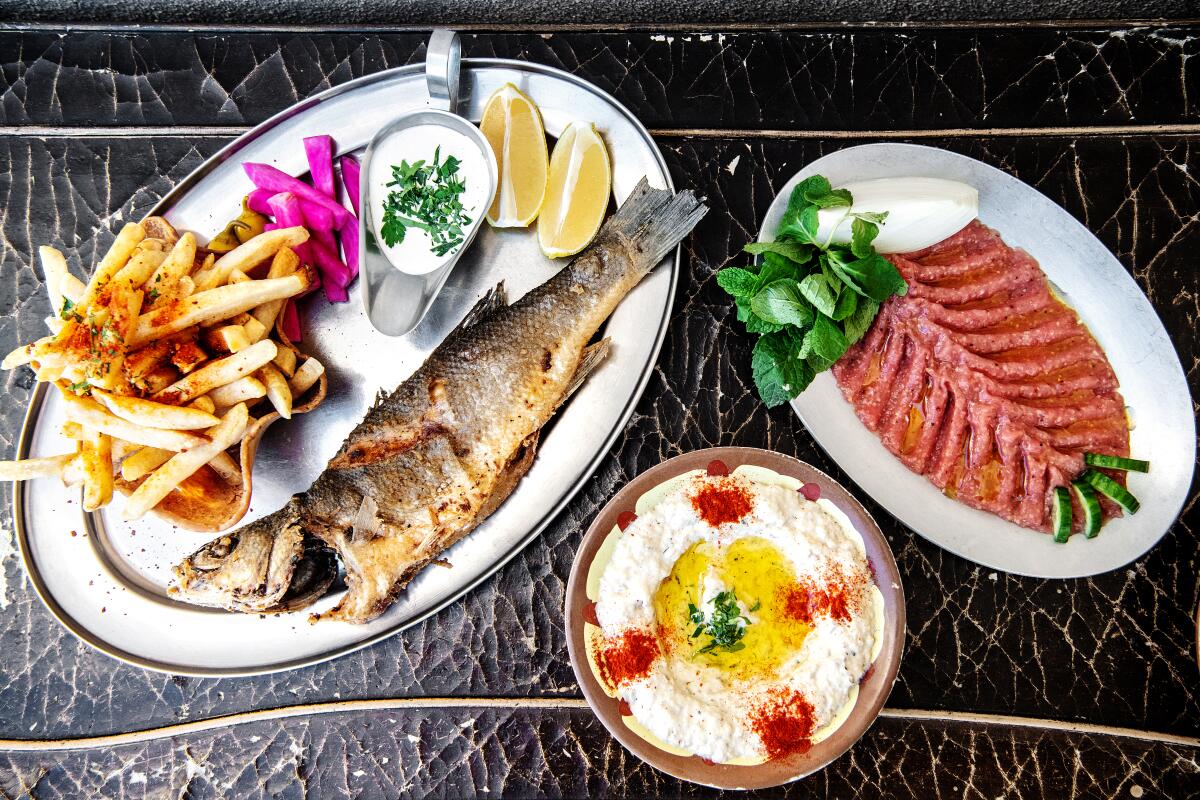
Skaf’s
Falafel has infinite variations. Skaf’s conjures the fluffy-crisp, cumin-scented versions you’d find in Beirut, where you watch cooks frying spheres in small vats, batch after batch, through storefront windows. Be liberal with the tahini sauce.
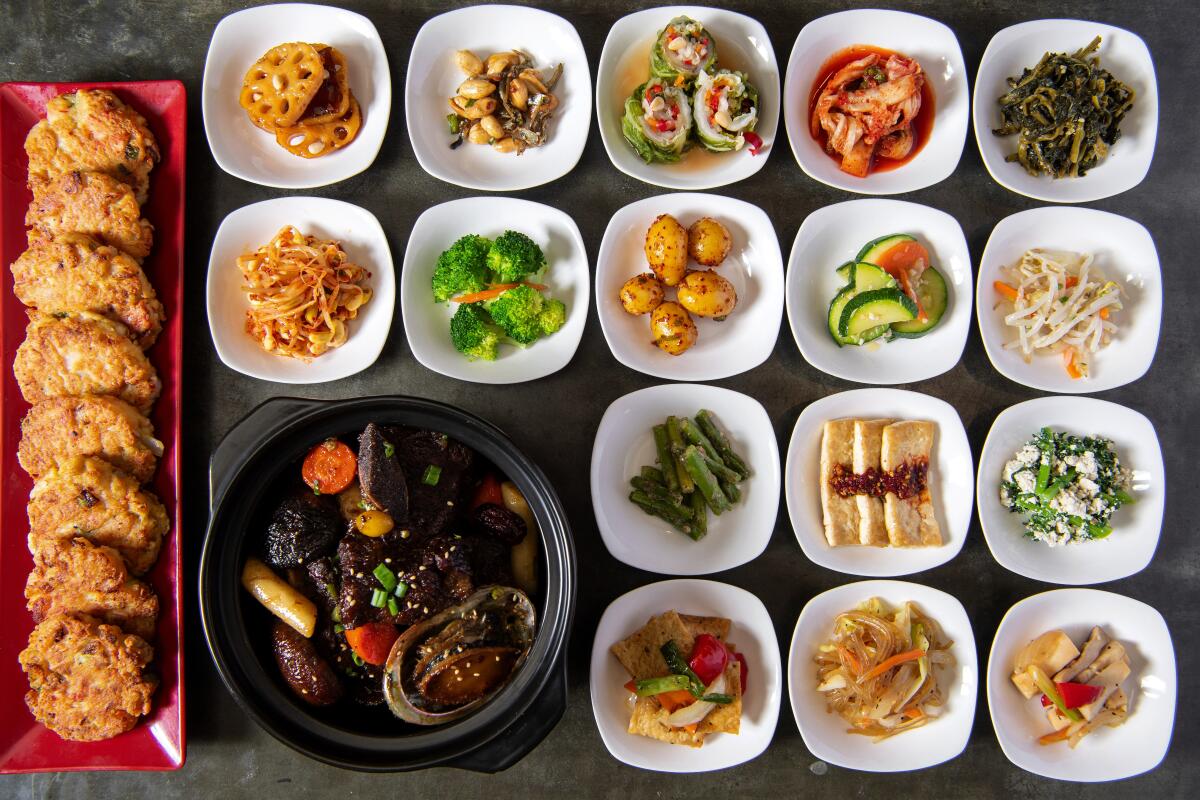
Soban
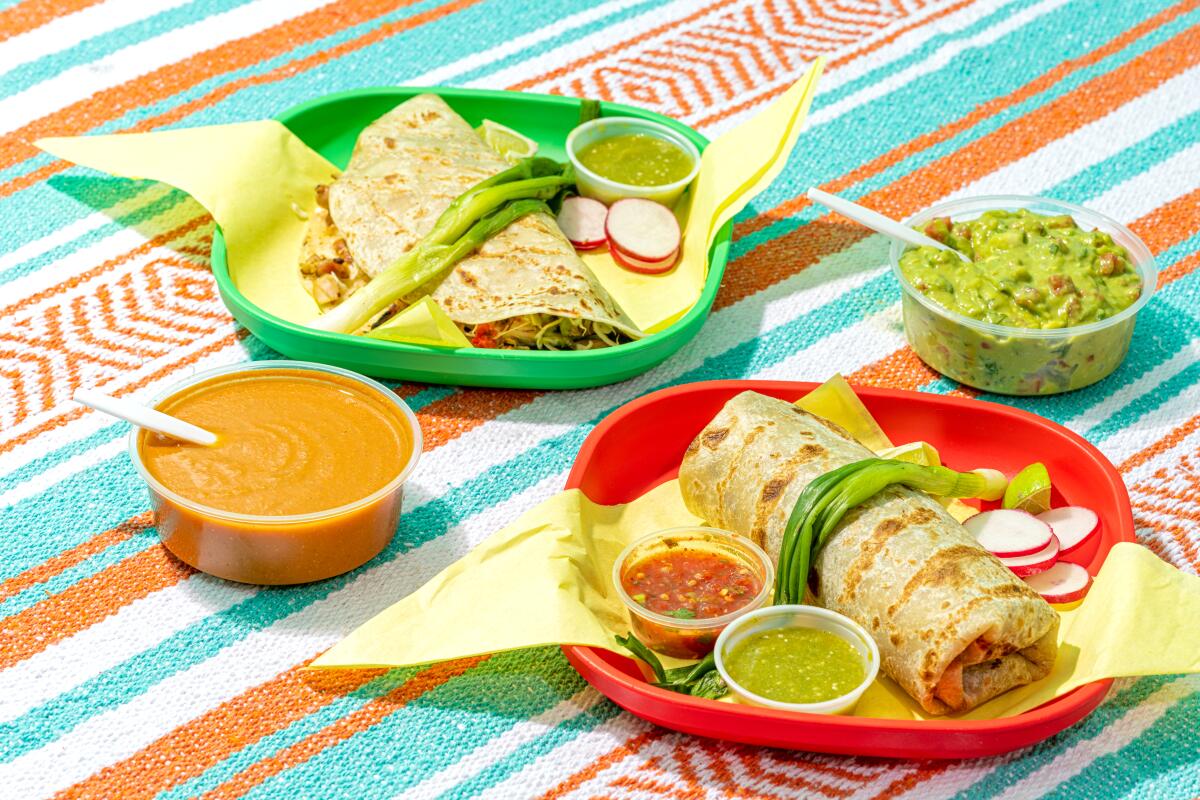
Sonoratown
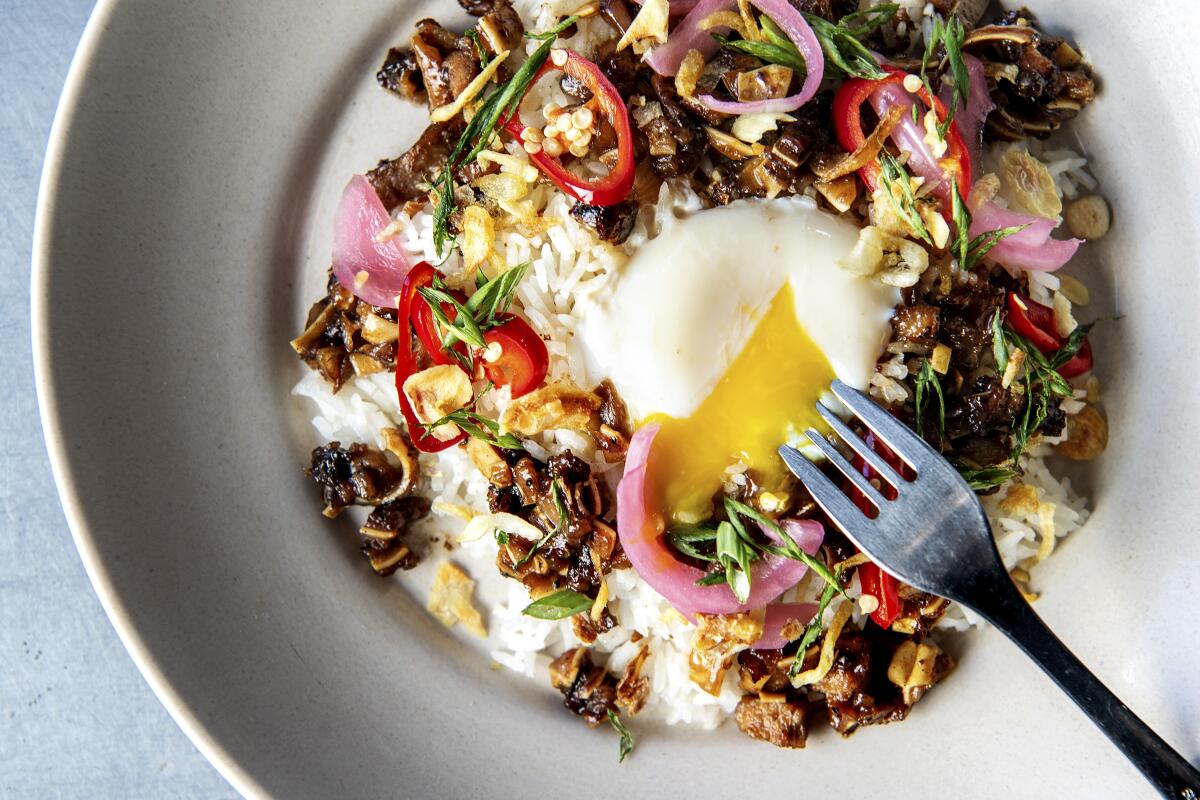
Spoon & Pork
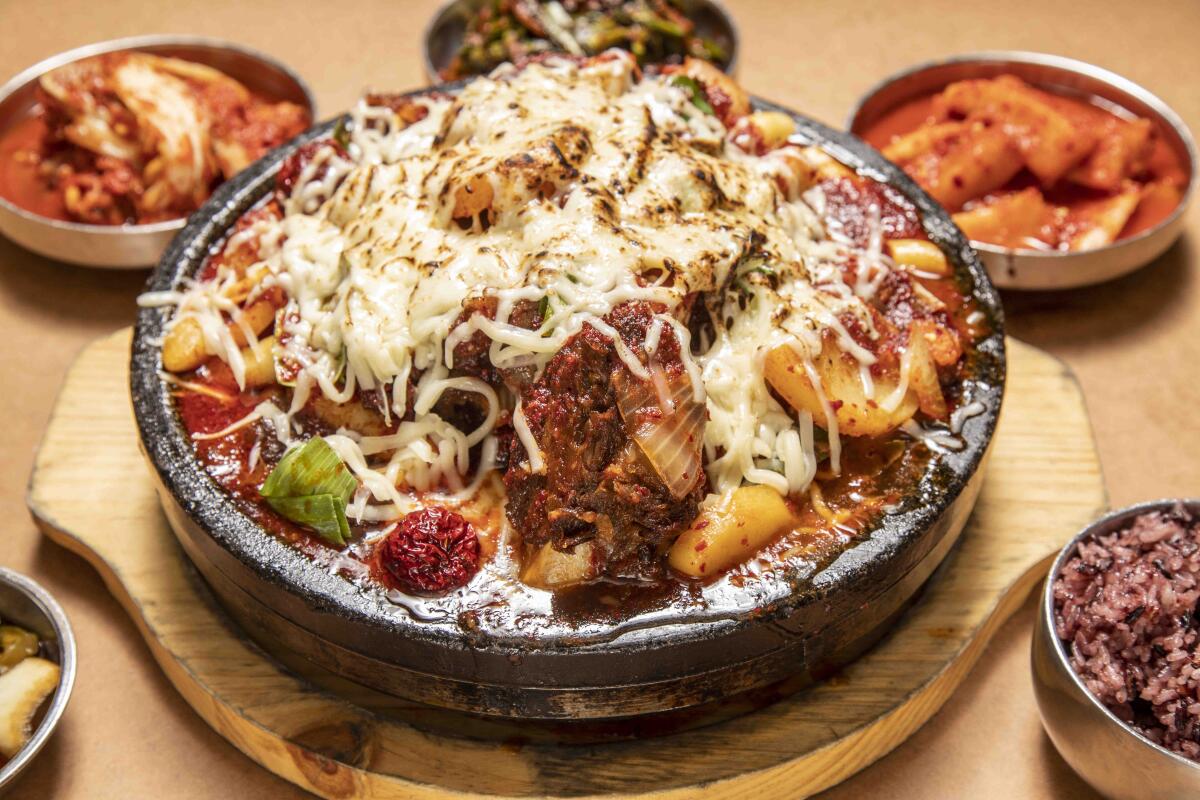
Sun Nong Dan
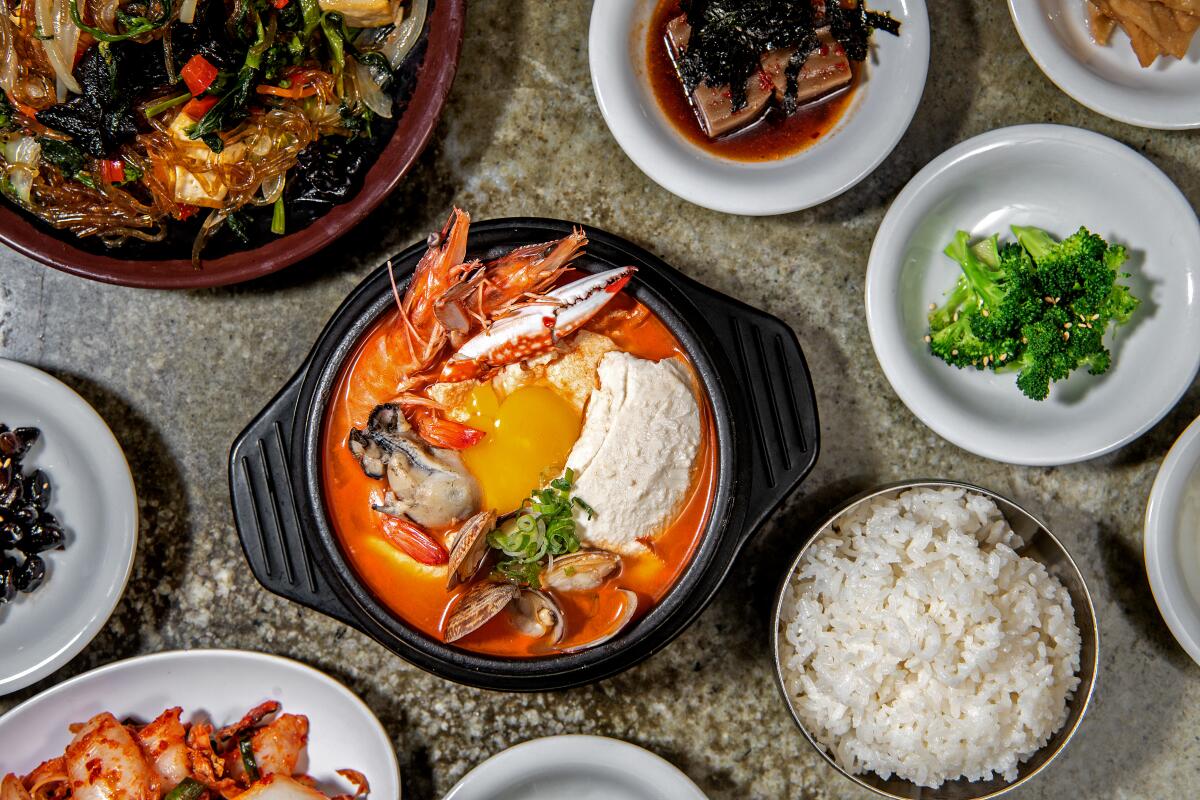
Surawon Tofu House
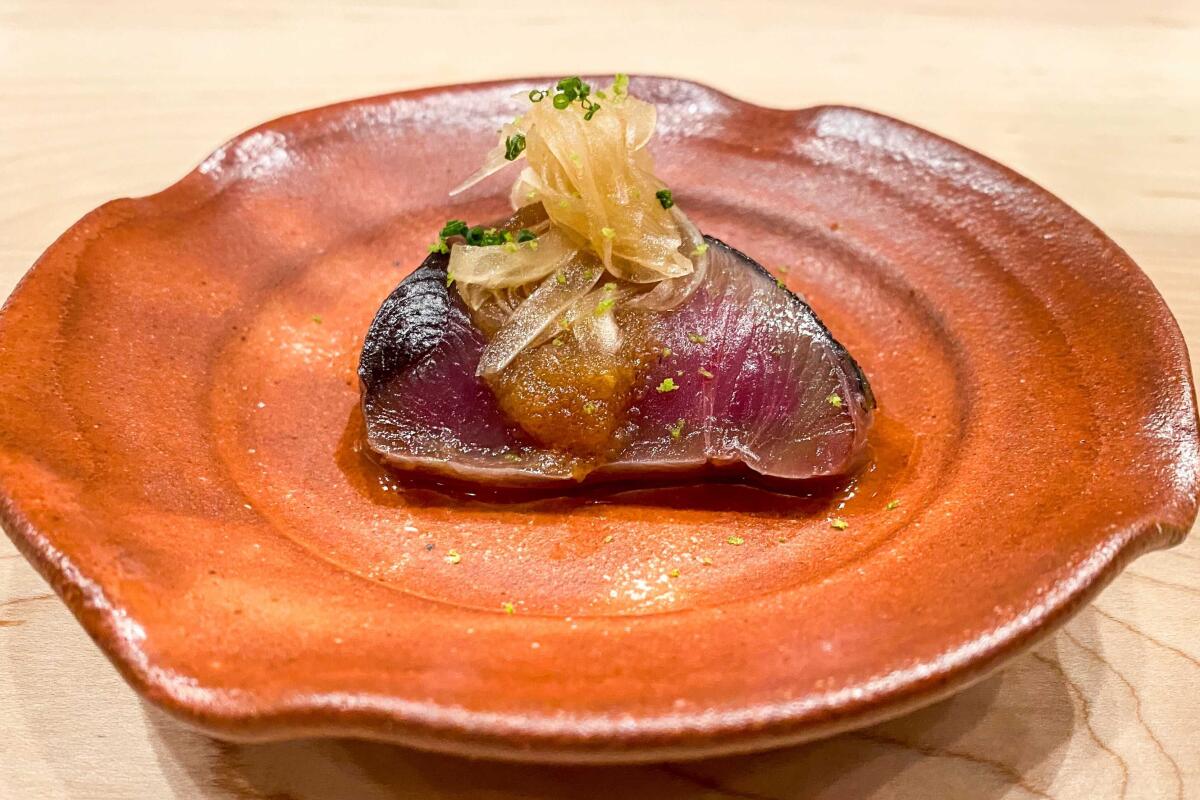
Sushi Kaneyoshi
A few preambles might include citrusy chawanmushi laced with hairy crab from Hokkaido, tachiuo (beltfish) tempura dotted with caviar, and smoked bonito with pickled onions and ponzu. Then Inoue and his assistant chef, Anthony Nguyen, launch into a procession of edomae-style nigiri, each seasonal seafood aged (or perhaps cured or marinated) and lightly seasoned to maximize its flavors. By the finale — Inoue’s version of futomaki, a roll filled with the evening’s exquisite scraps of seafood — you’re in the master’s trance. This is sushi for connoisseurs, many of whom are already leaping on the monthly release of reservations the nanosecond they’re made available.
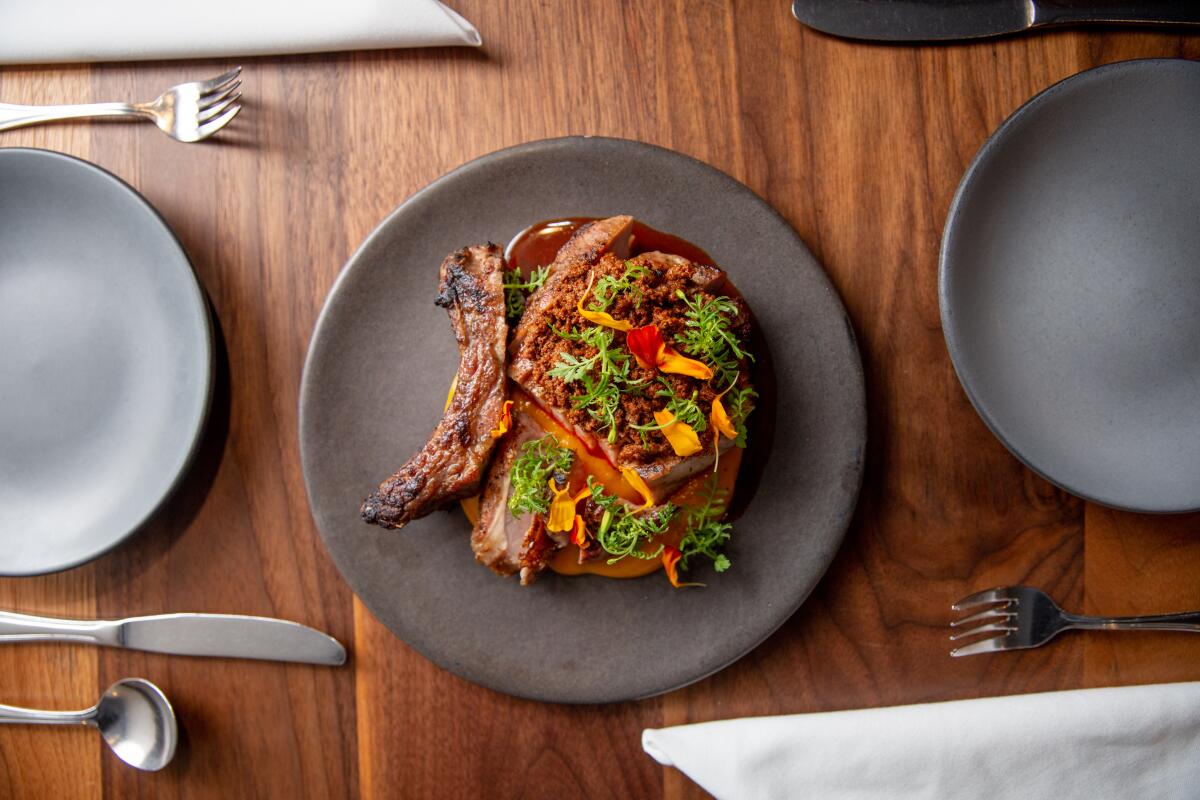
Taco Maria
Begin with prawns fragrant with smoked chile and citrus; wind down with a red corn tamale stained with burnt strawberry and finished with vanilla cream. It has never felt more of a pleasure to navigate the South Coast Collection mall complex and find Taco Maria as the prize in the center of the maze.
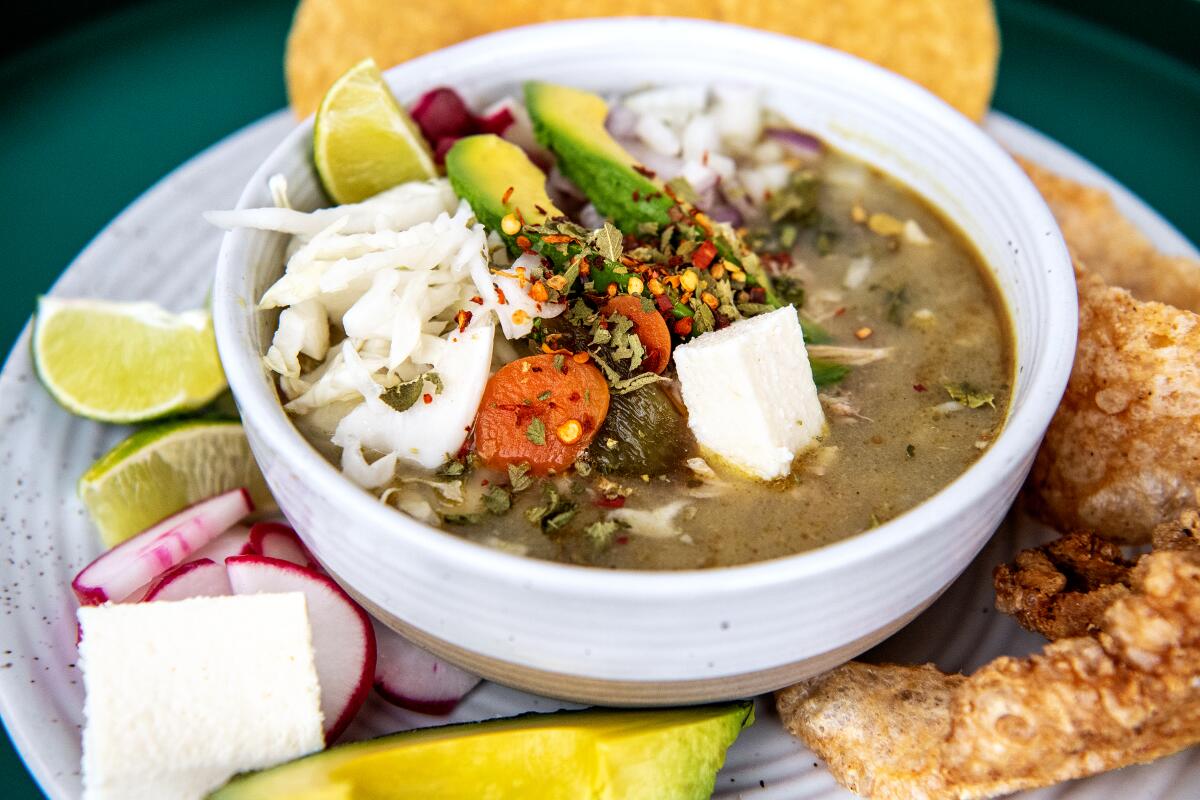
Tamales Elena y Antojitos
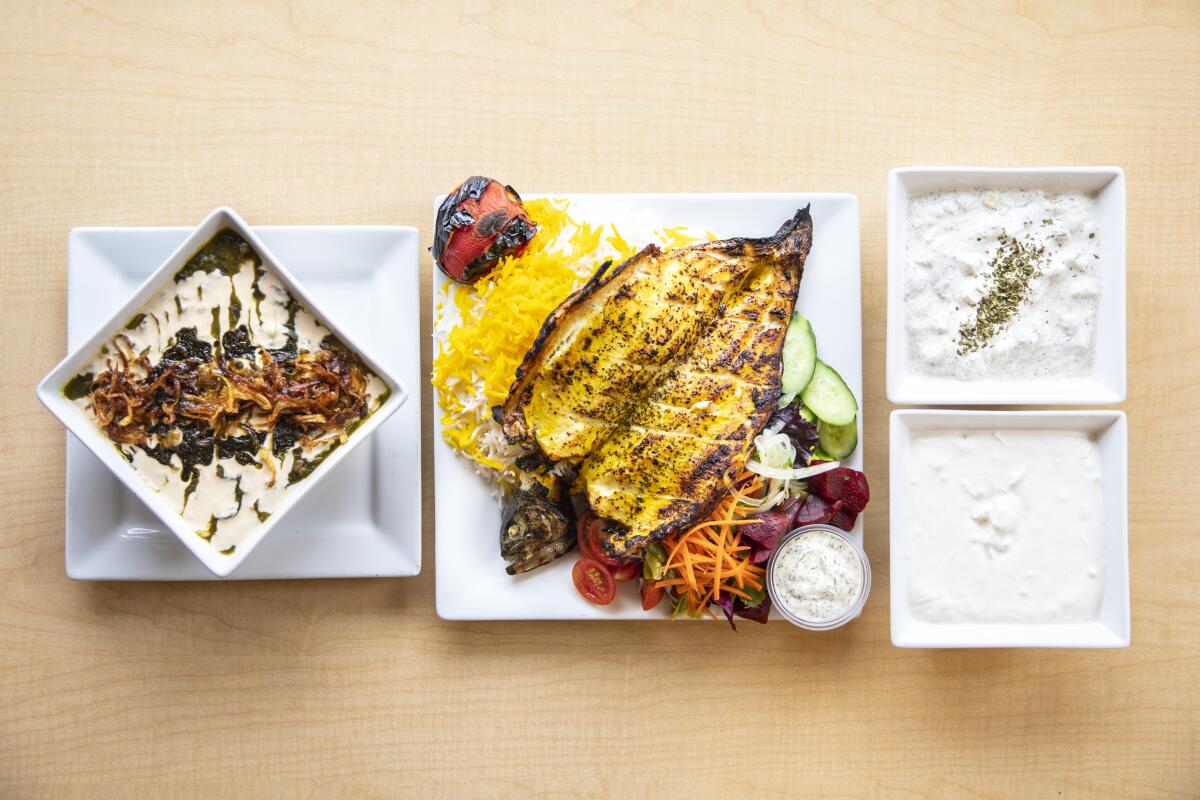
Taste of Tehran
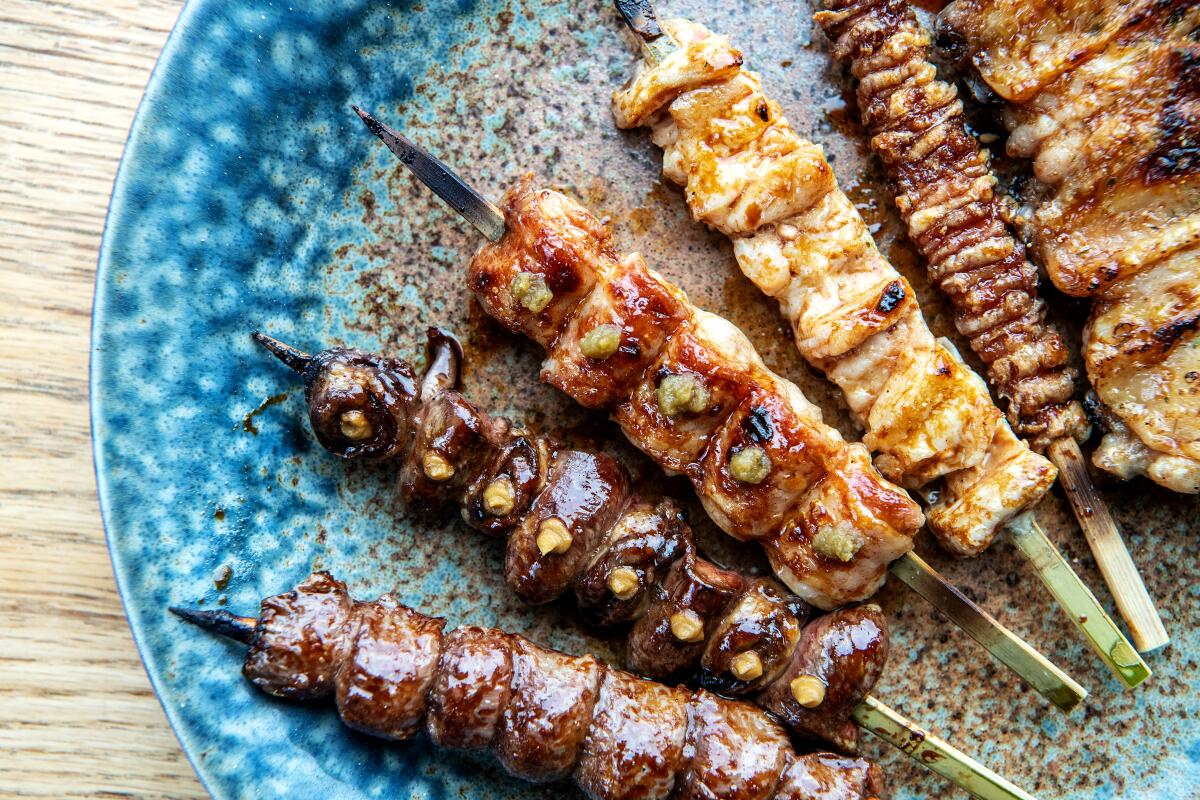
Tsubaki
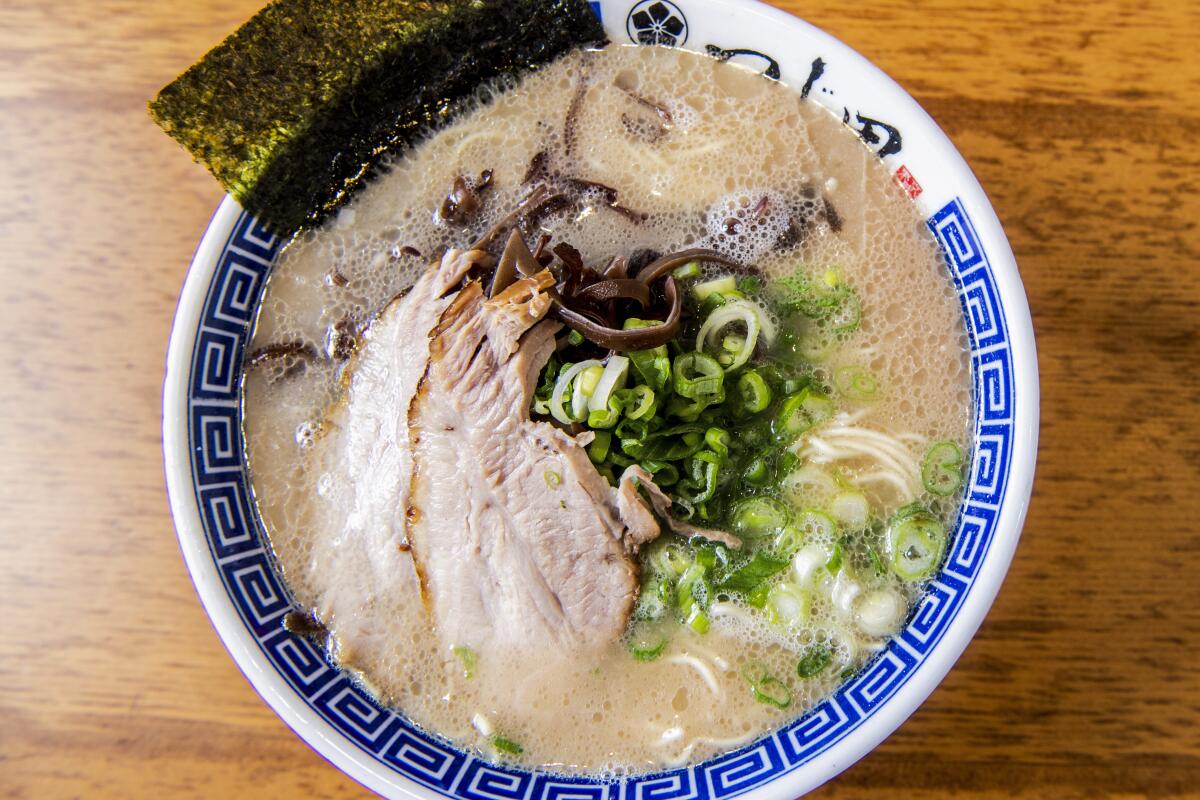
Tsujita
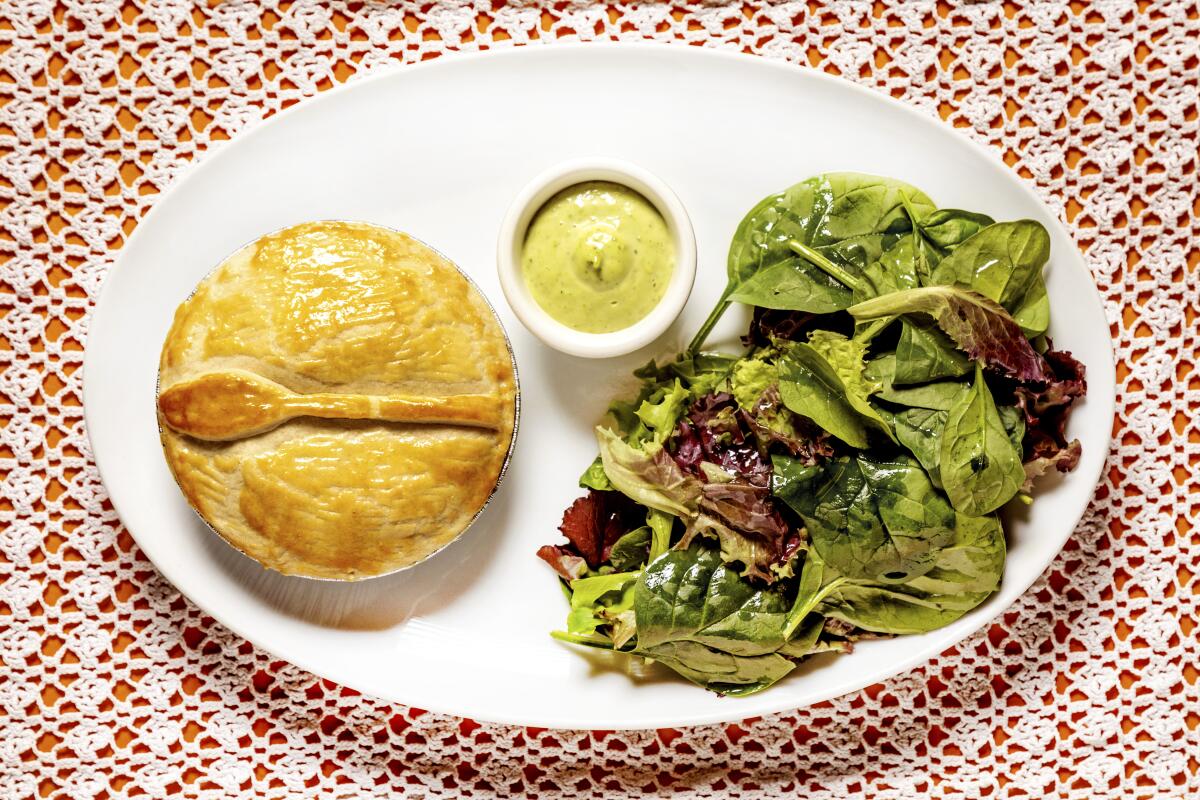
Woodspoon
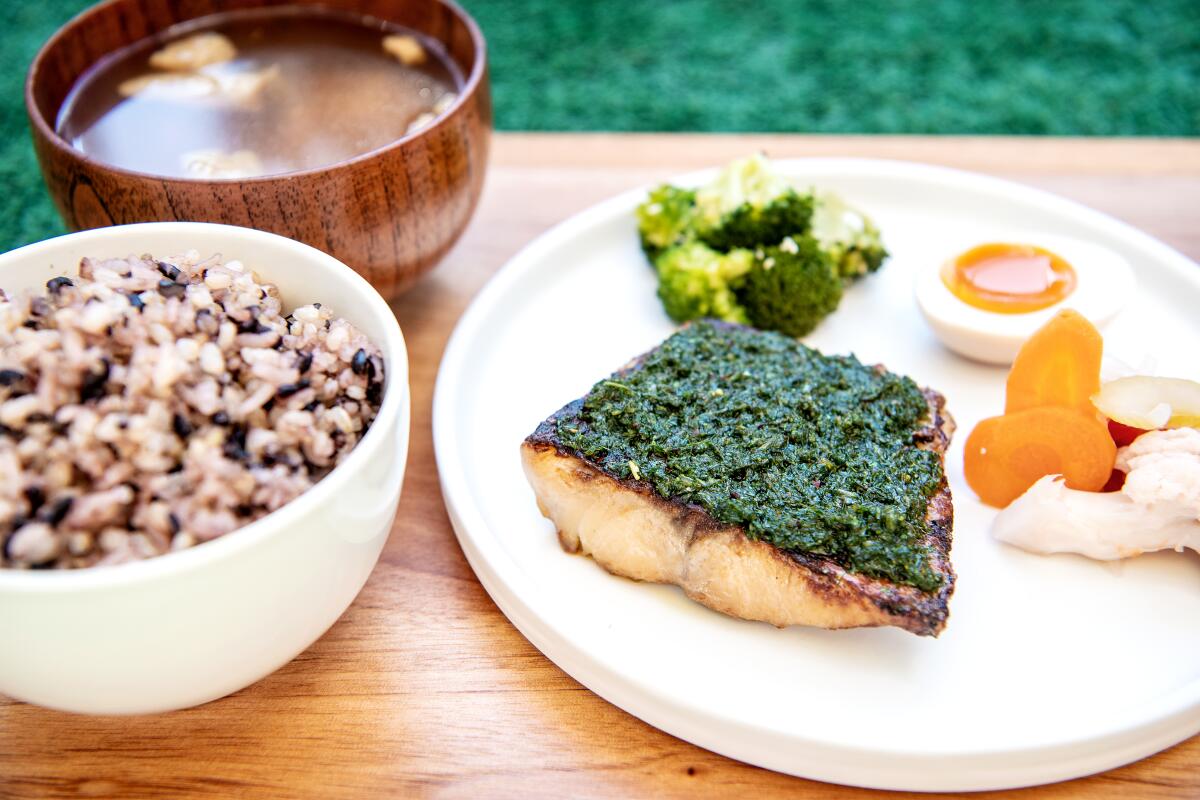
Yang’s Kitchen
Eat your way across L.A.
Get our weekly Tasting Notes newsletter for reviews, news and more.
You may occasionally receive promotional content from the Los Angeles Times.




